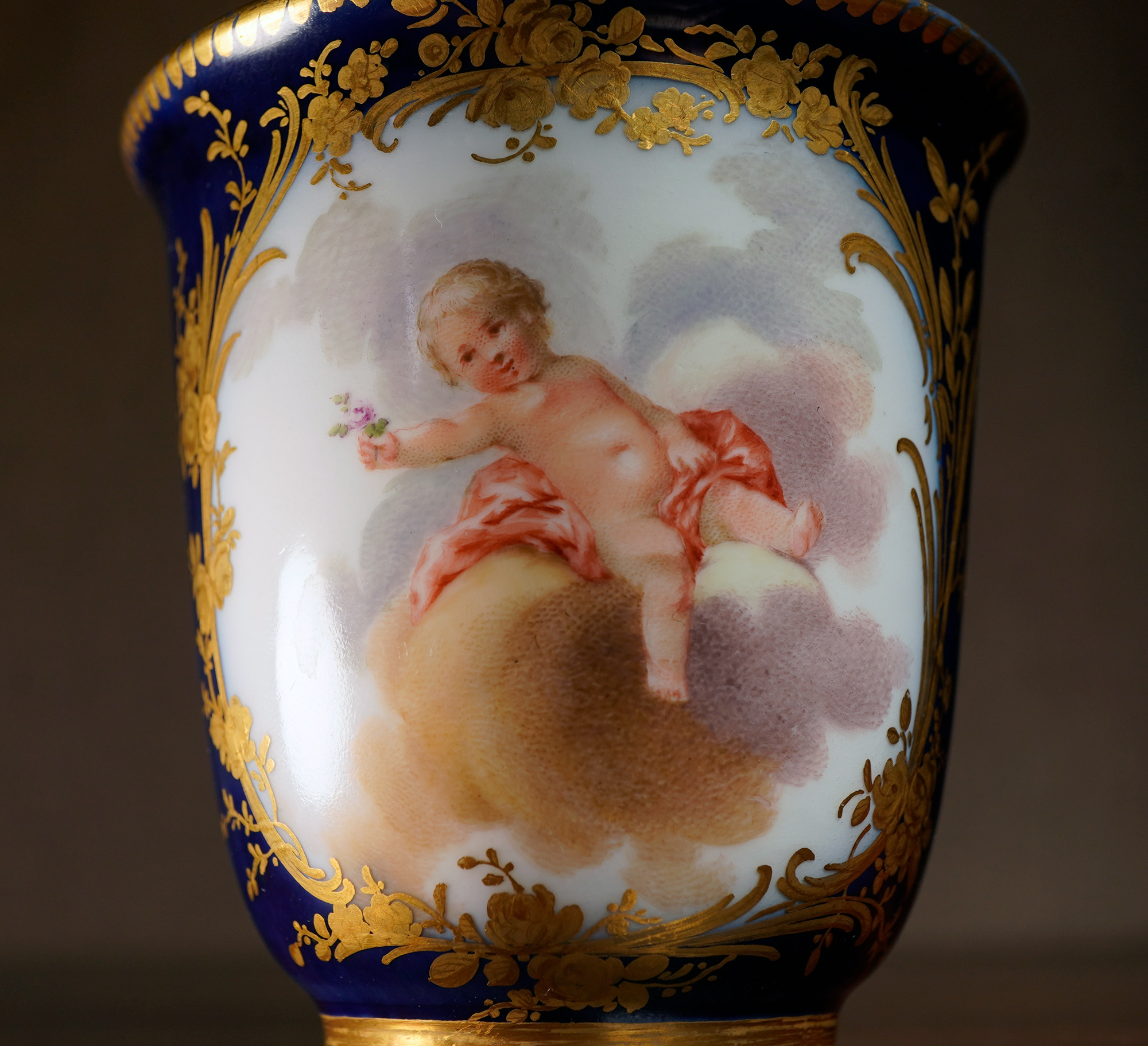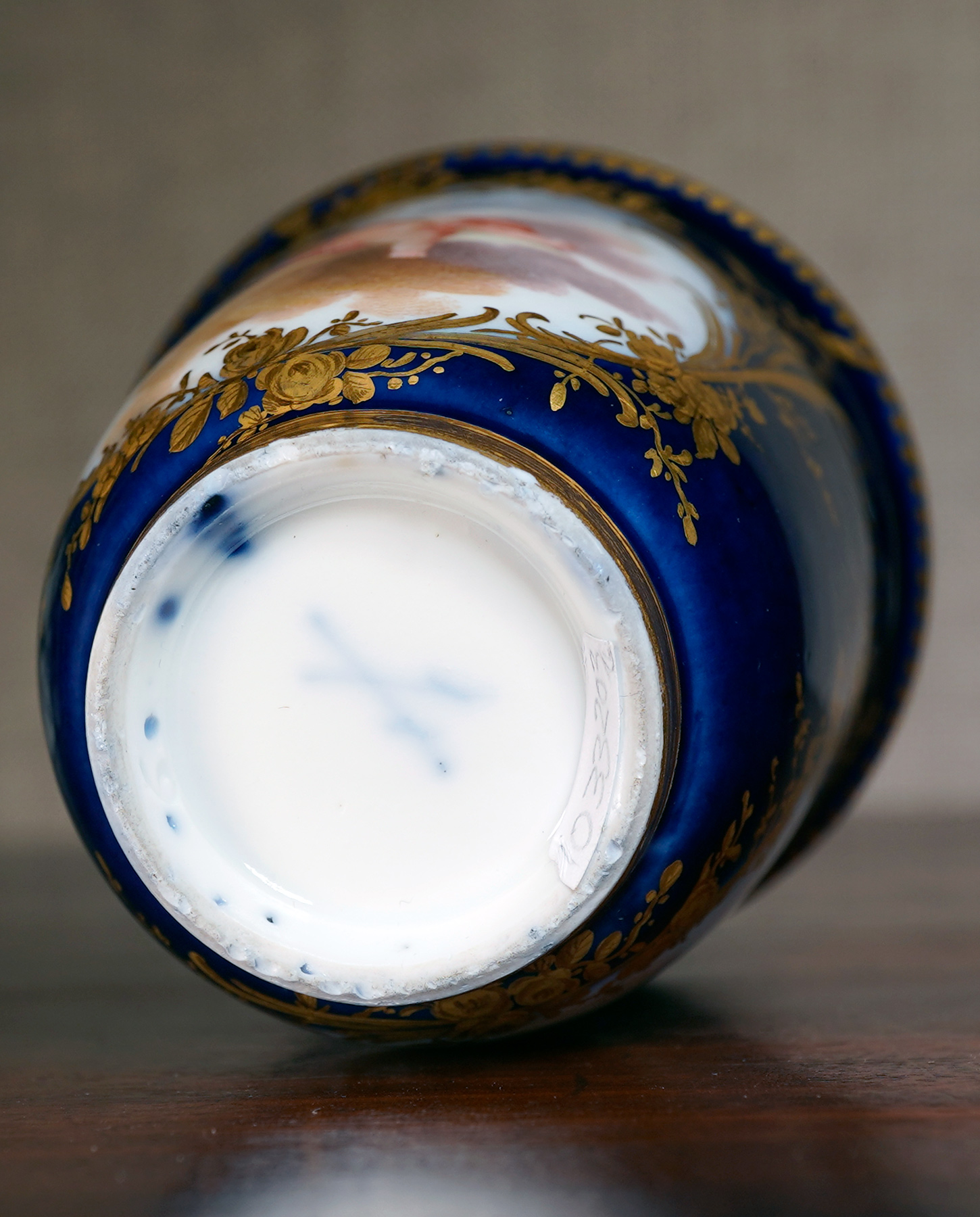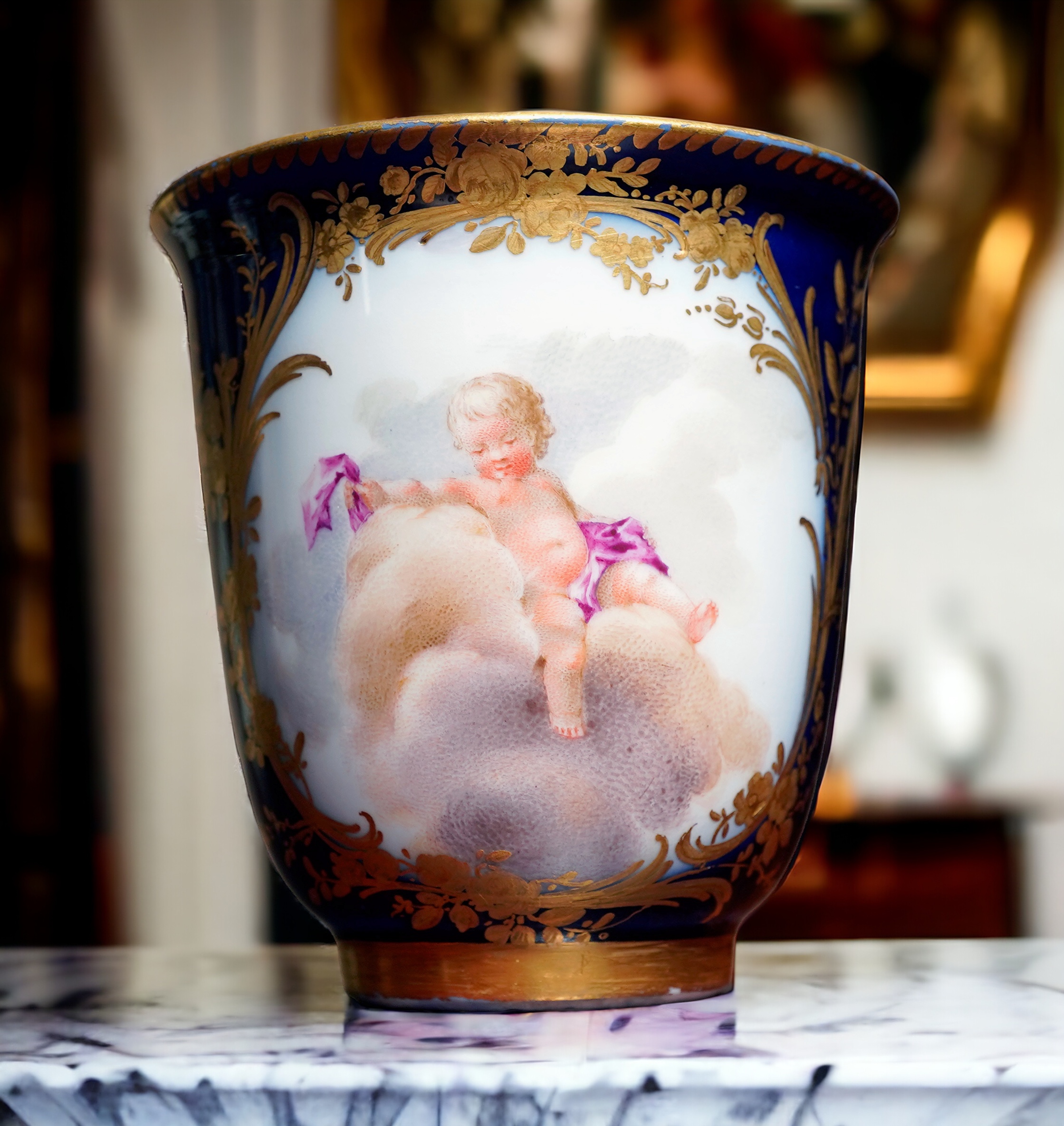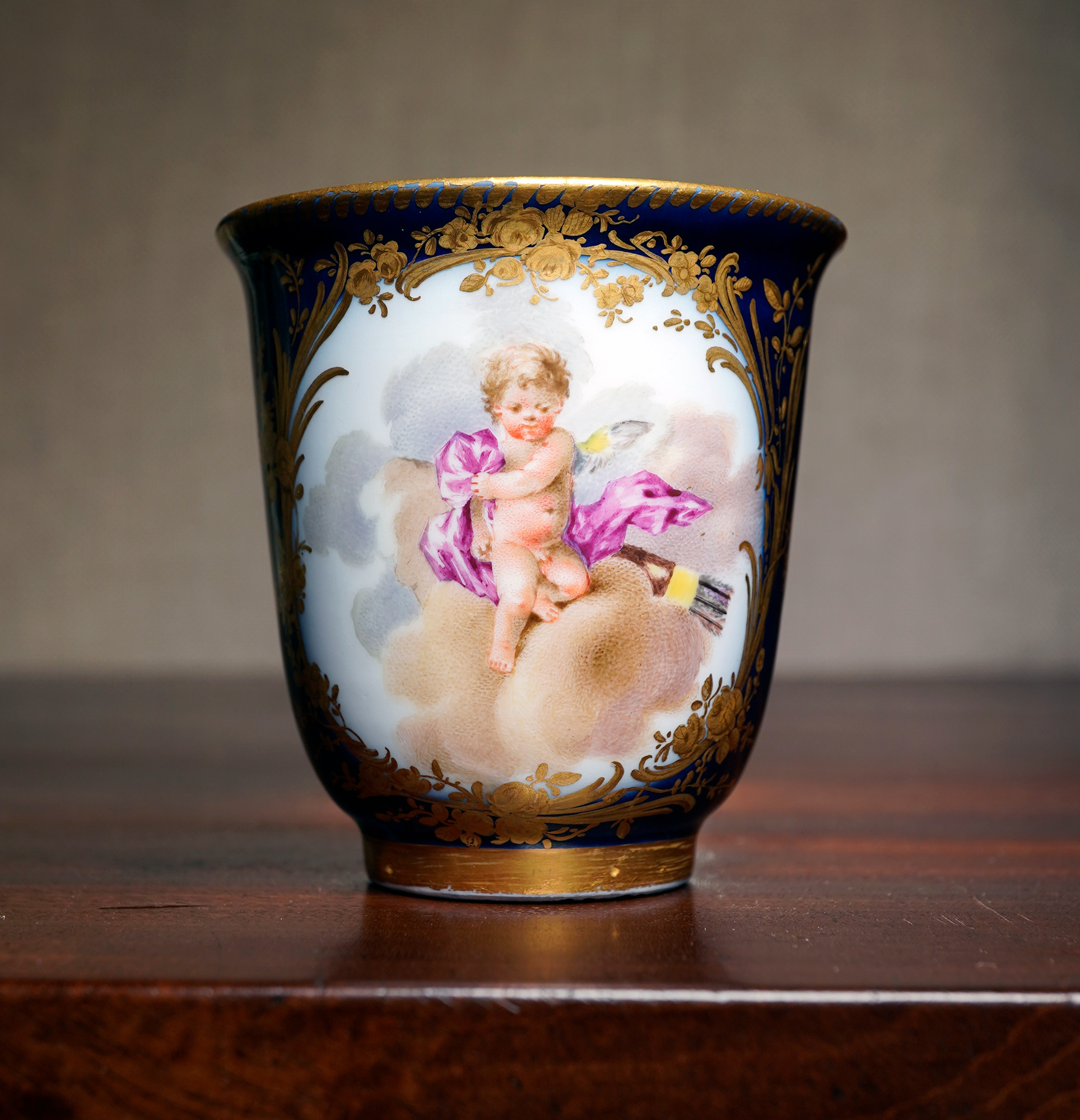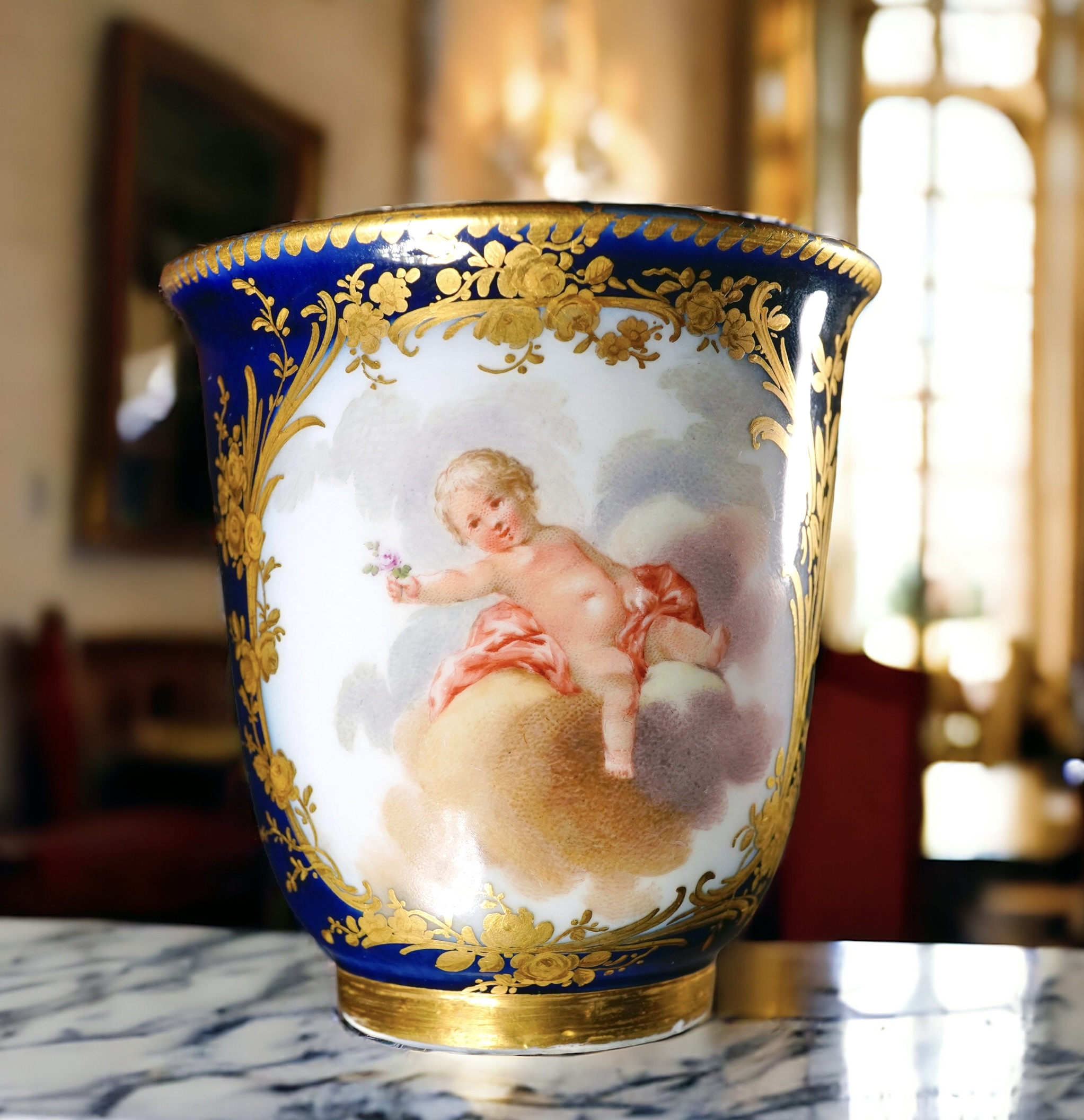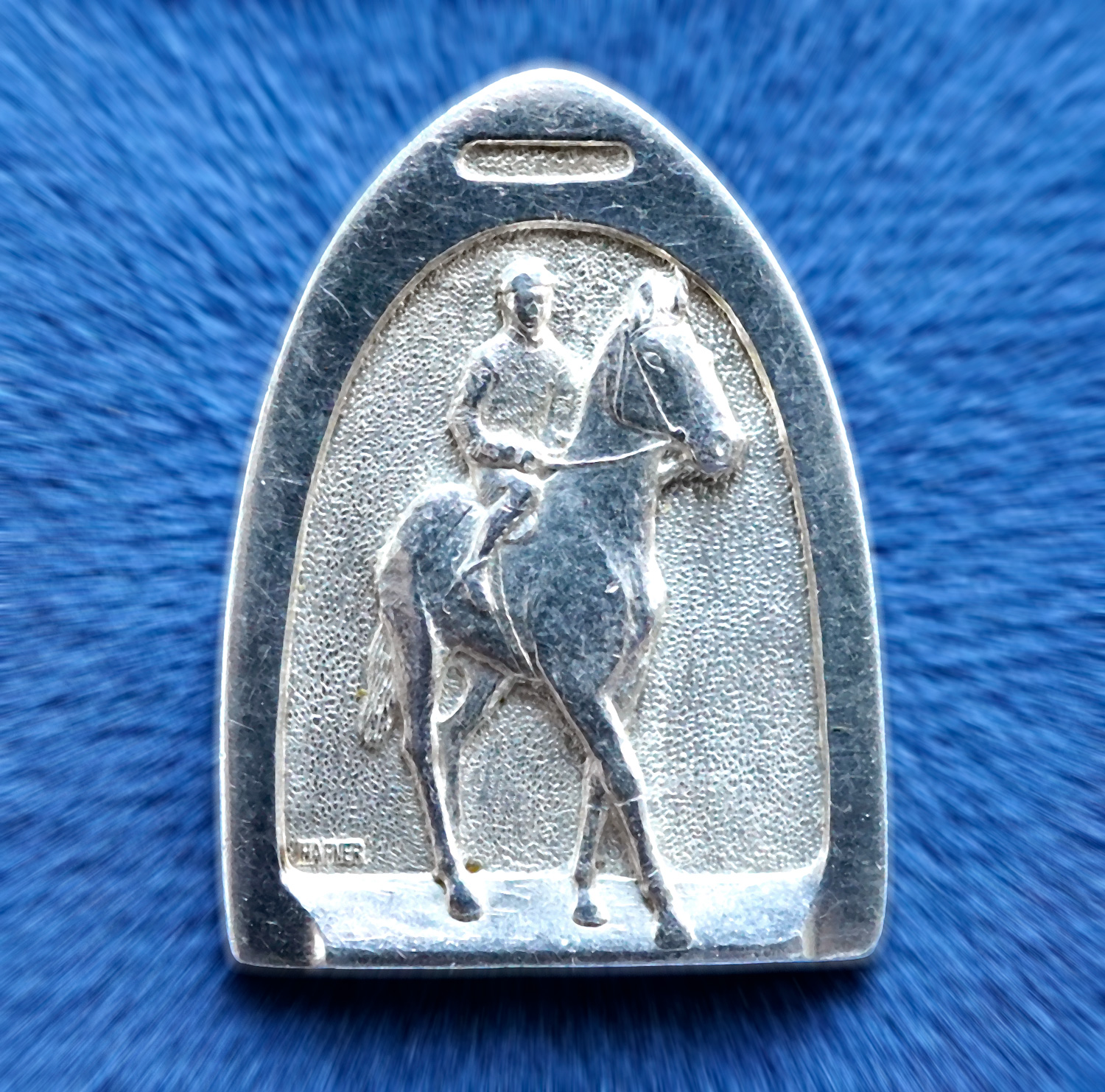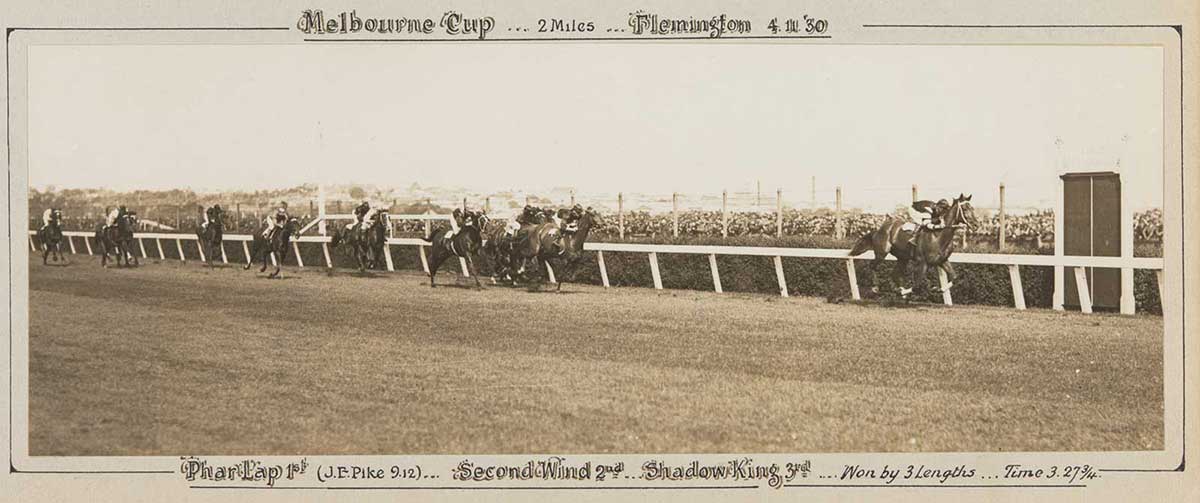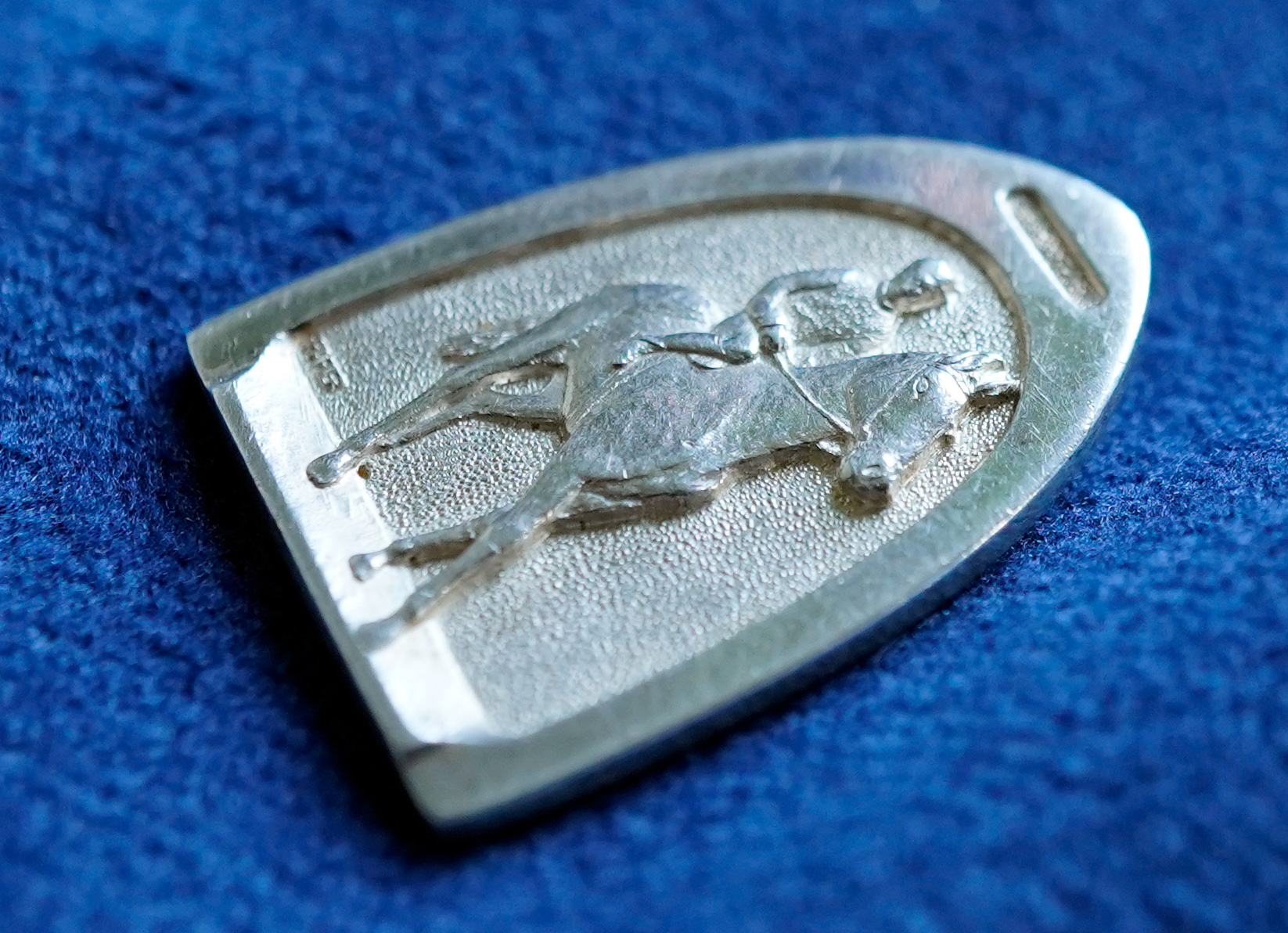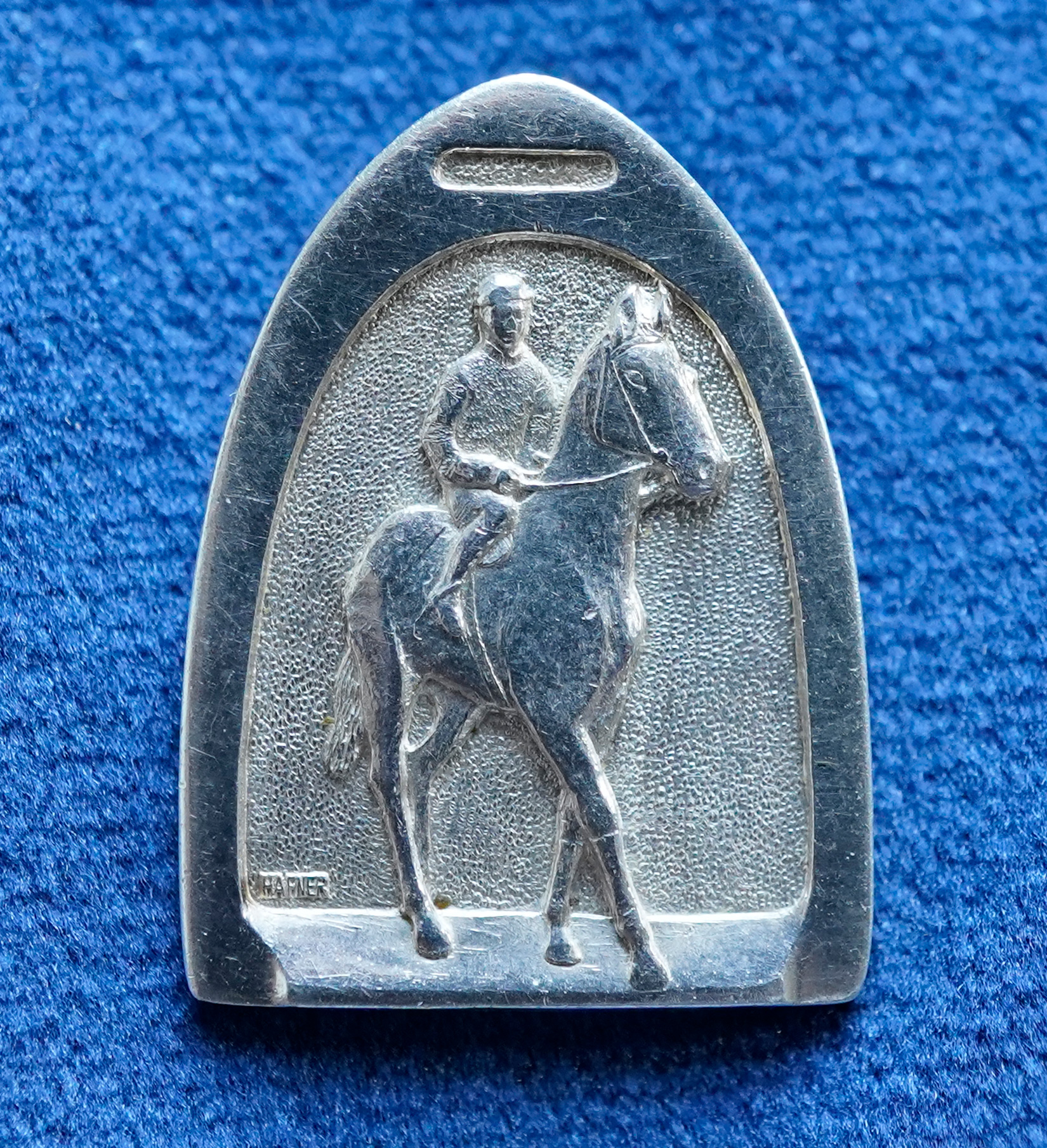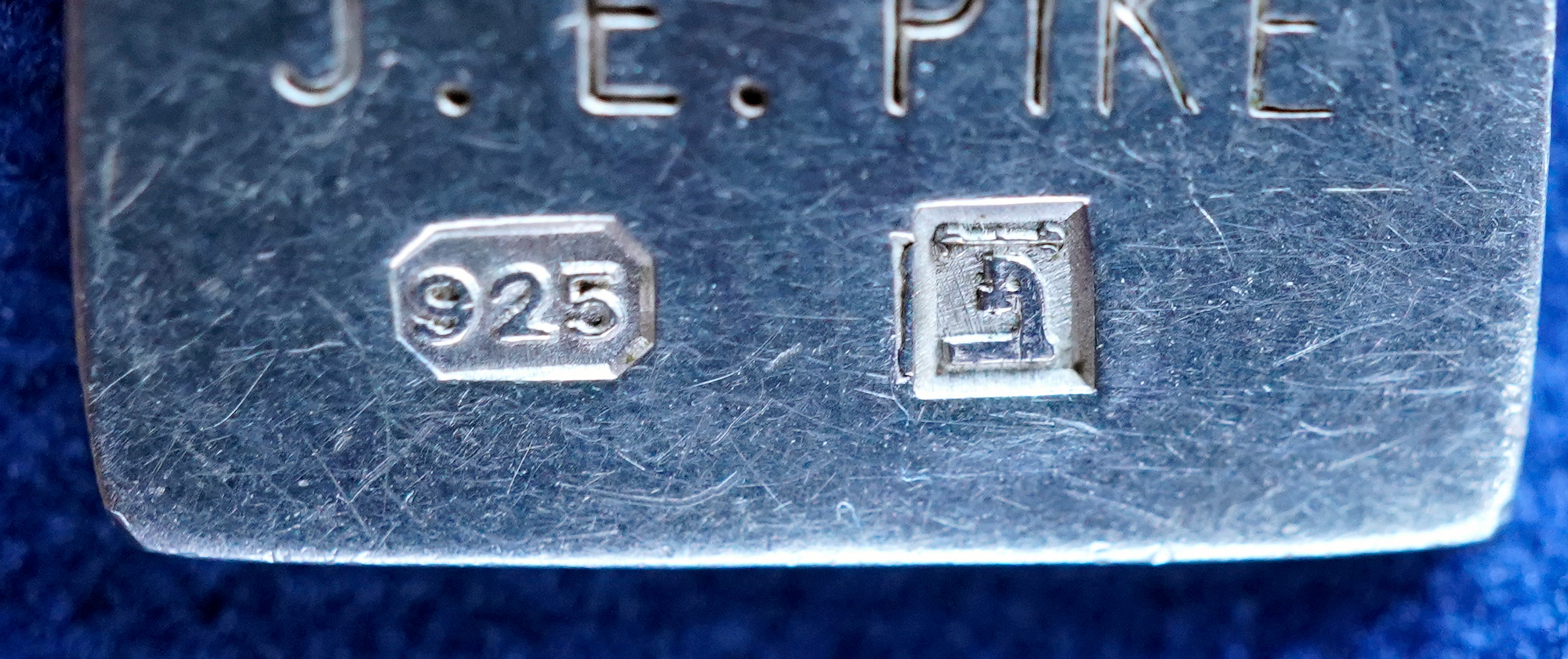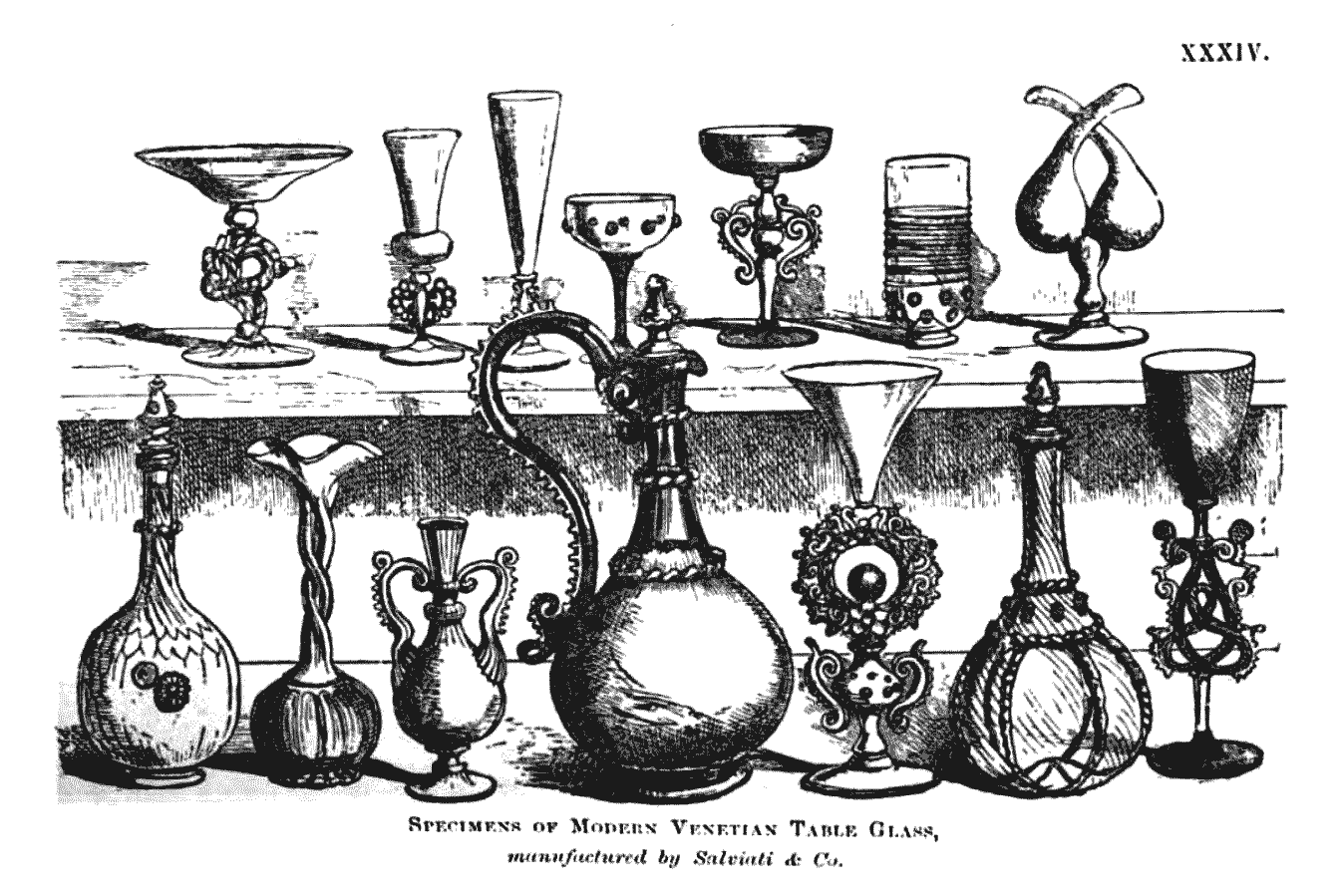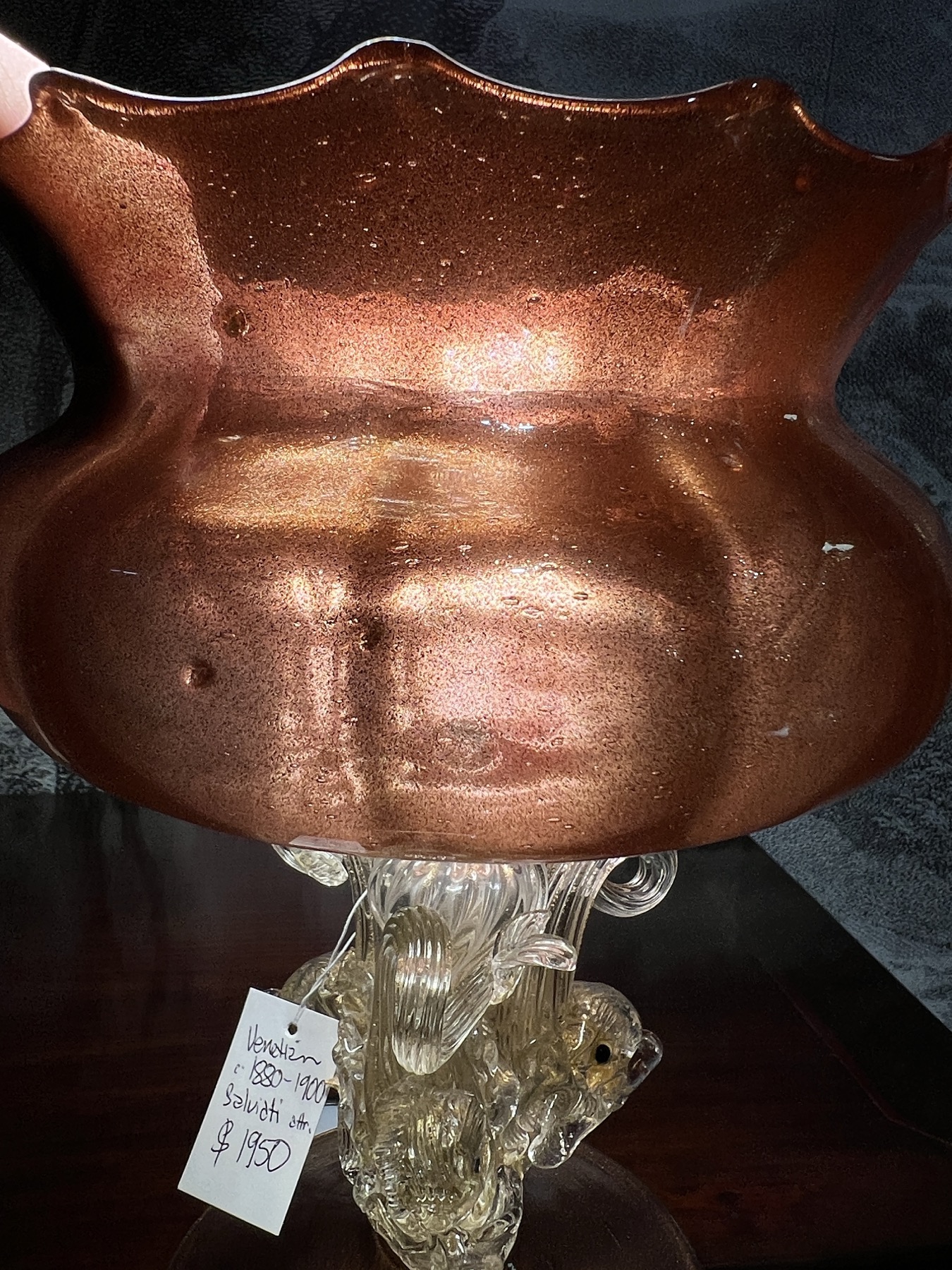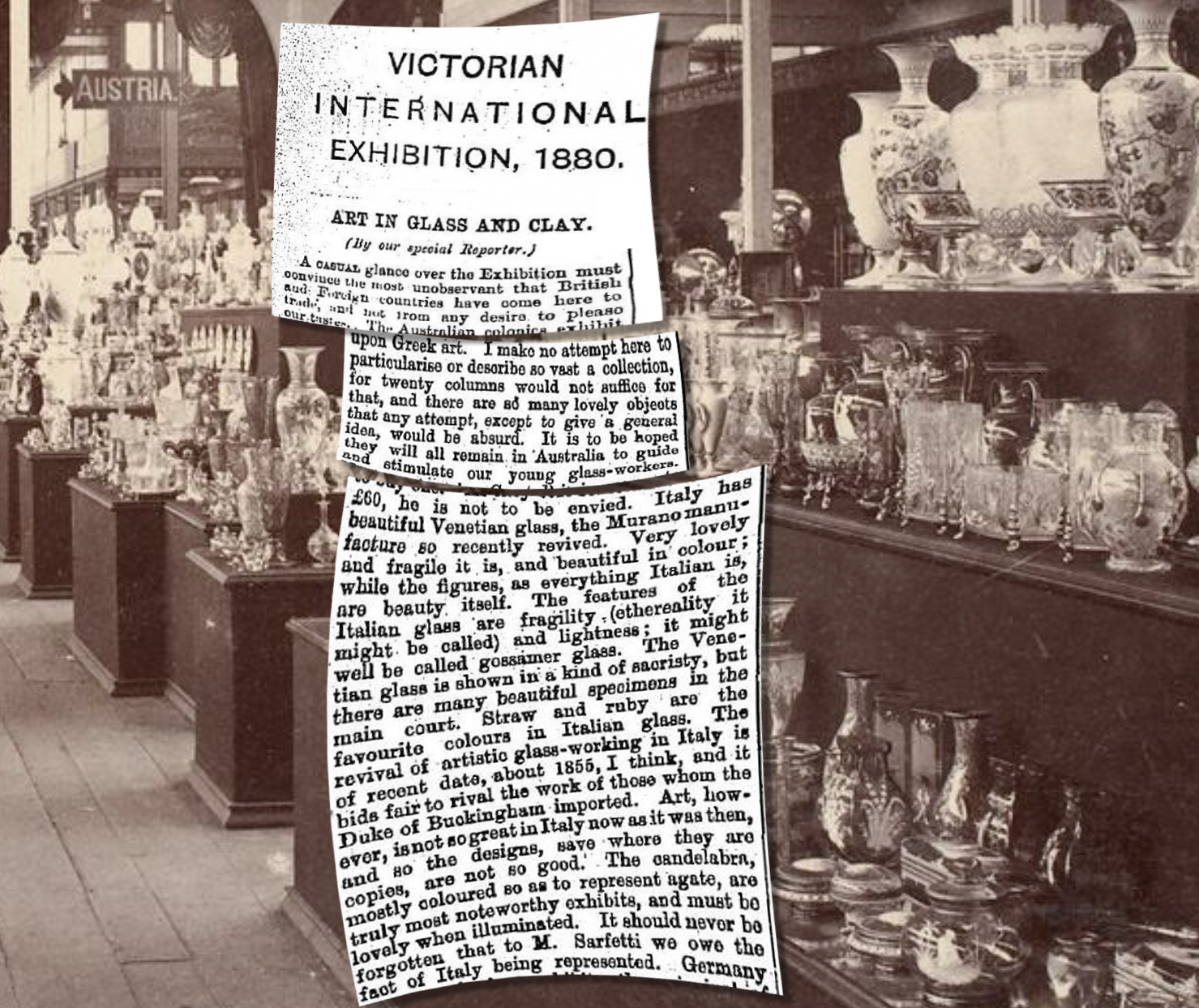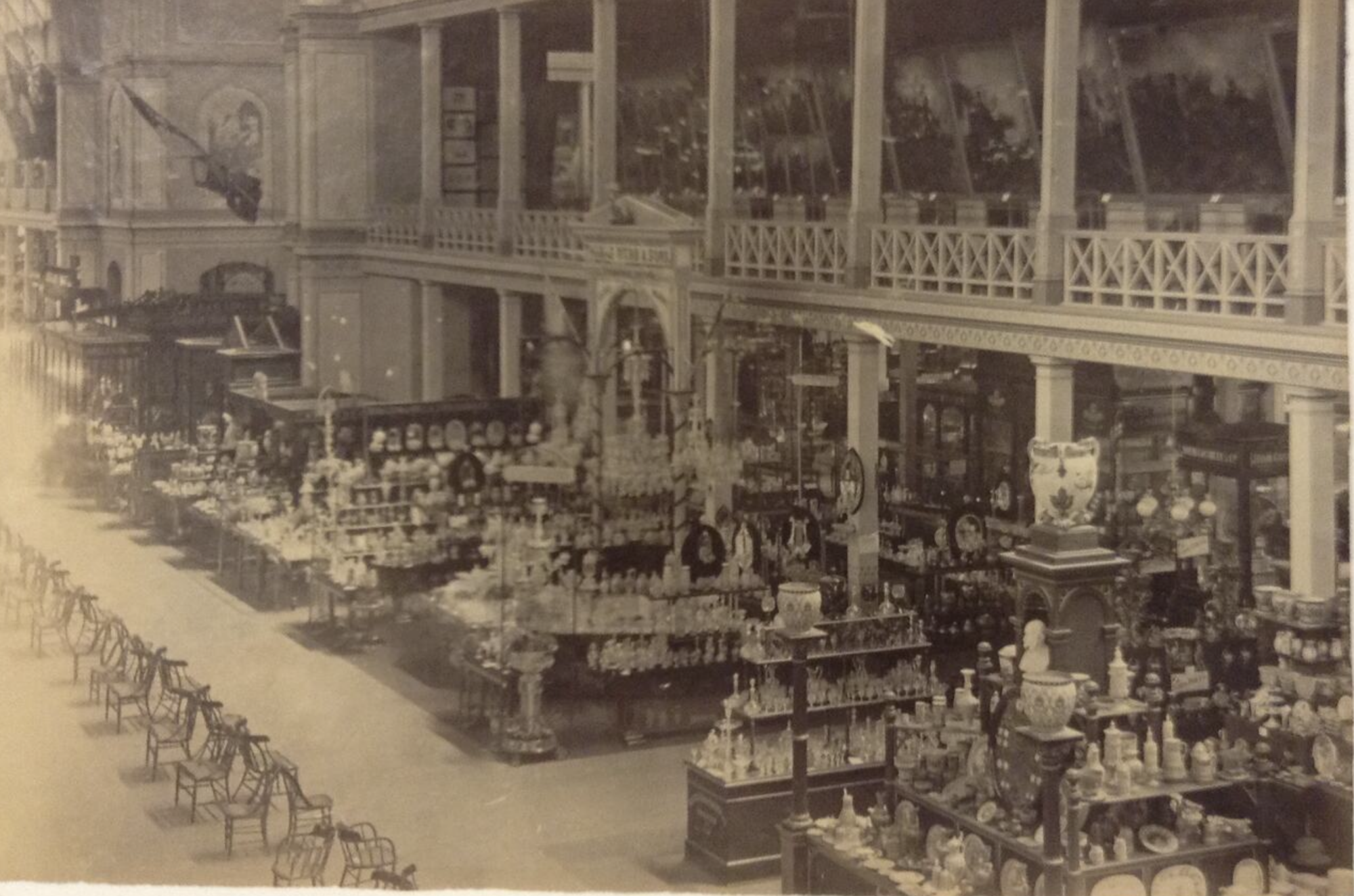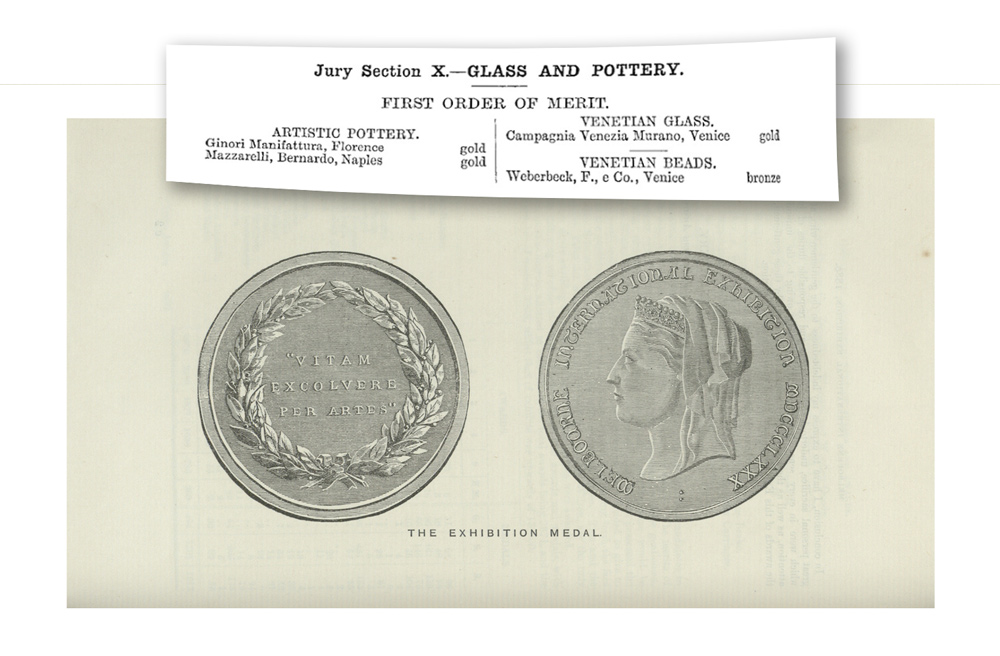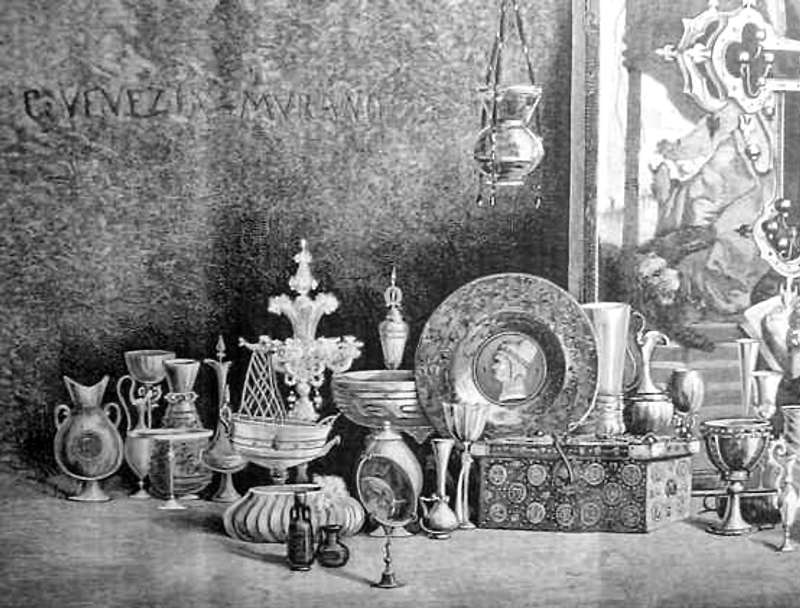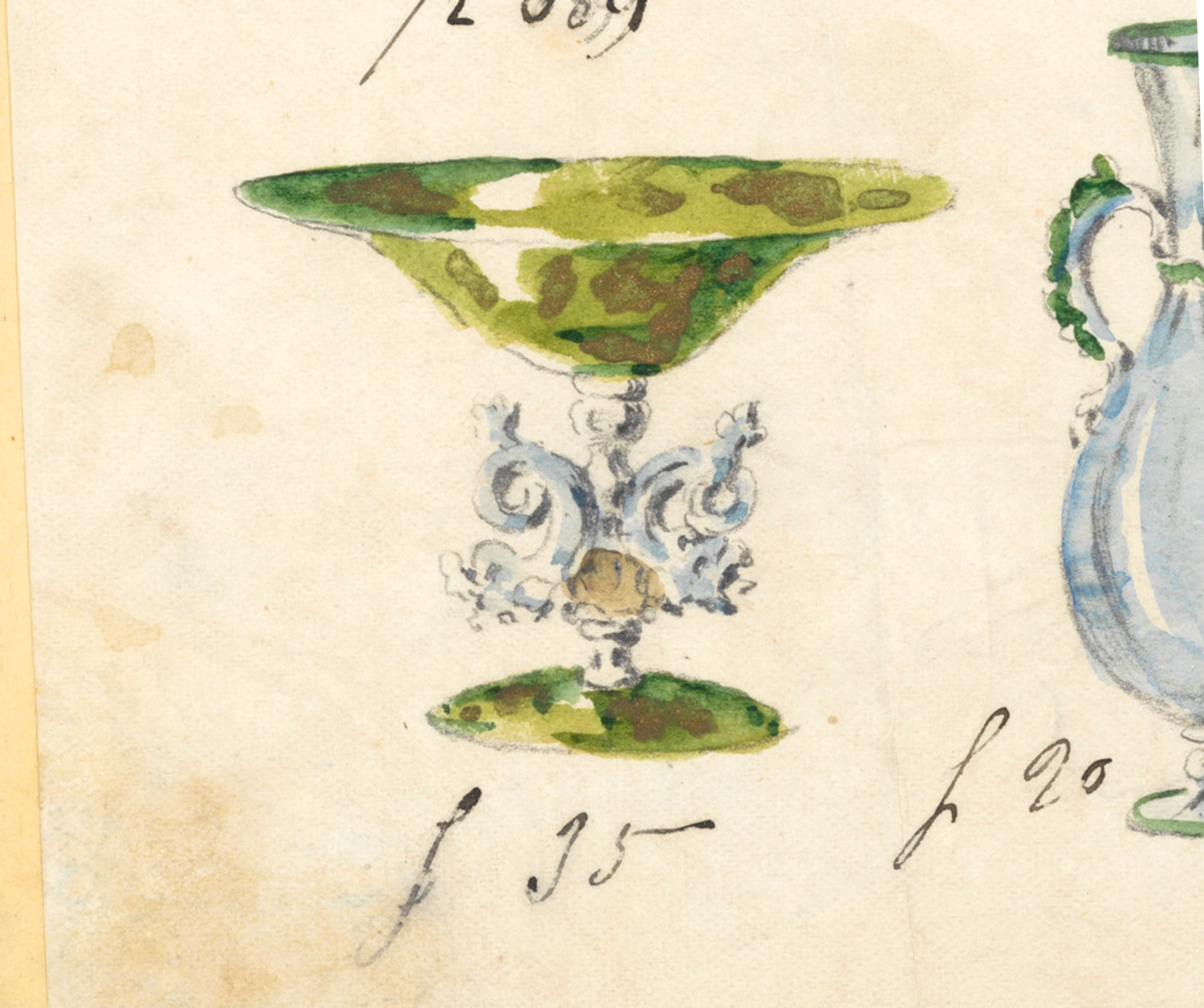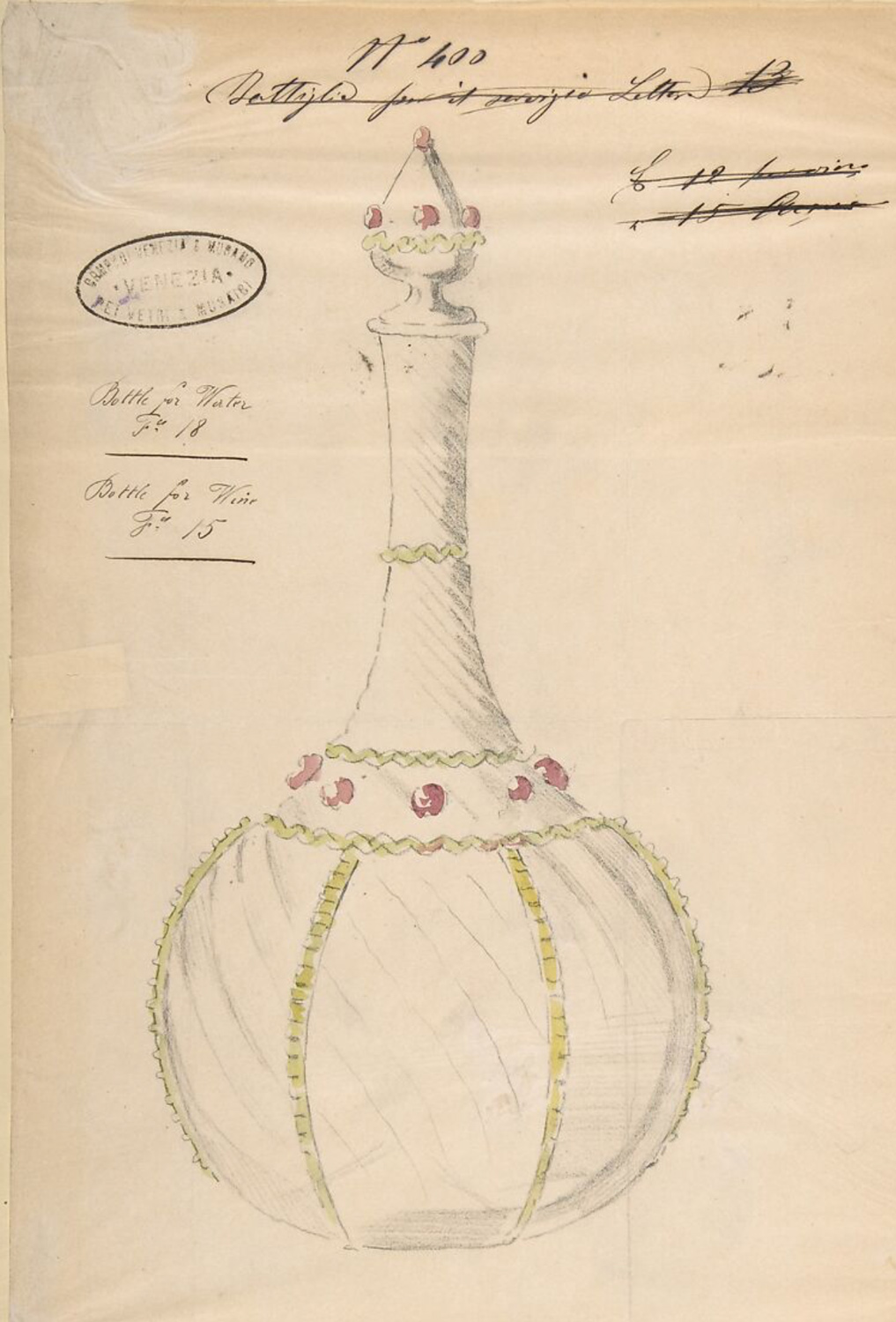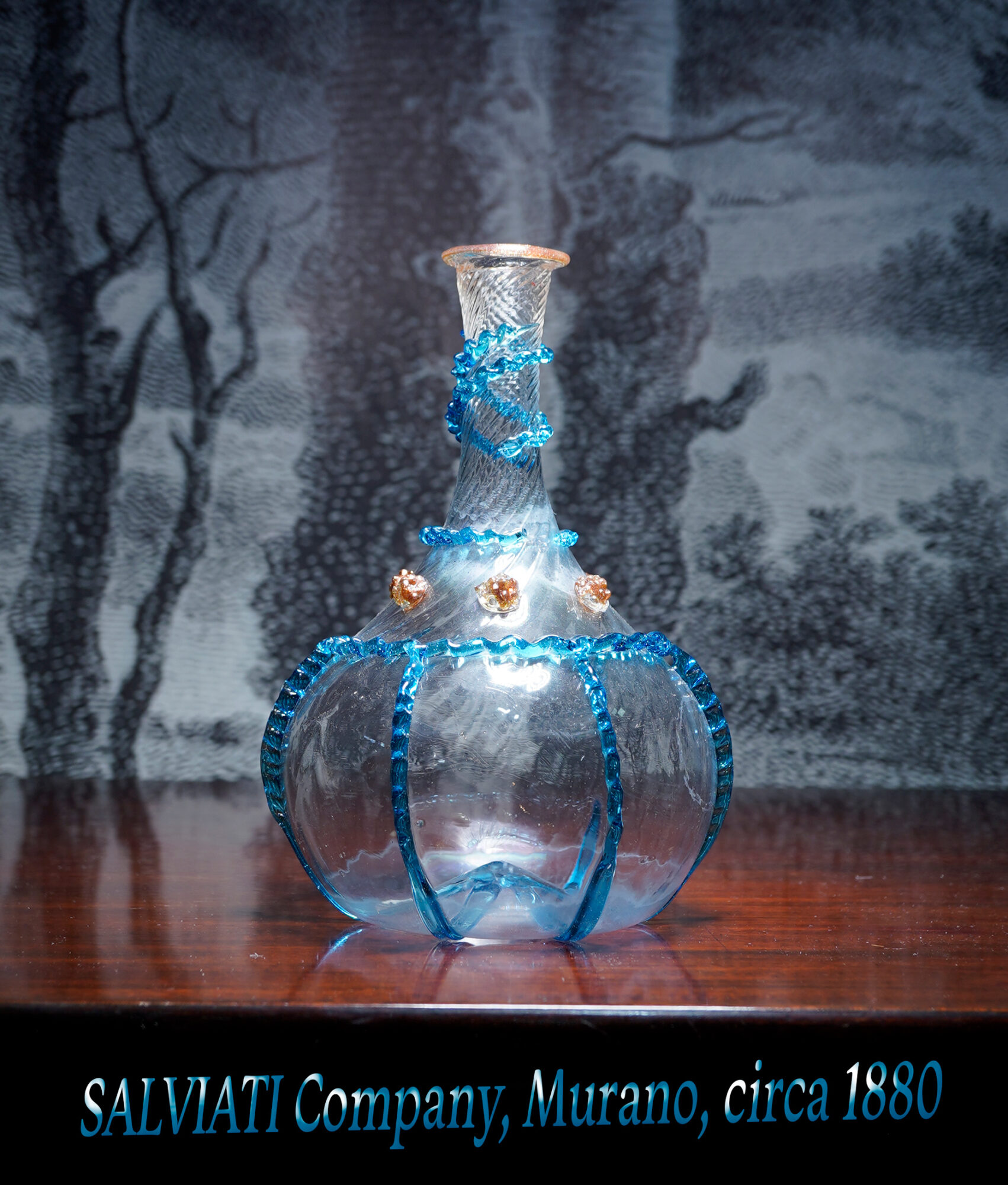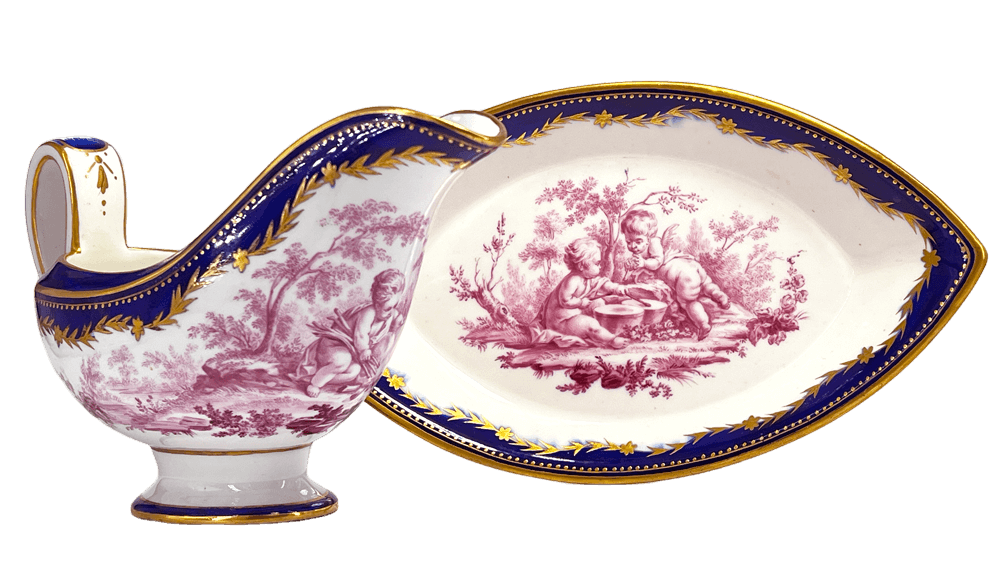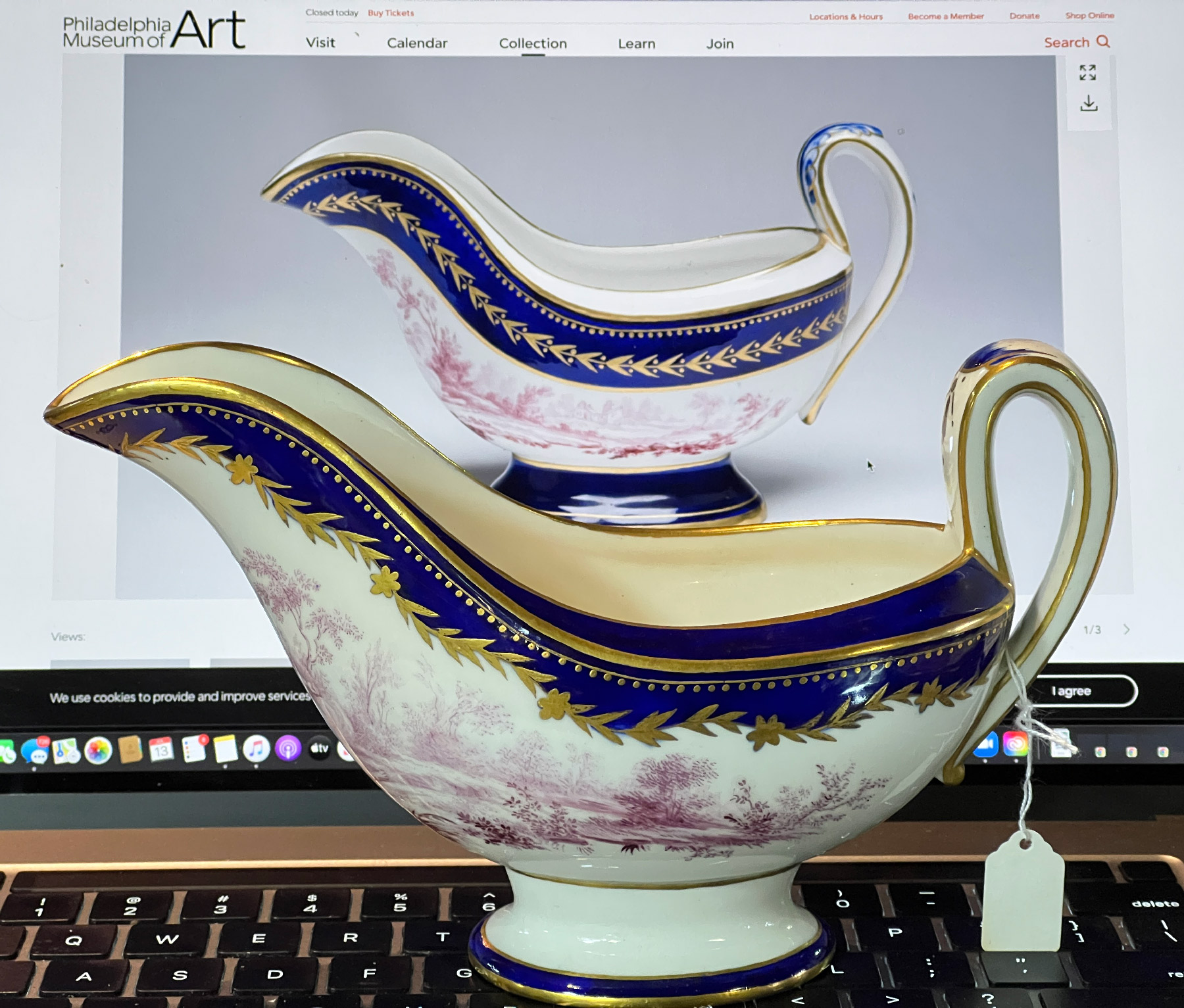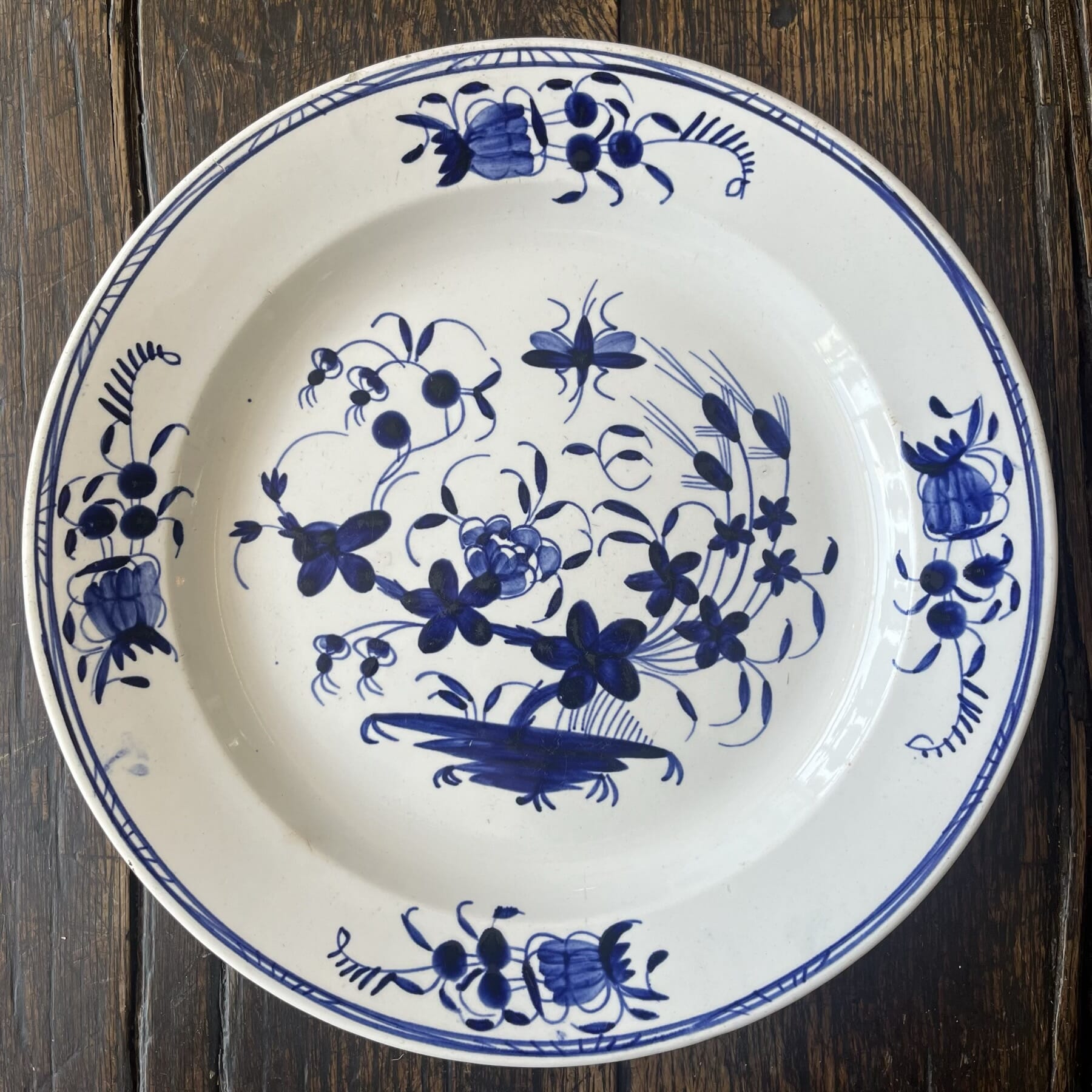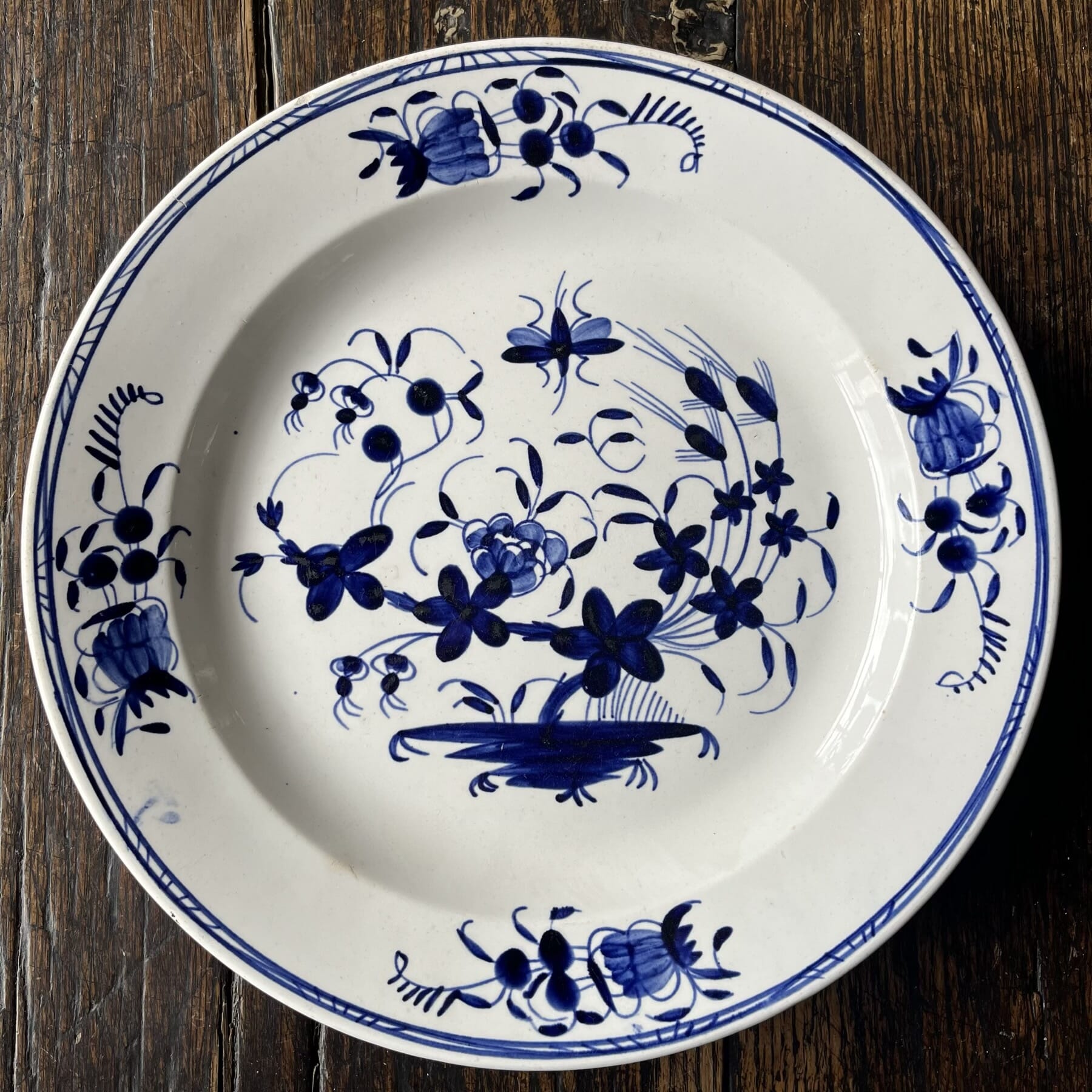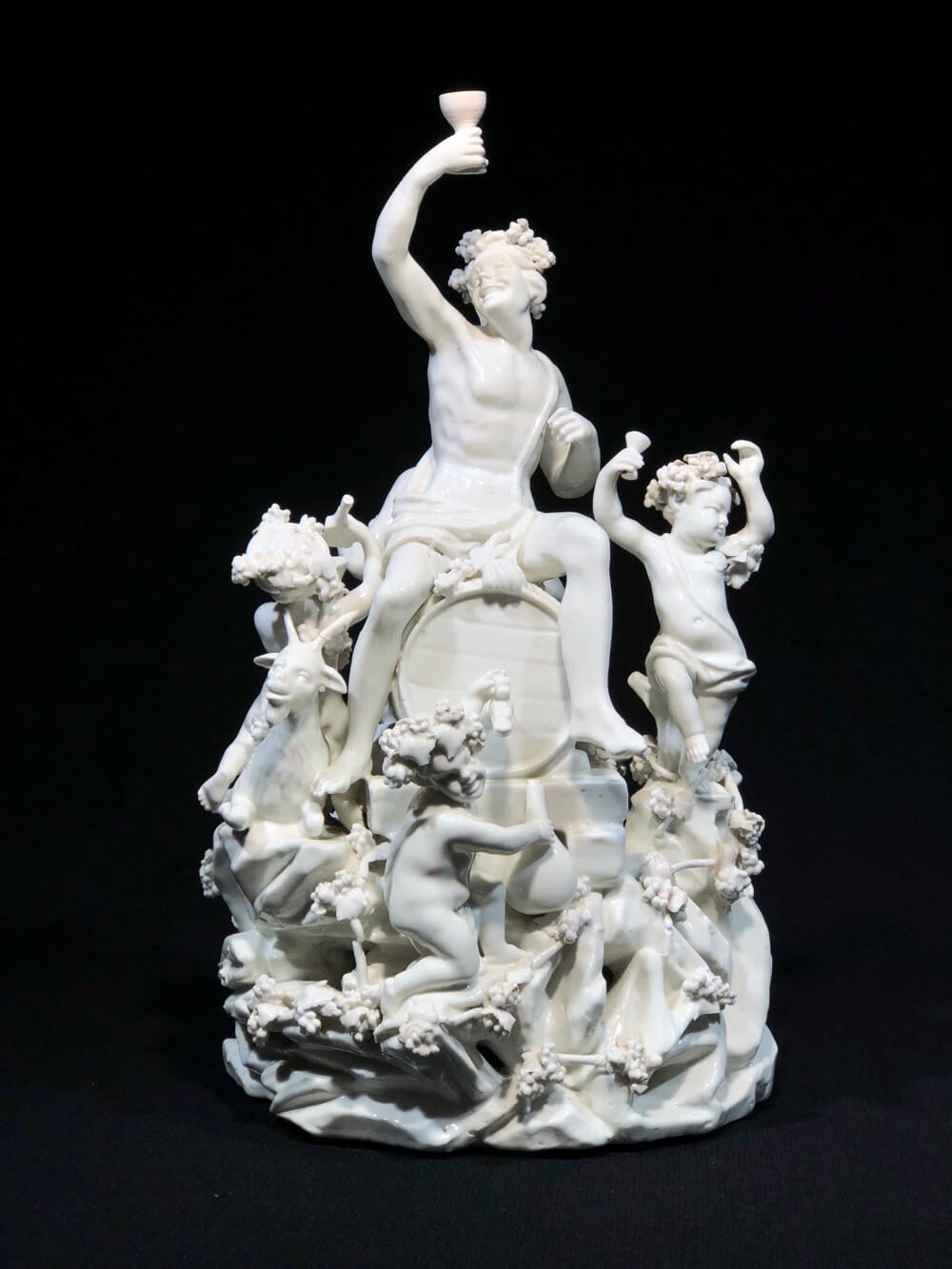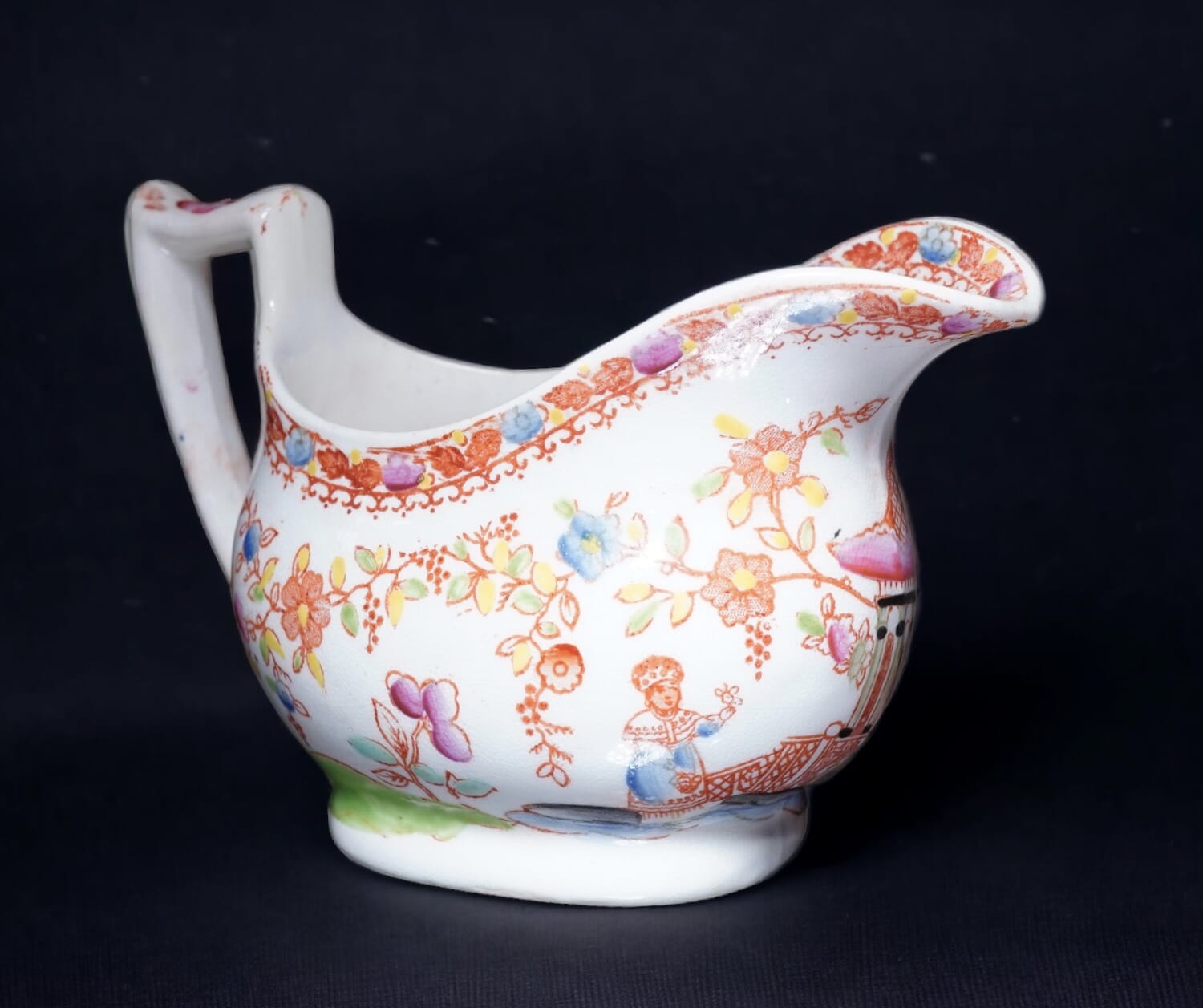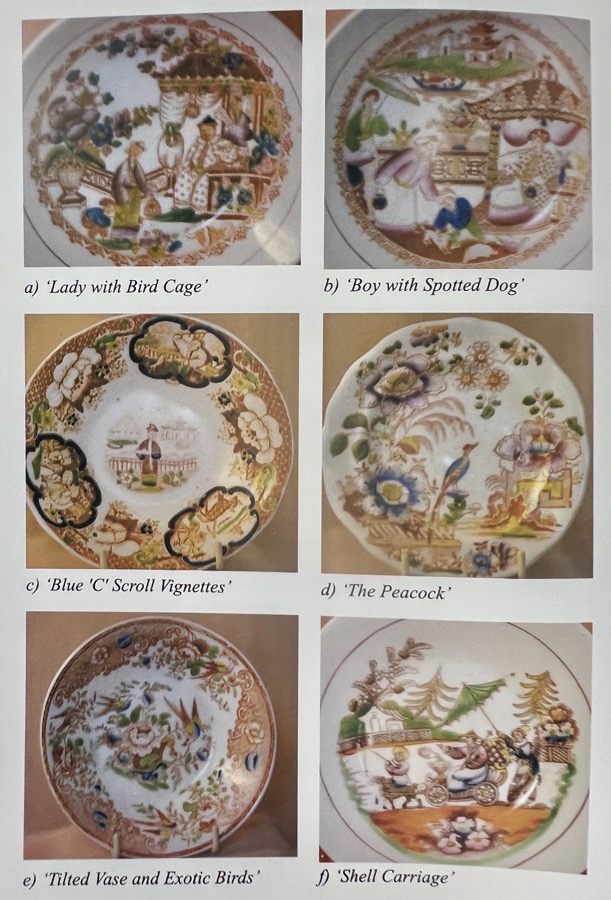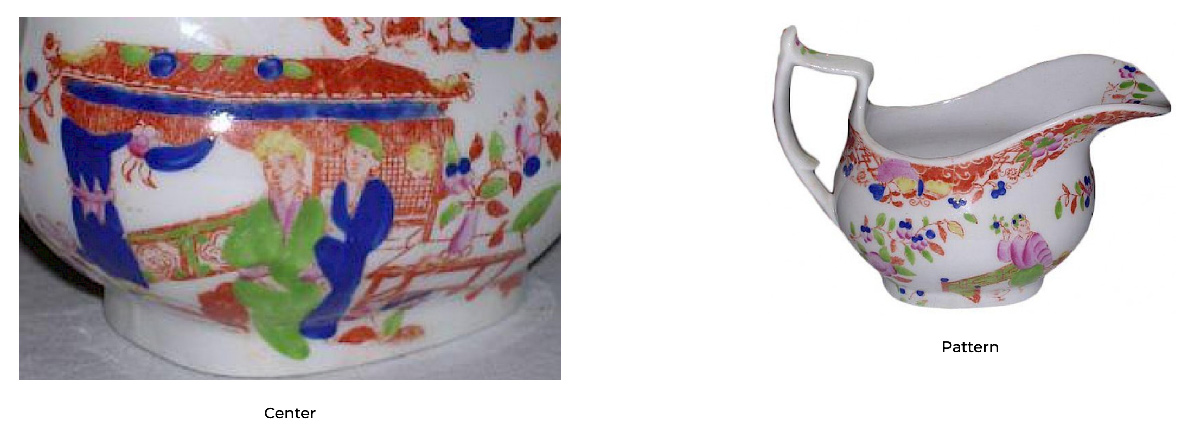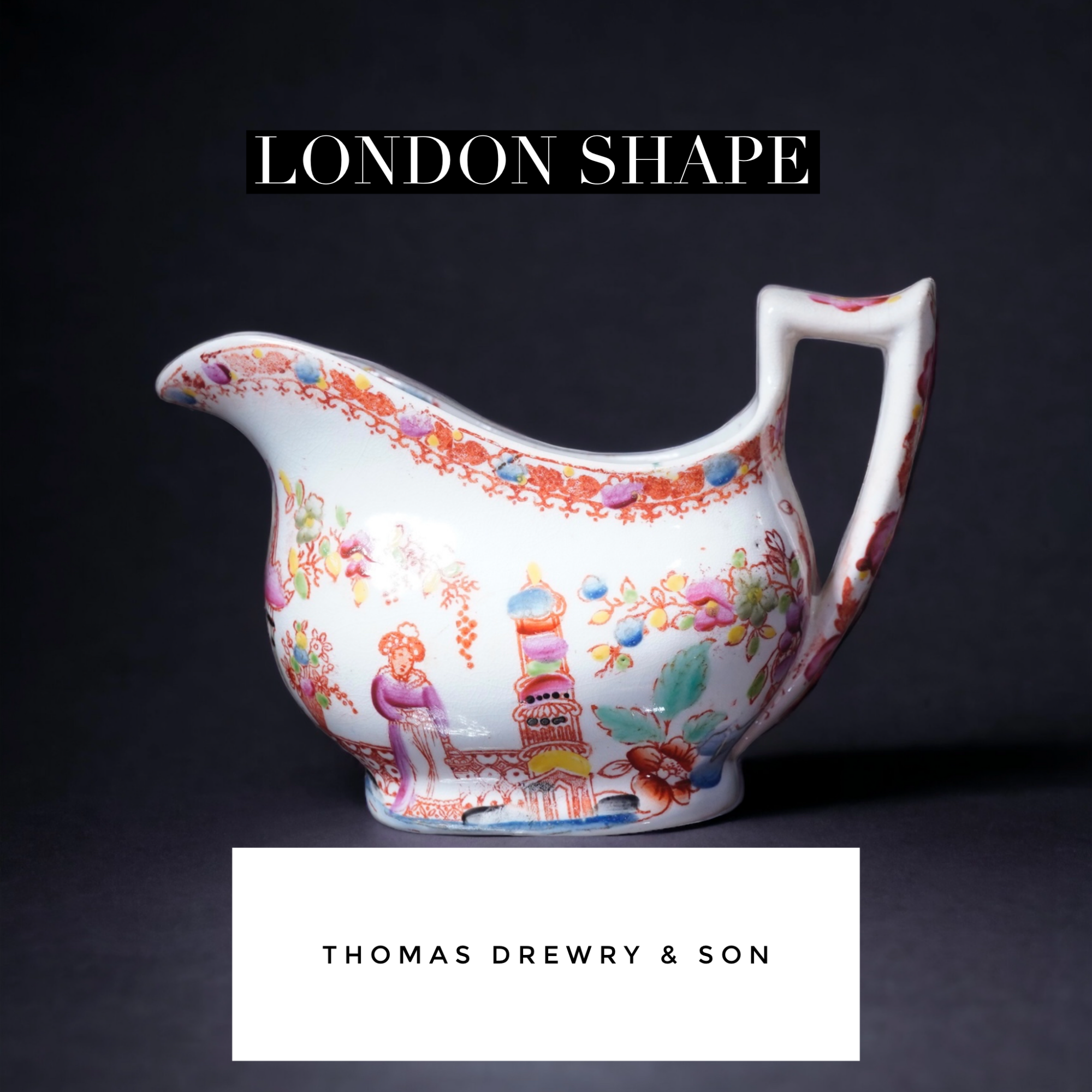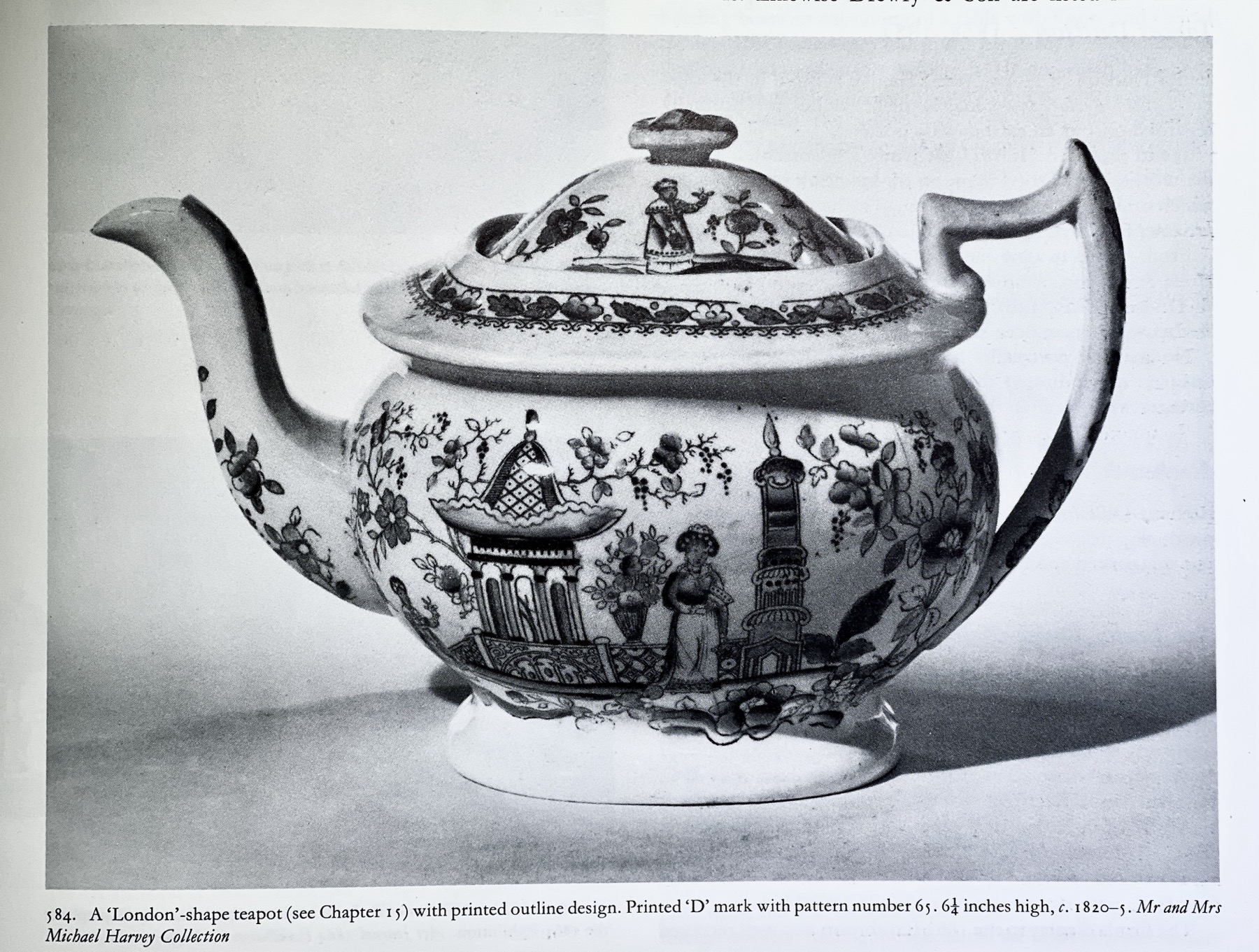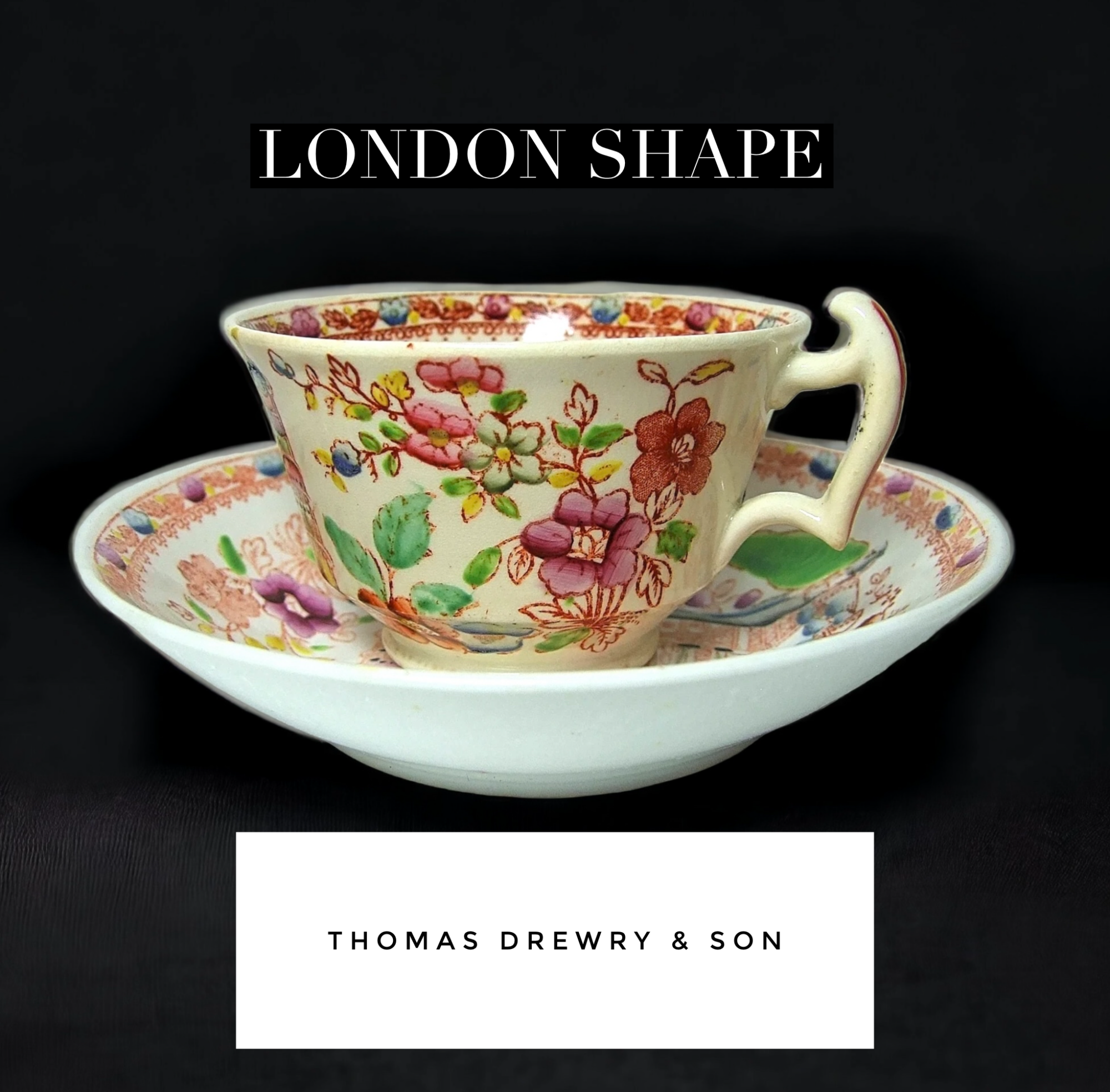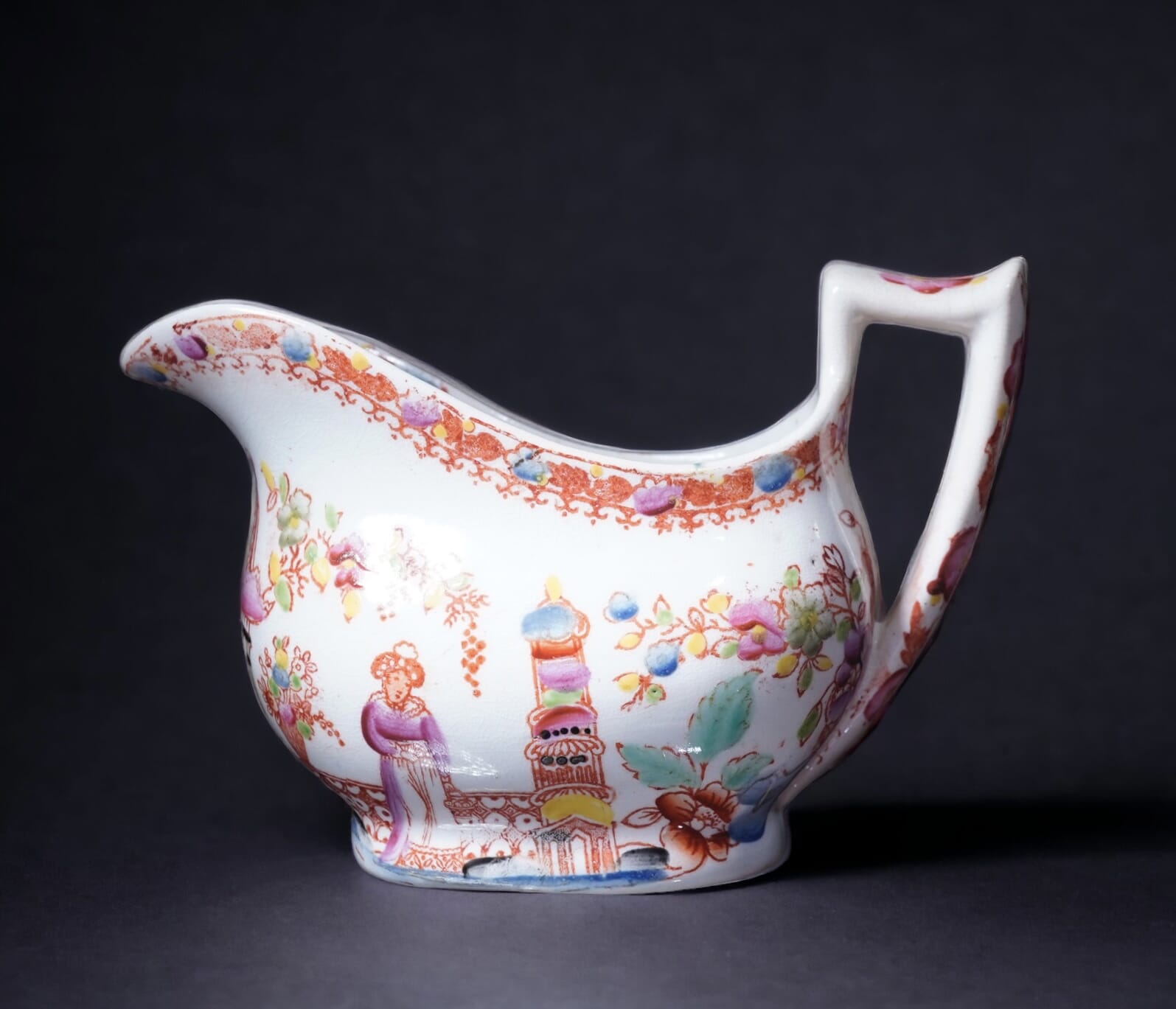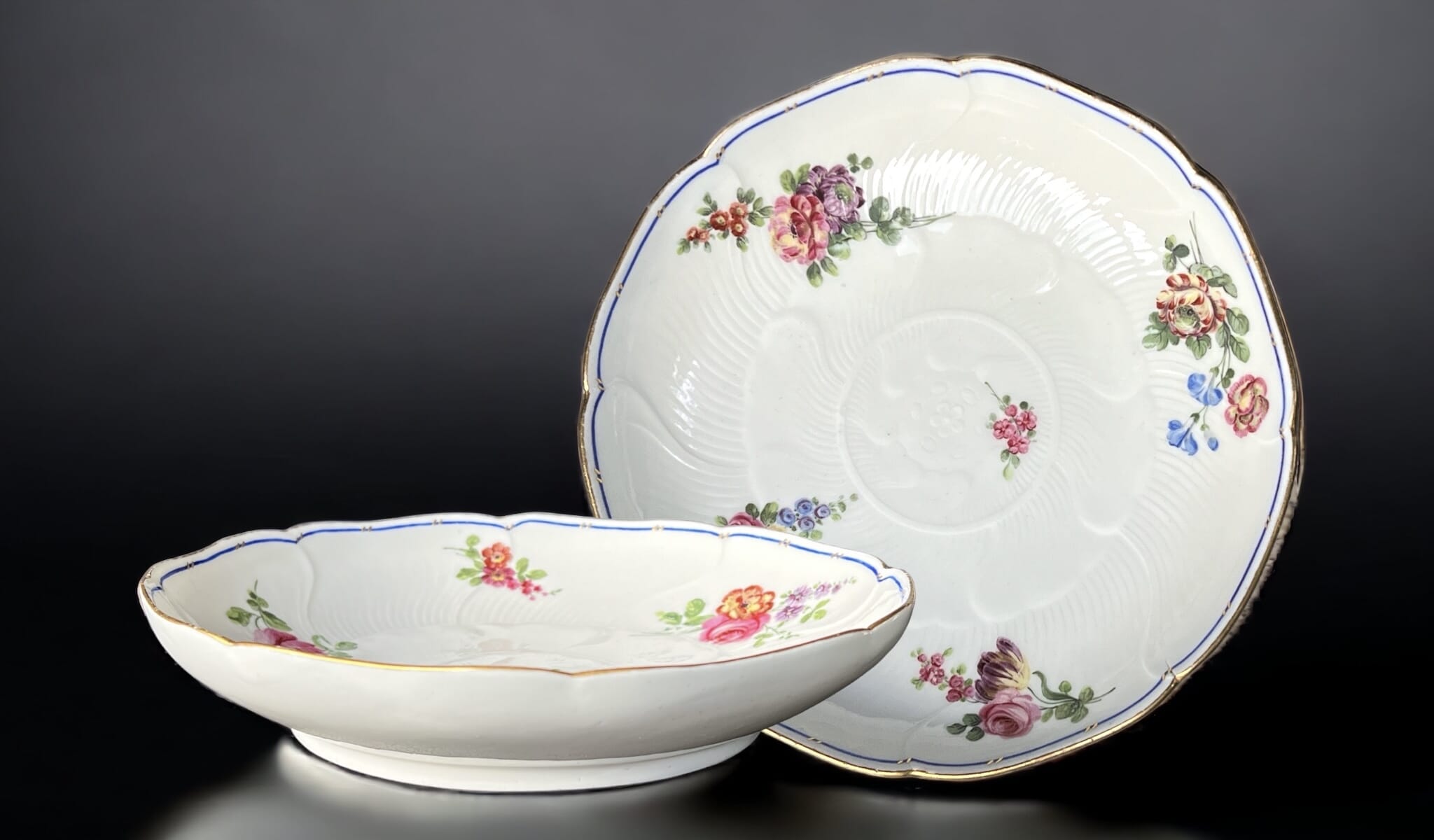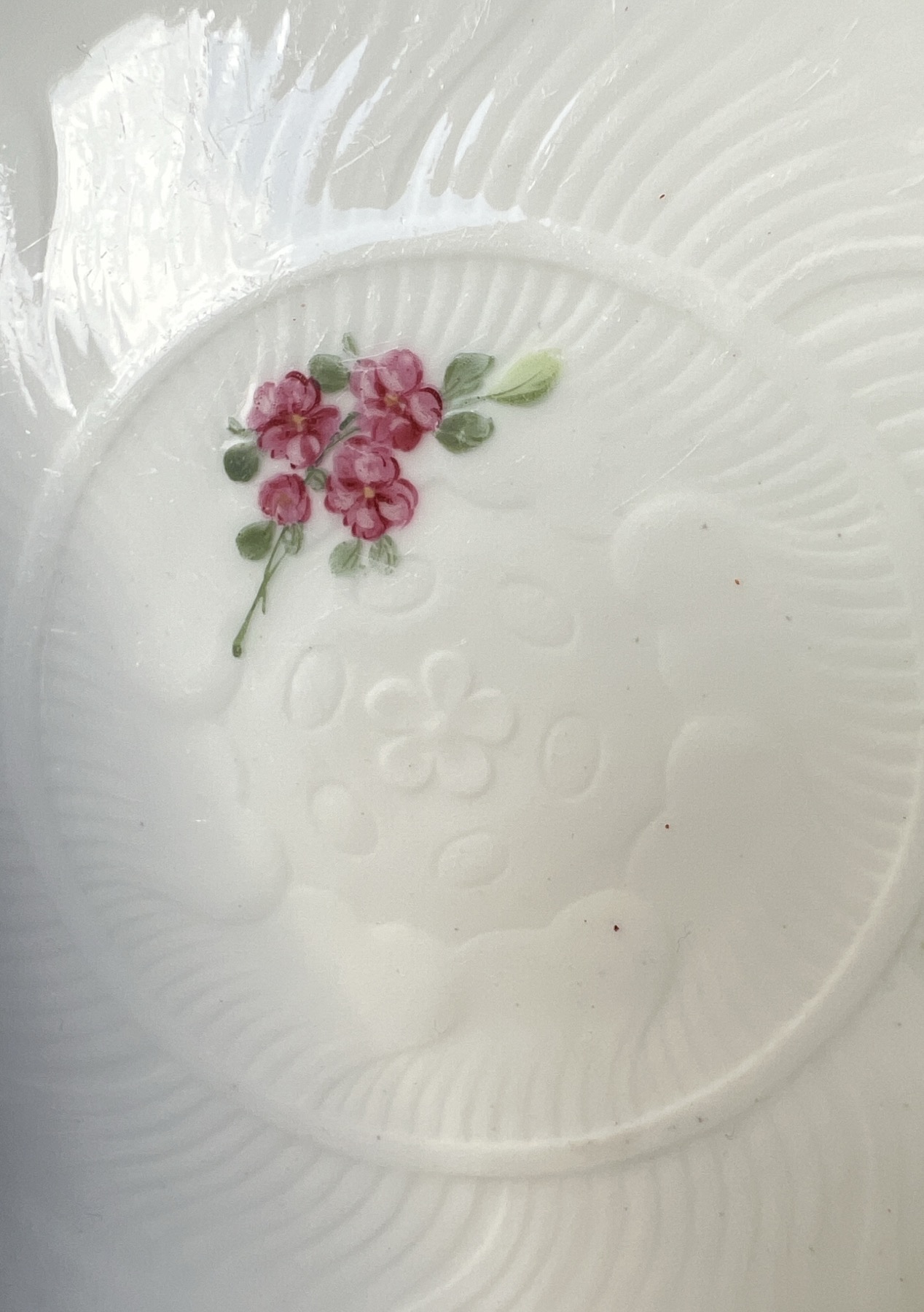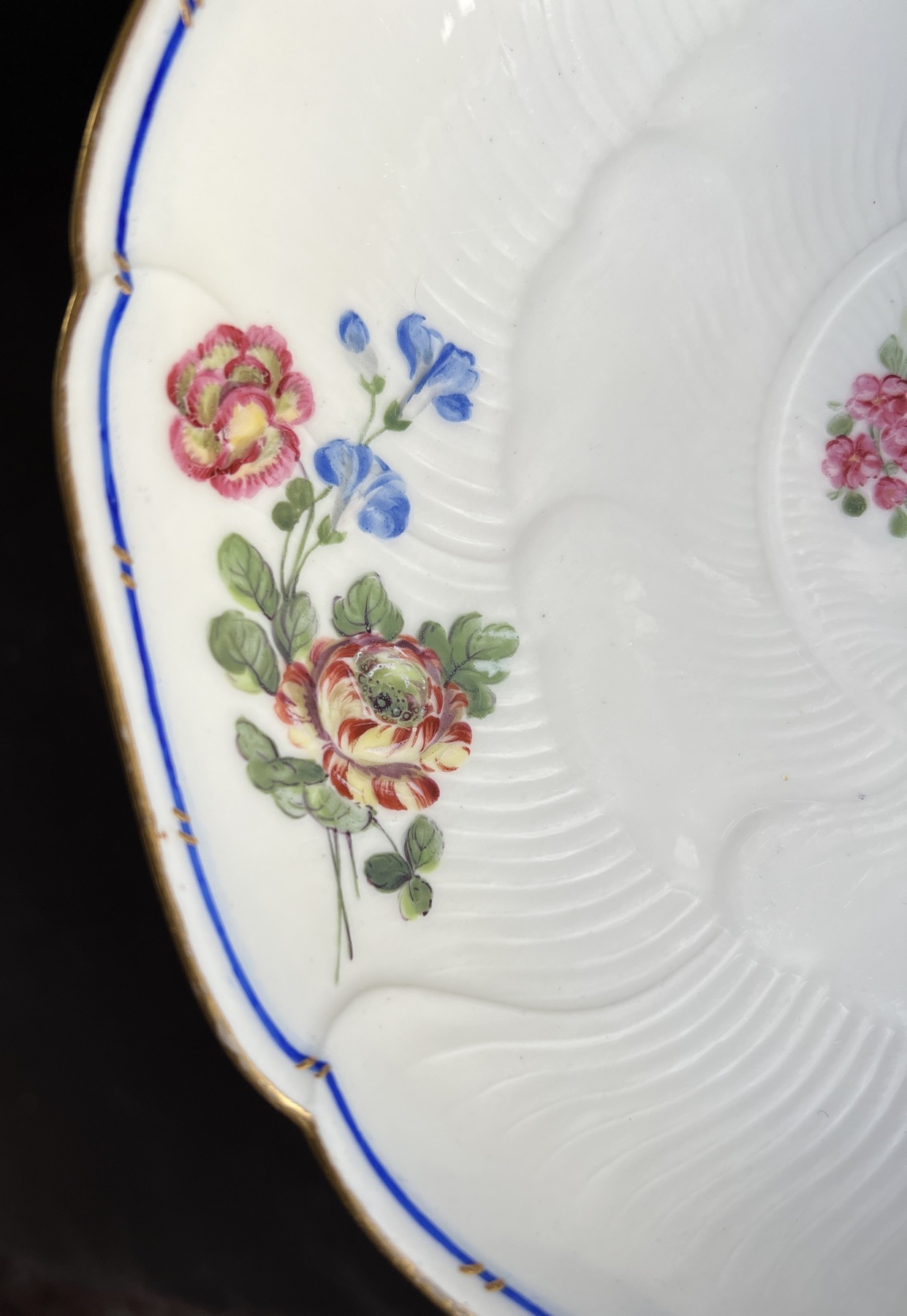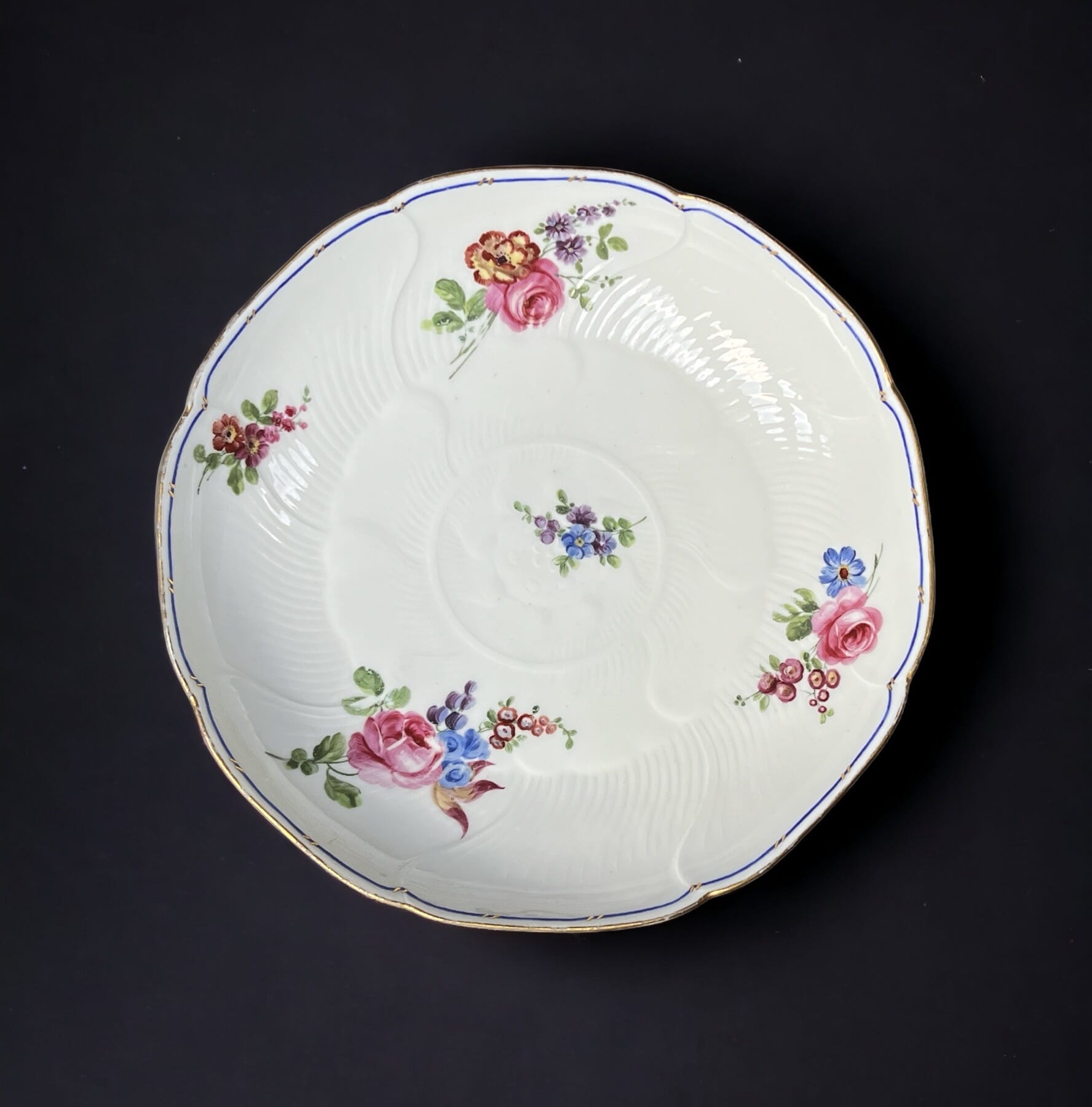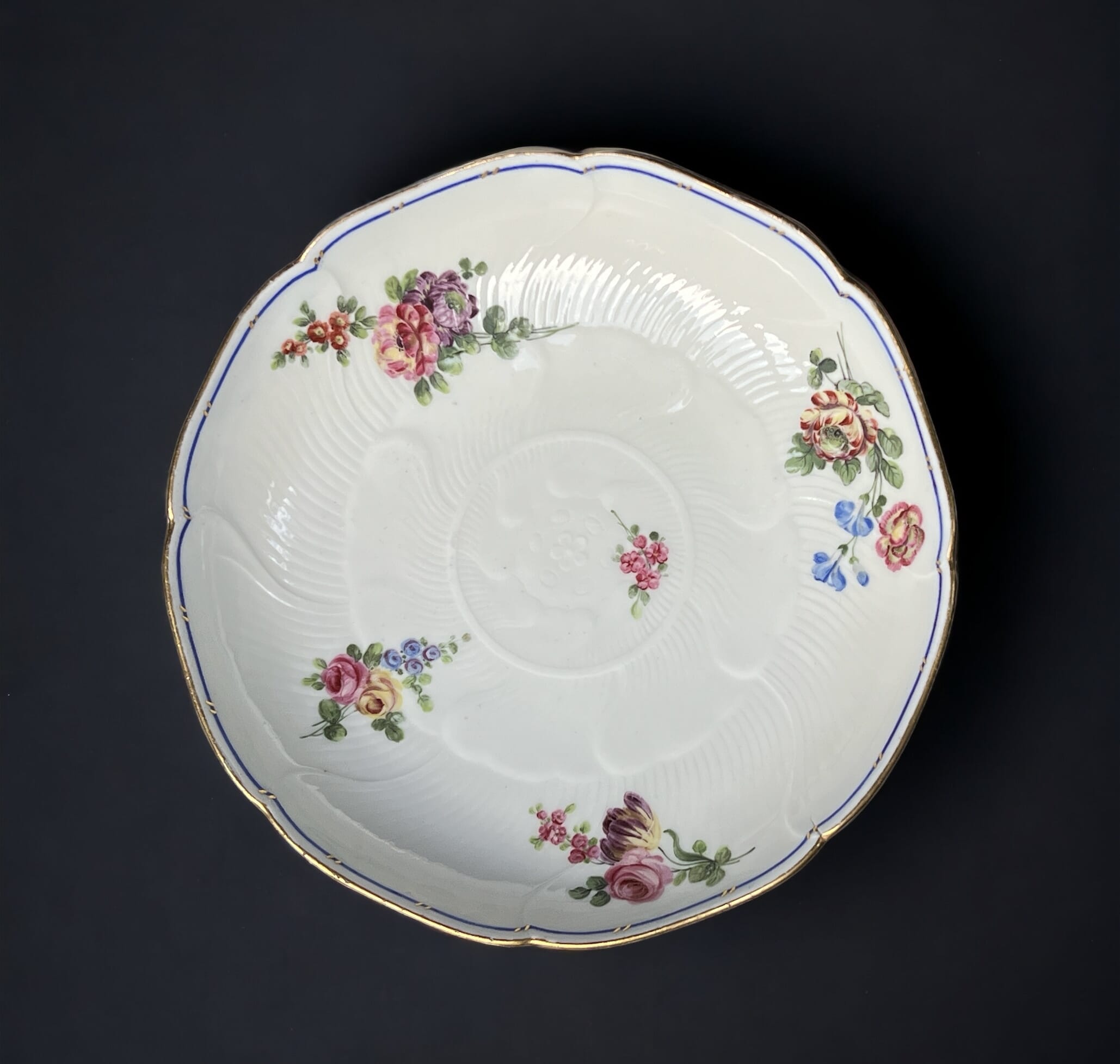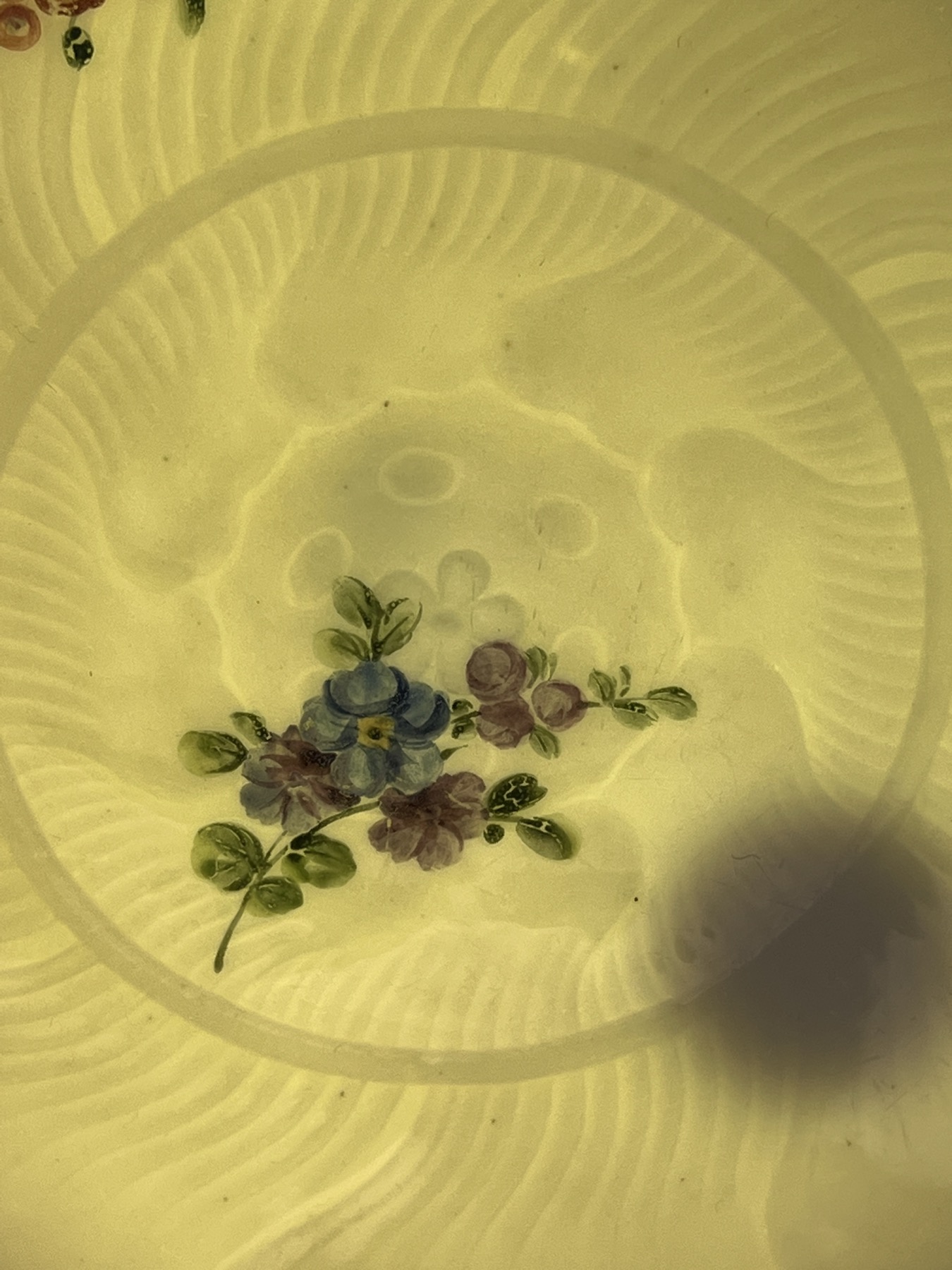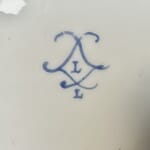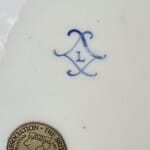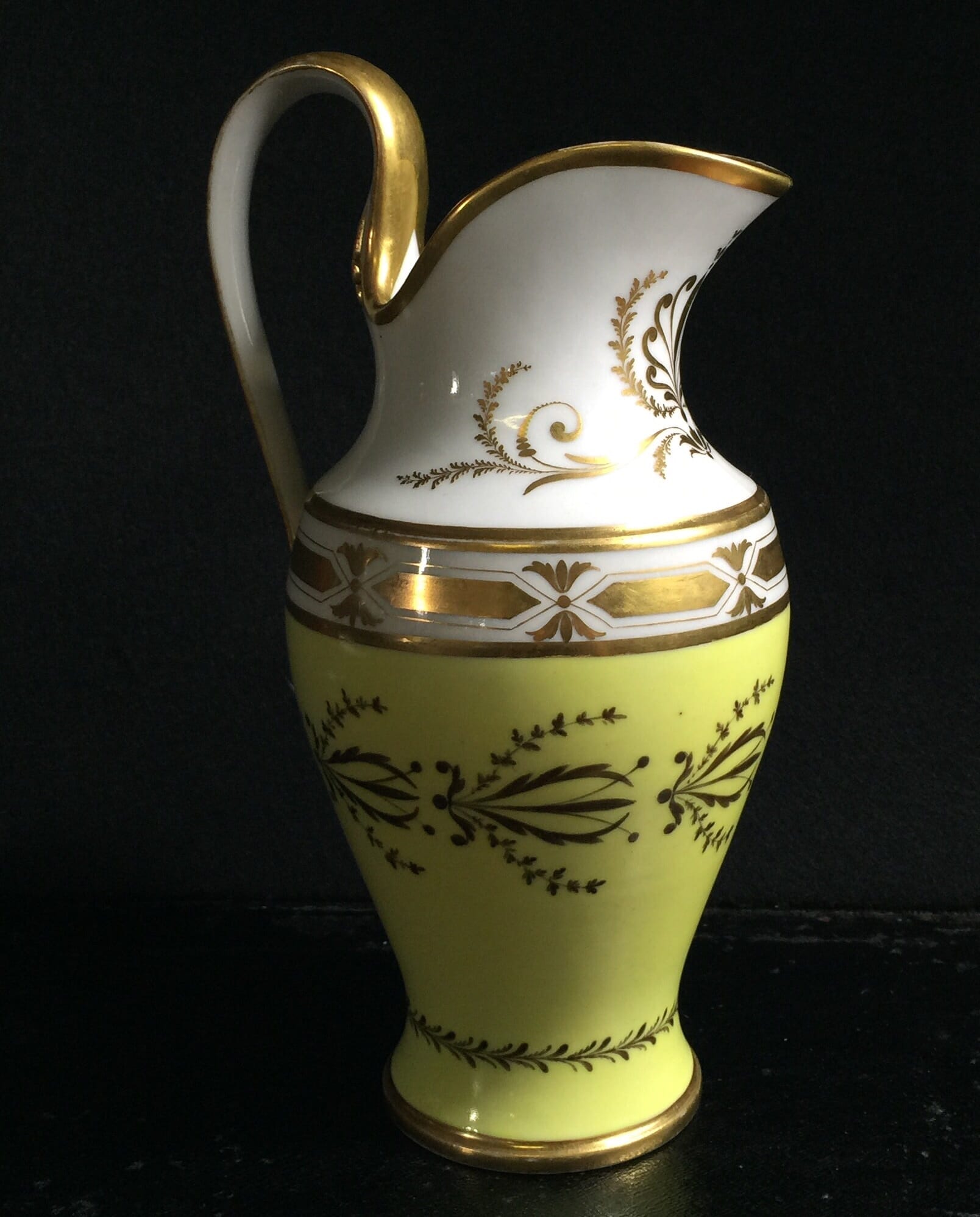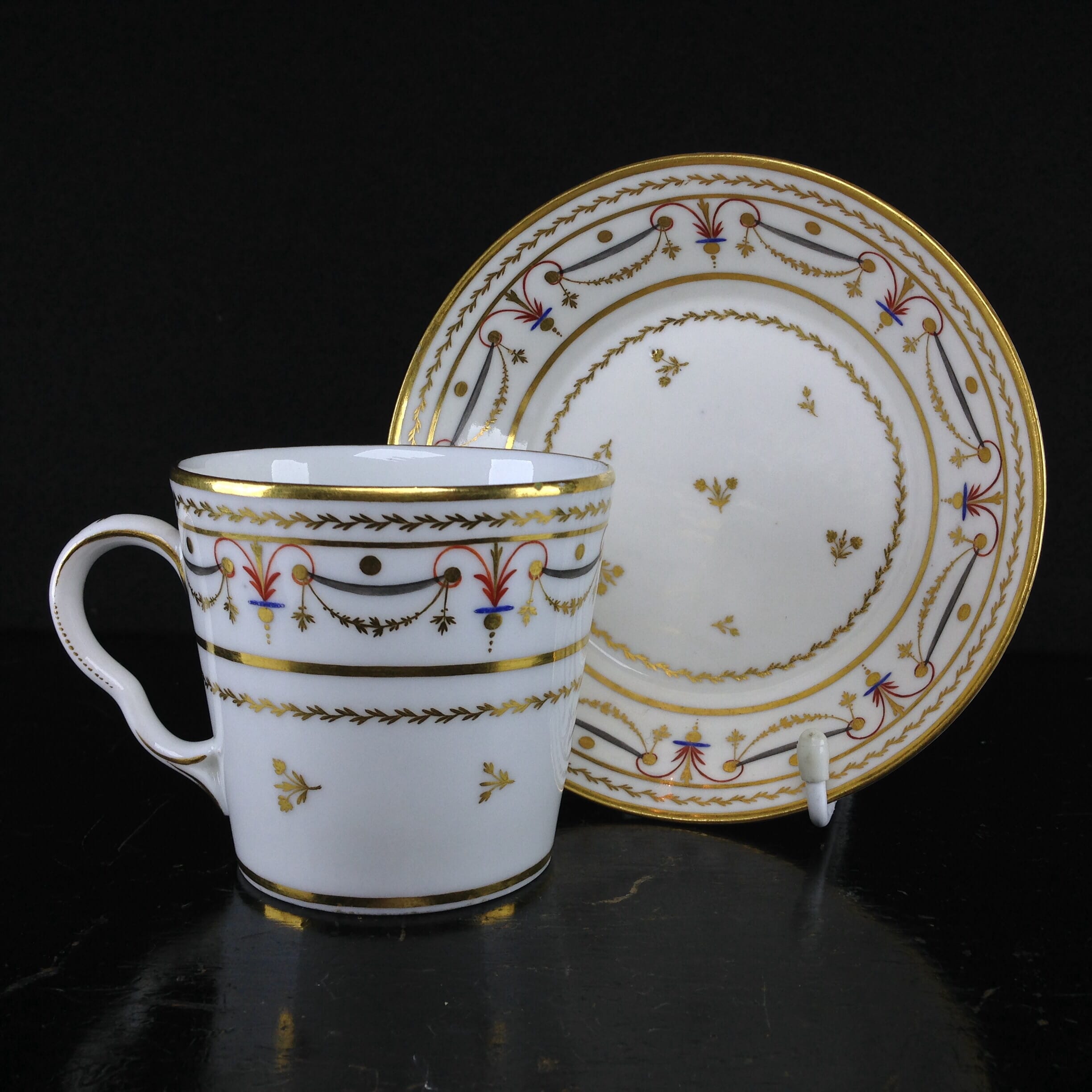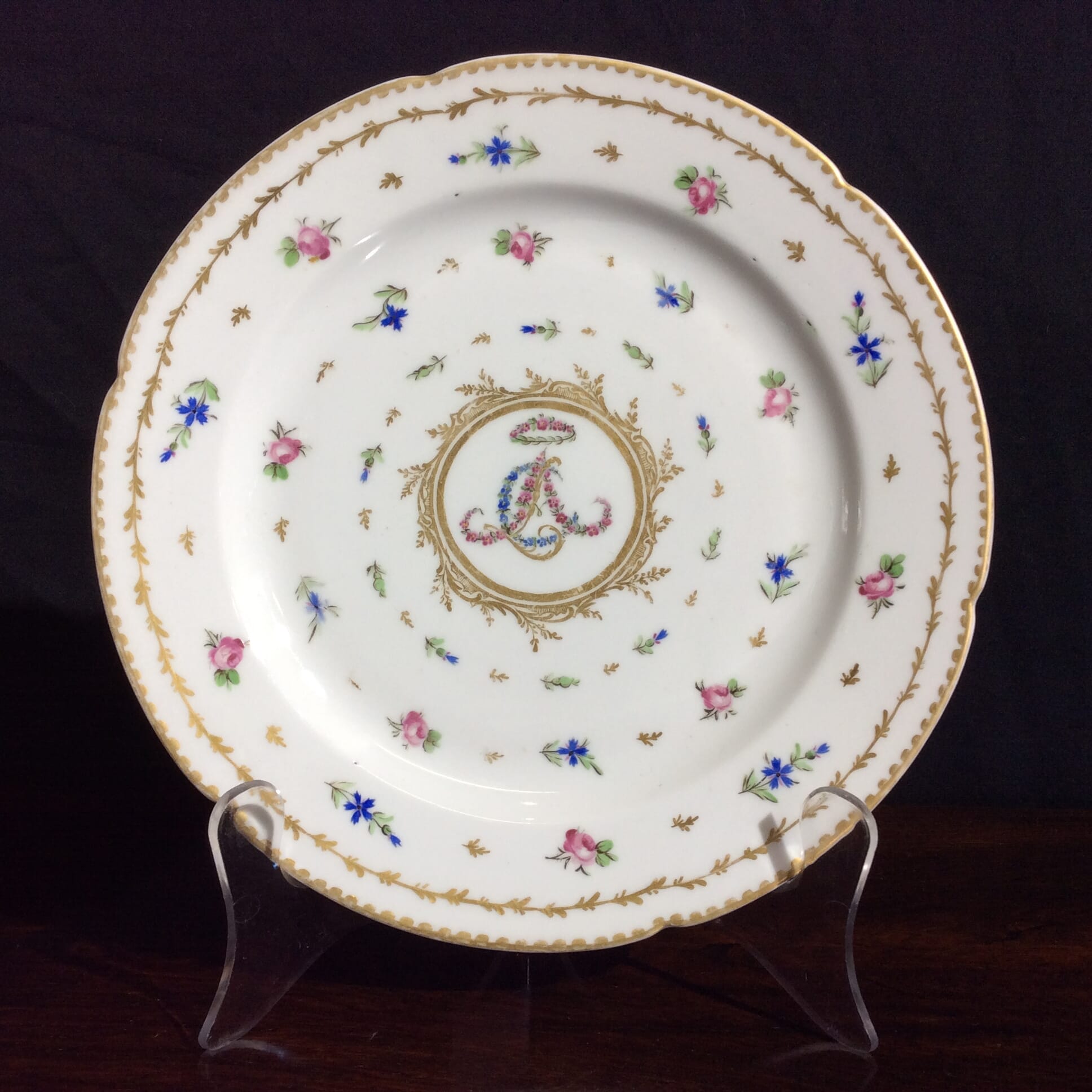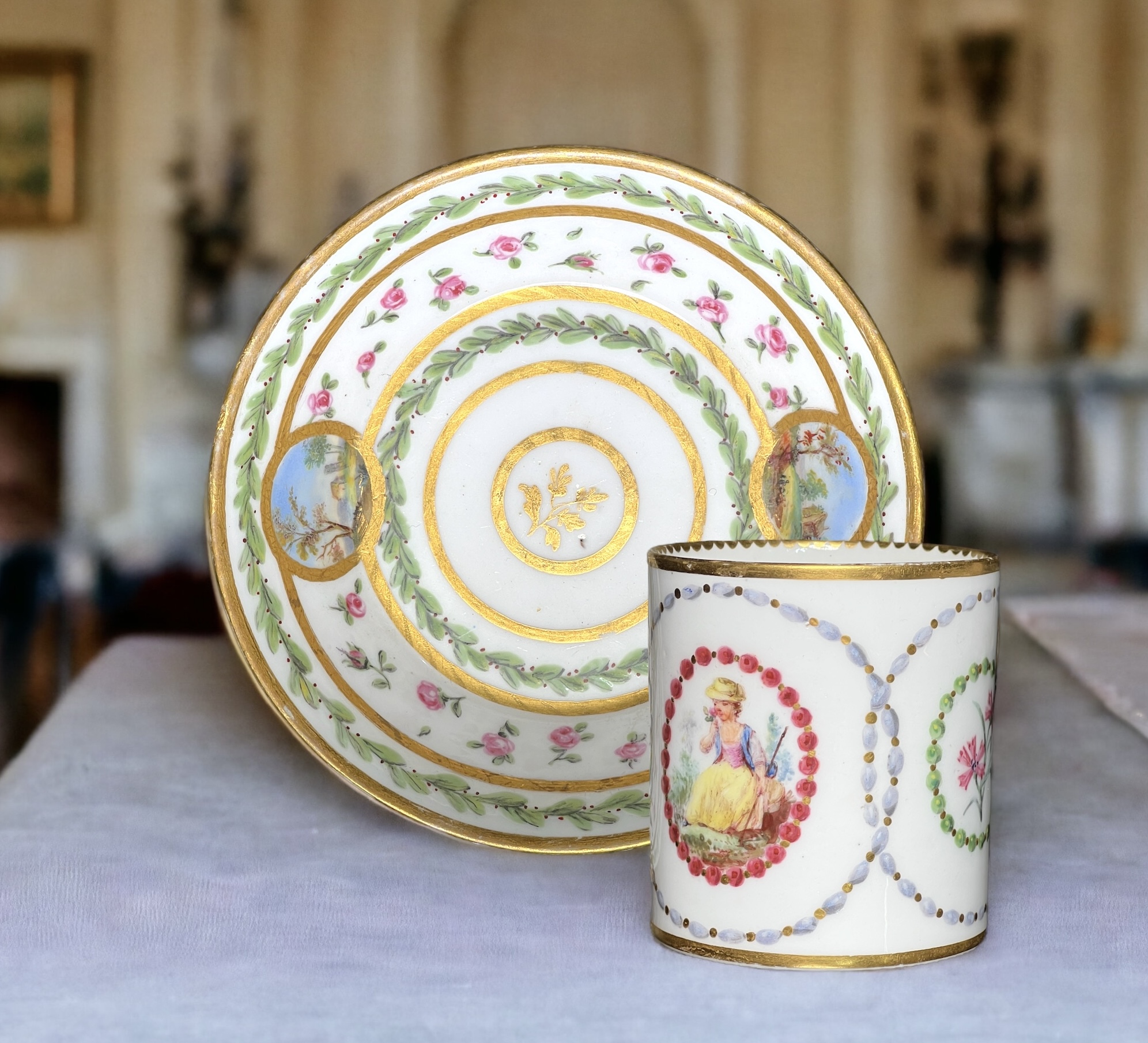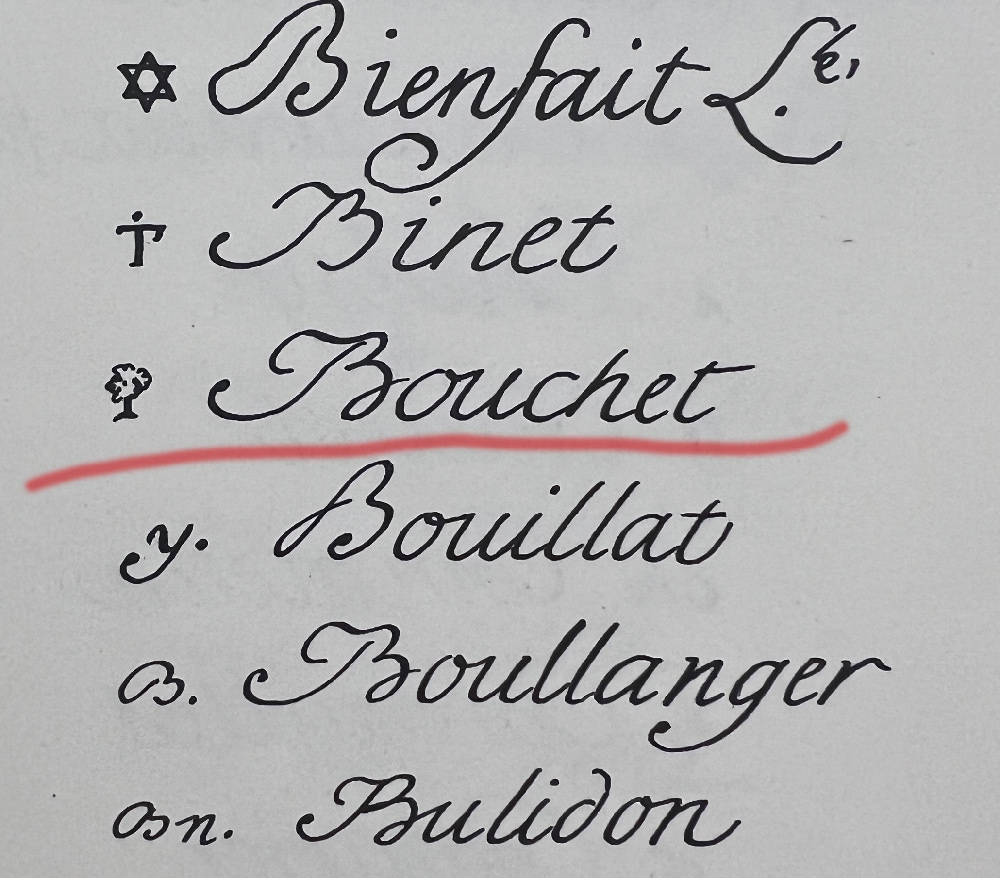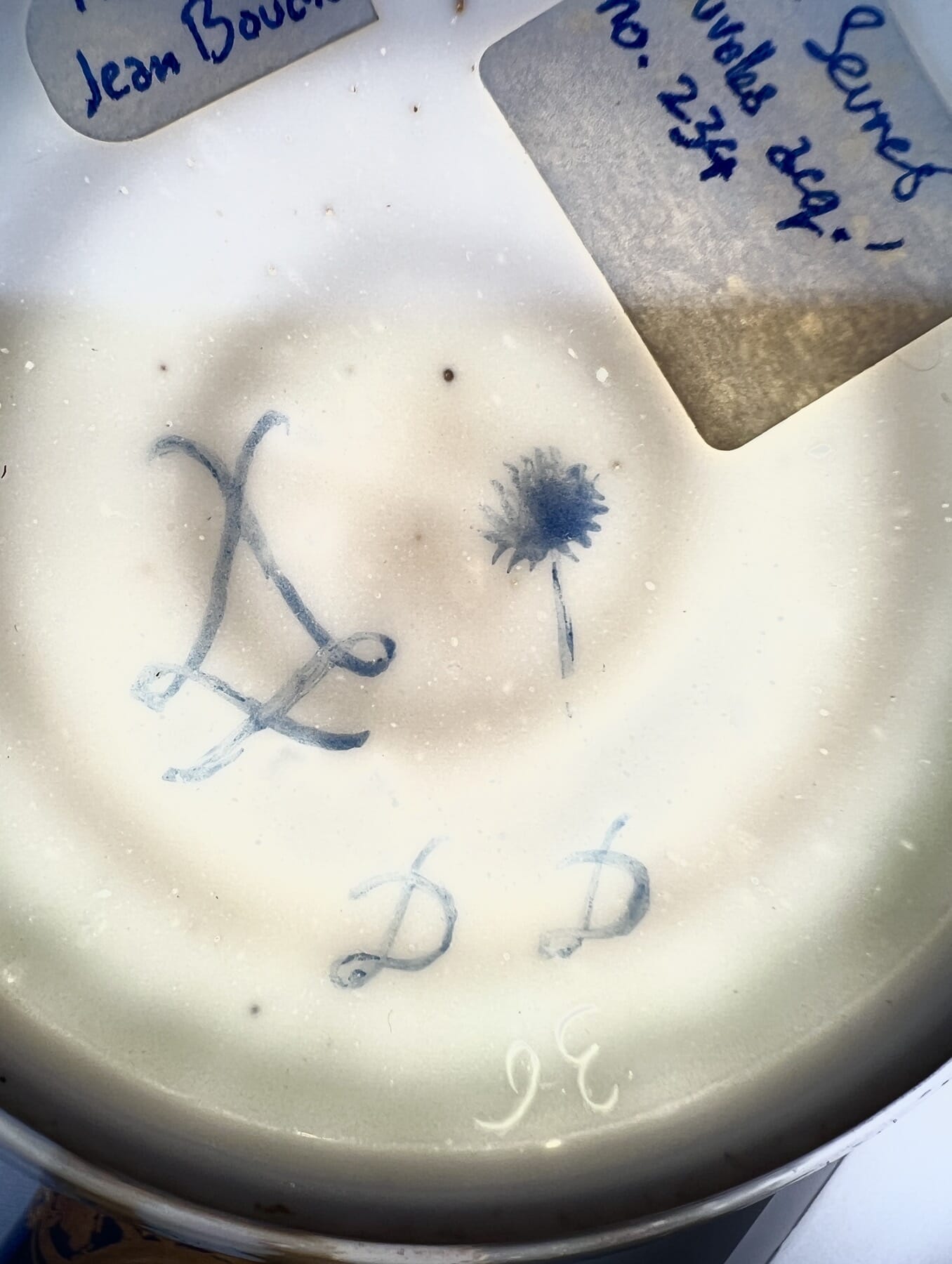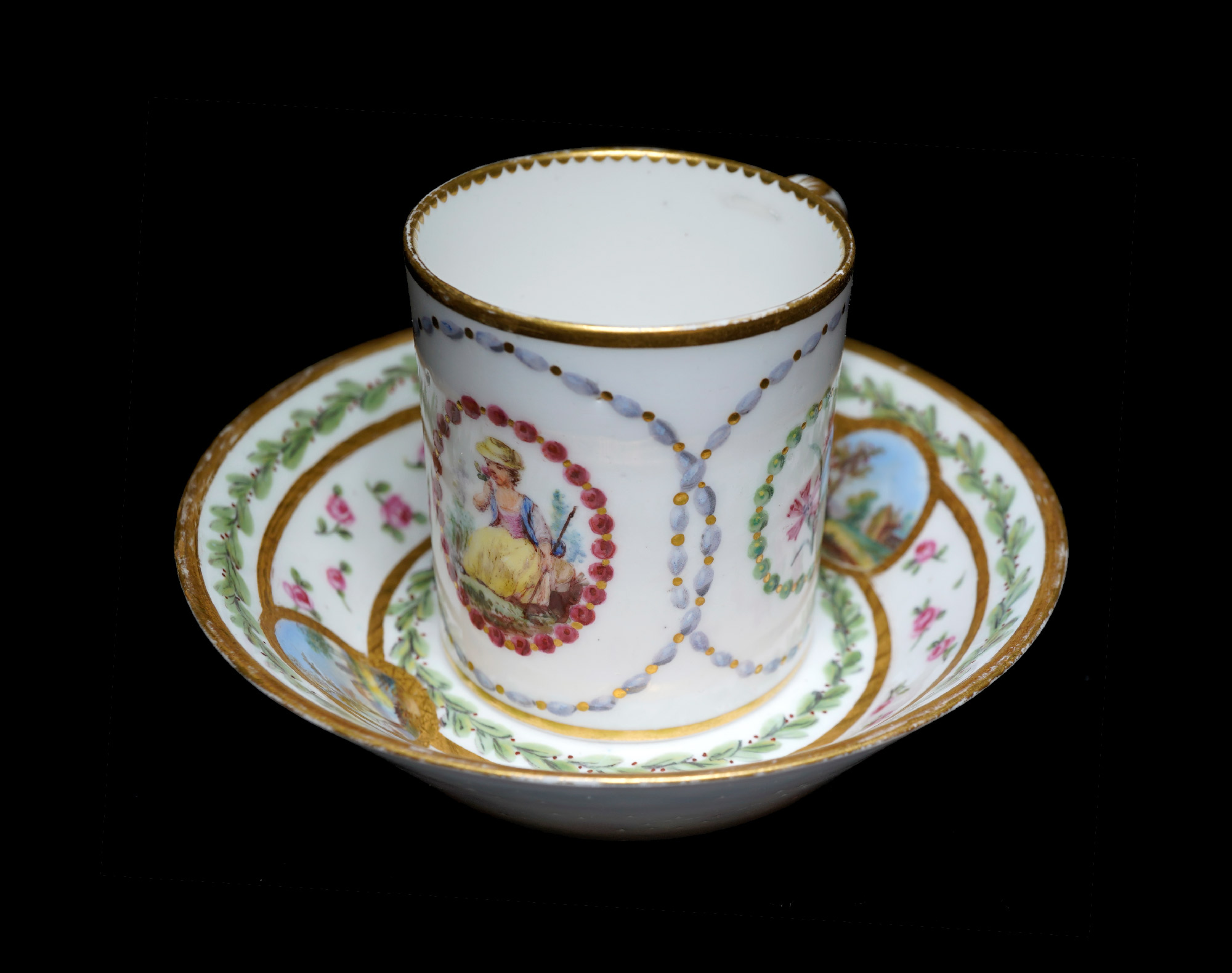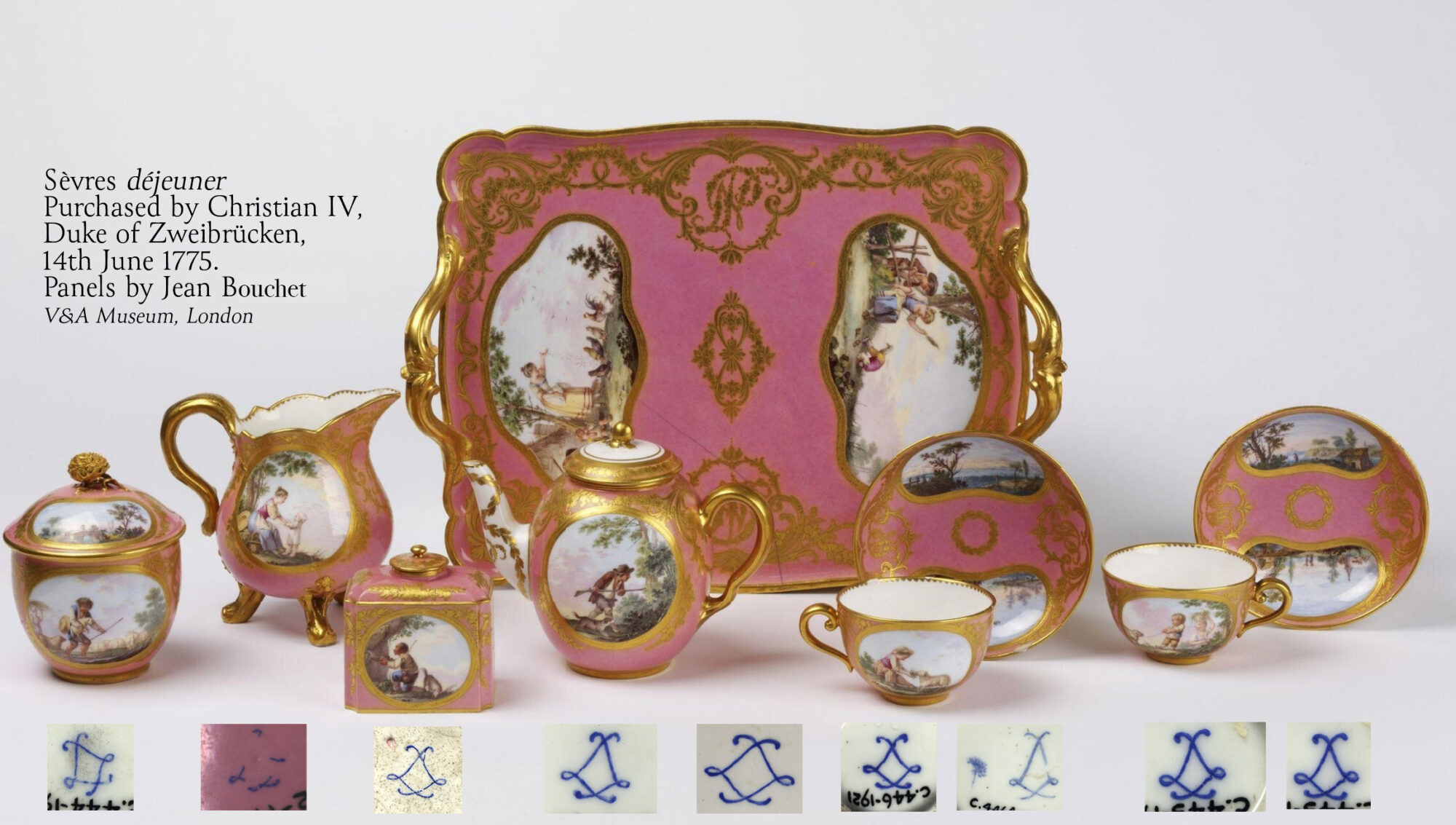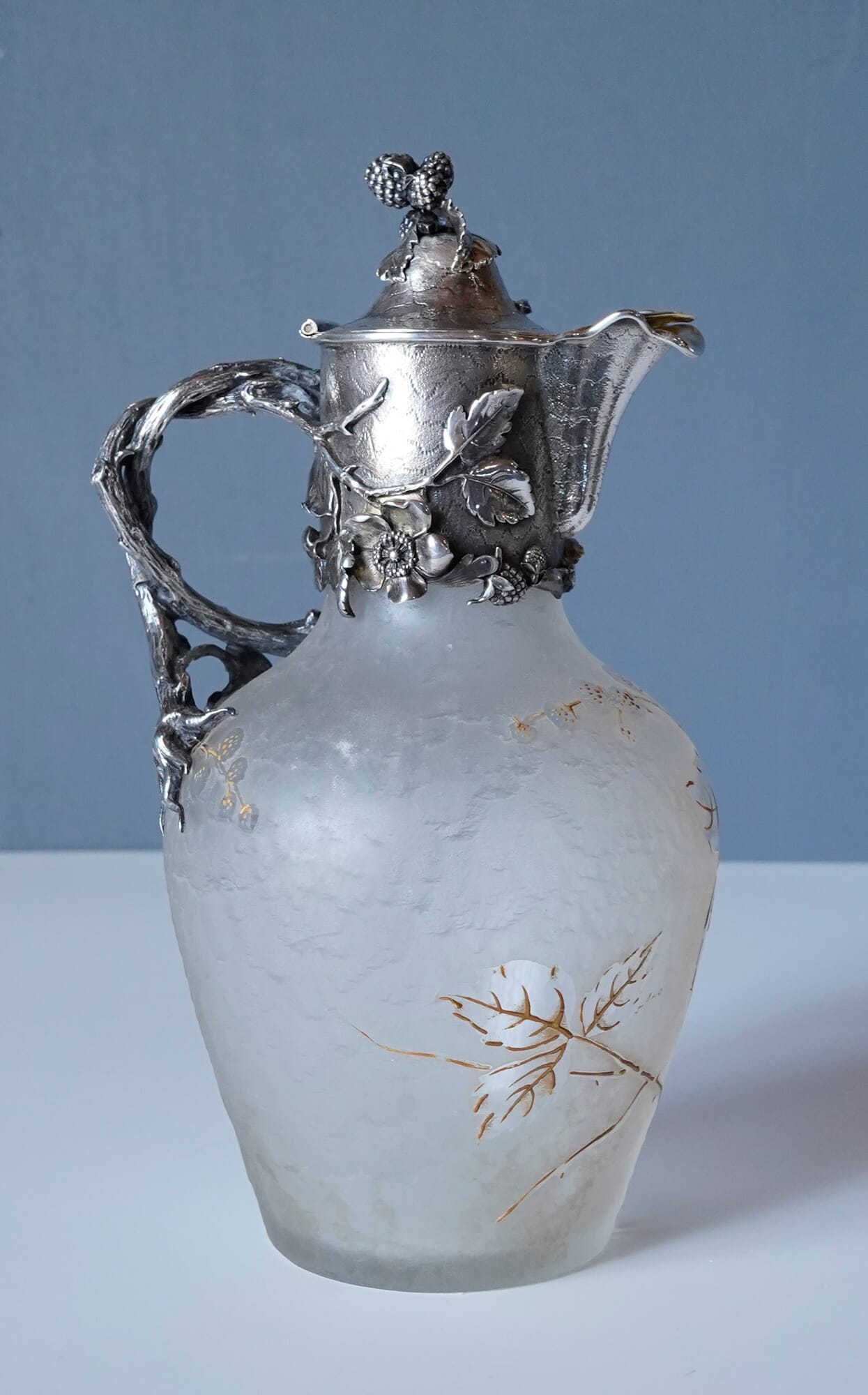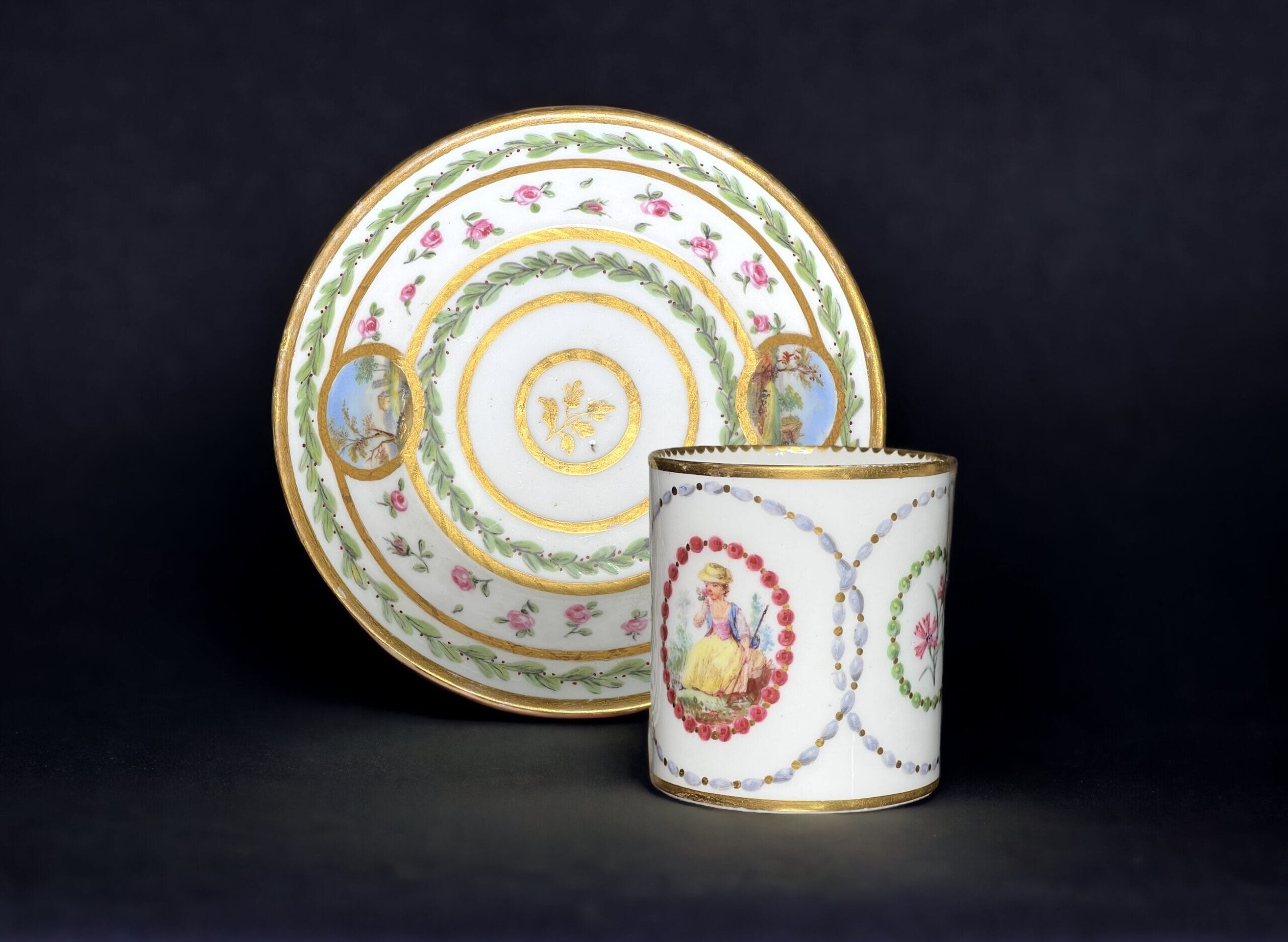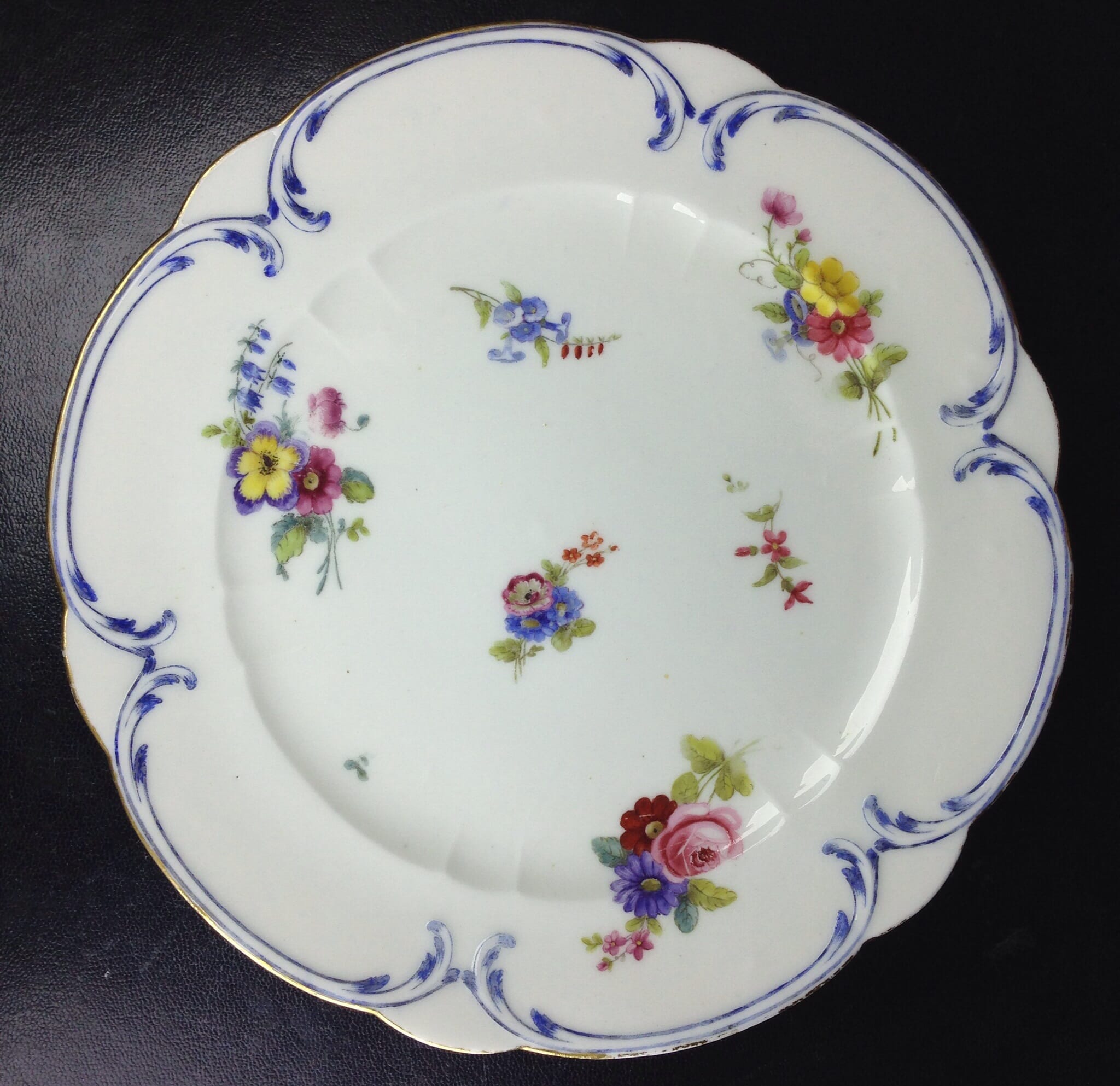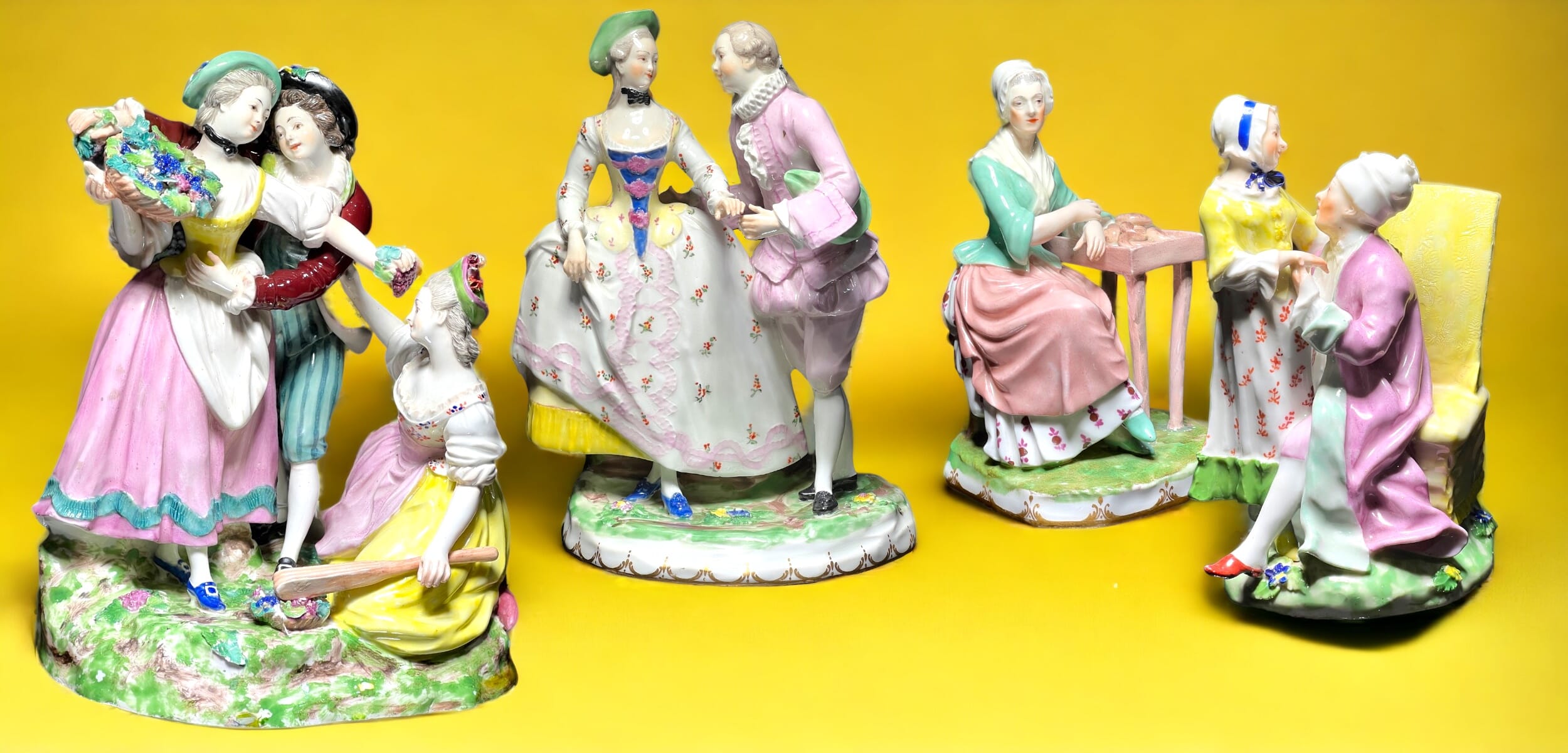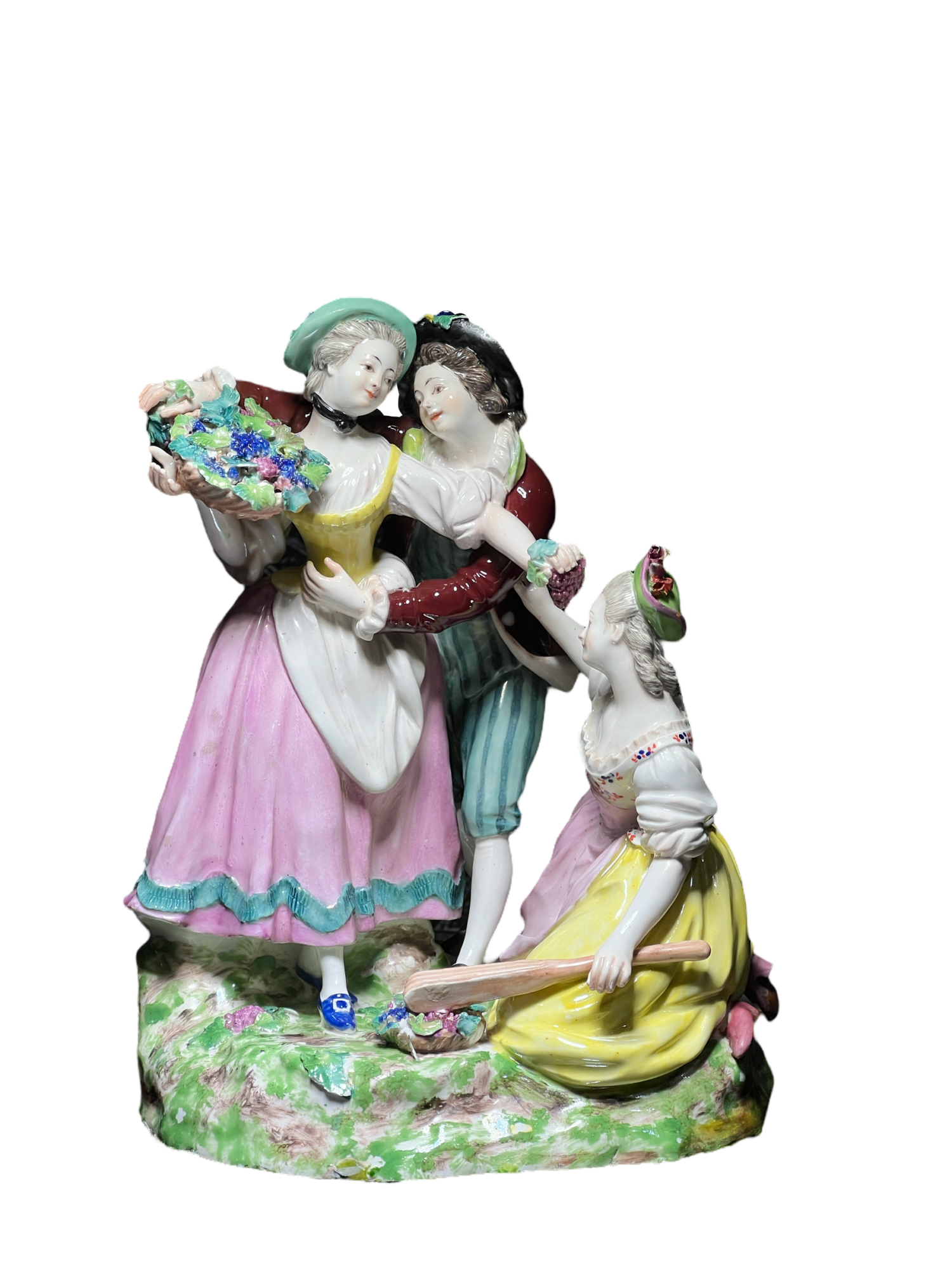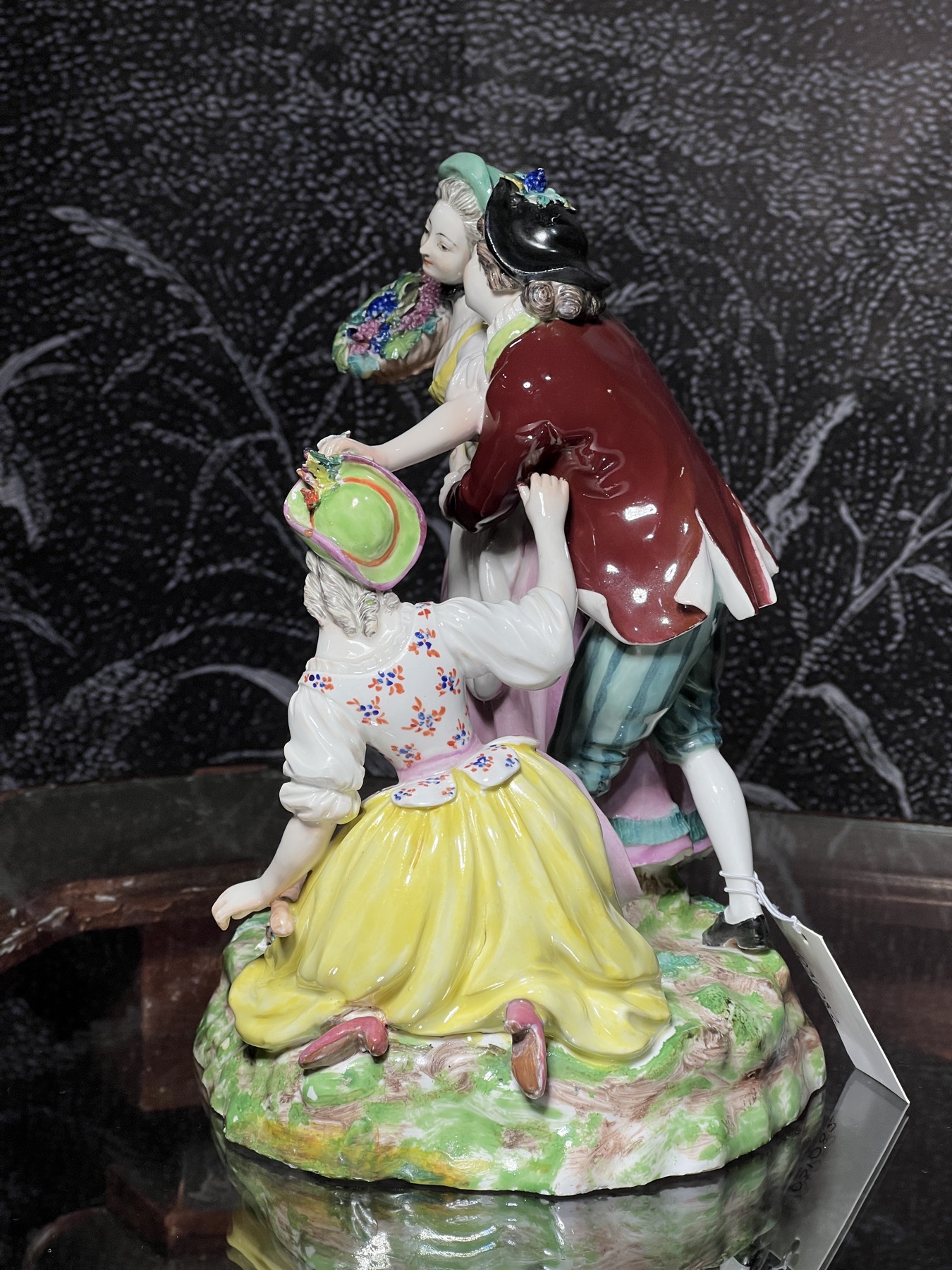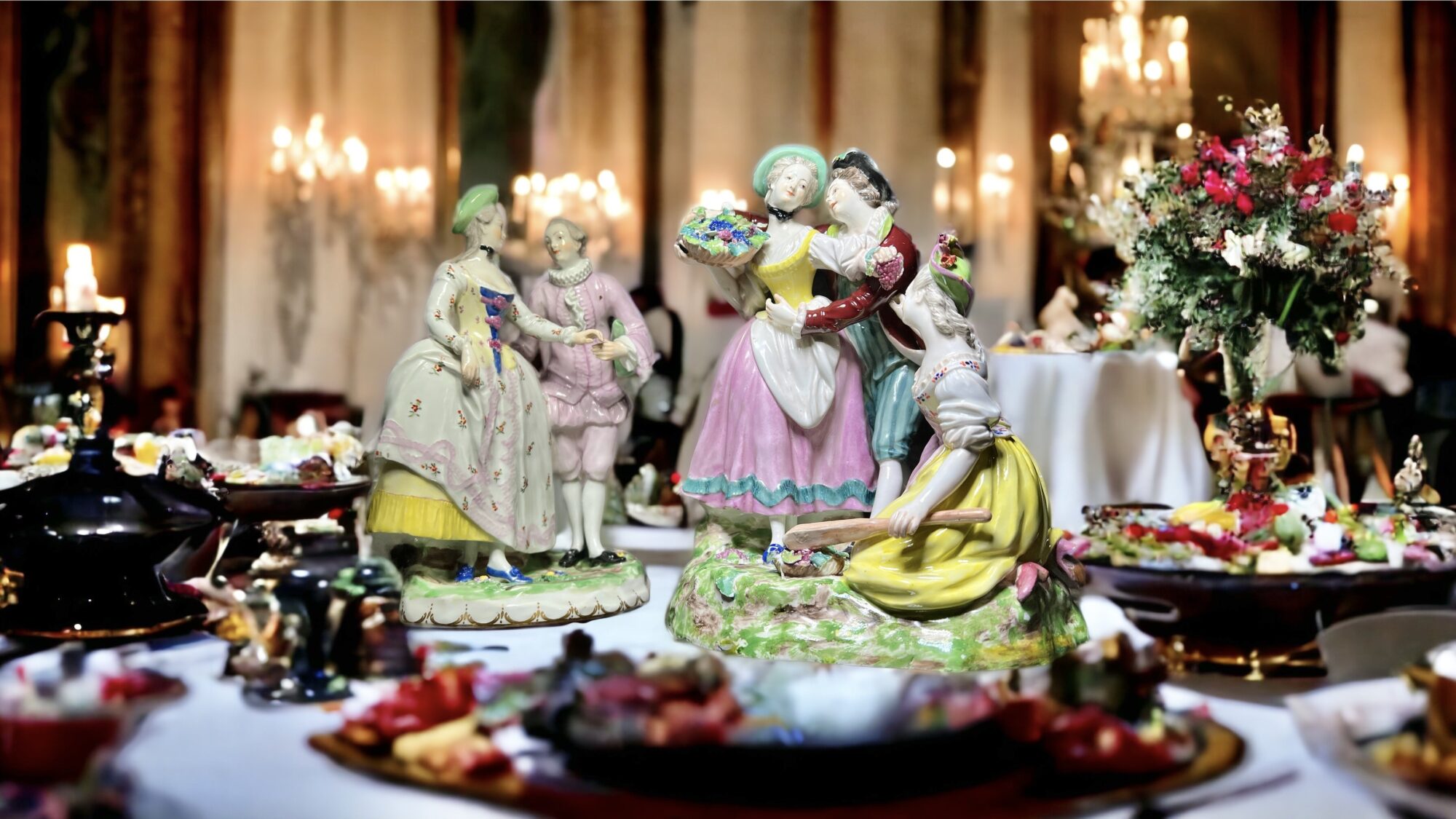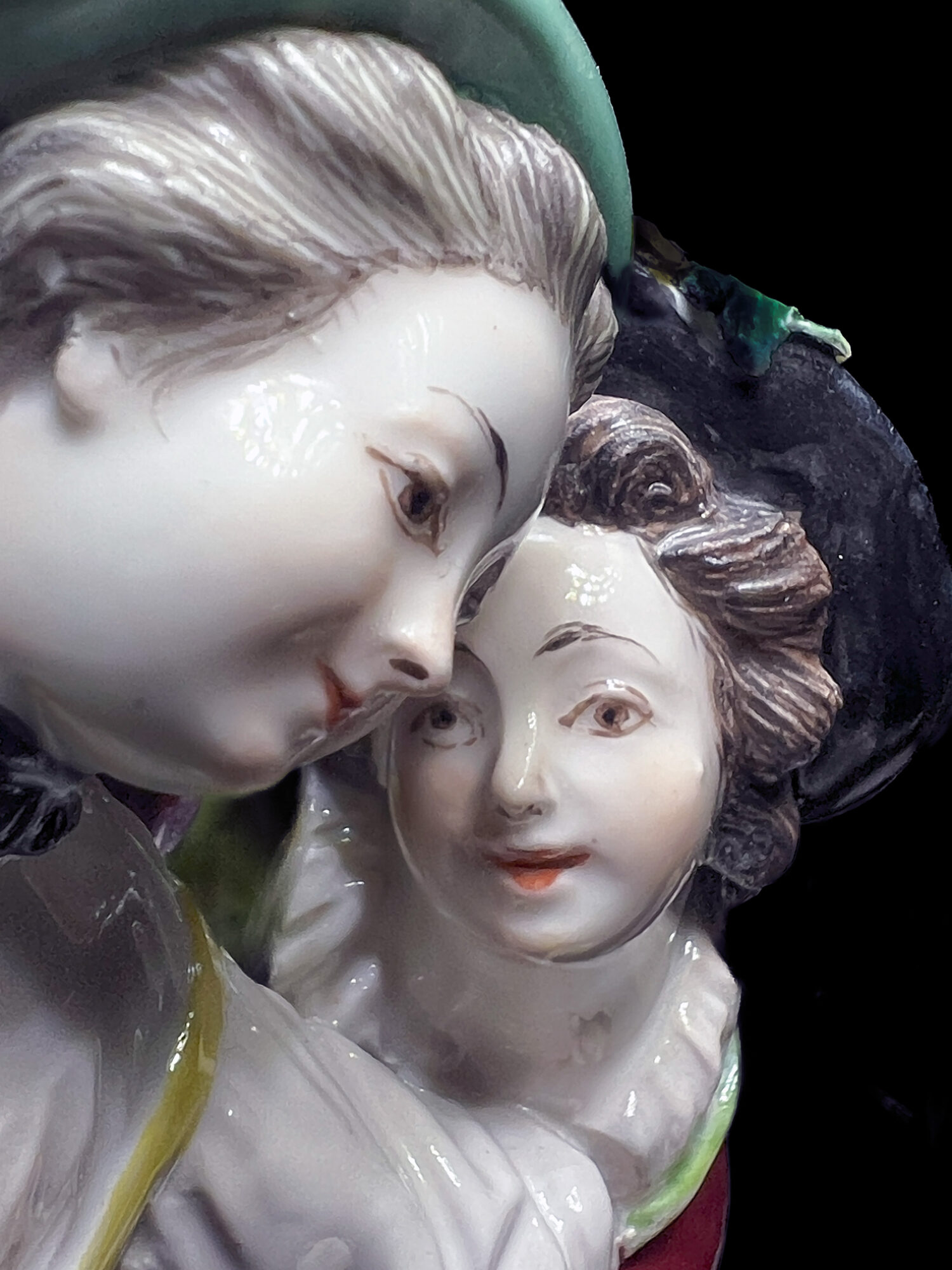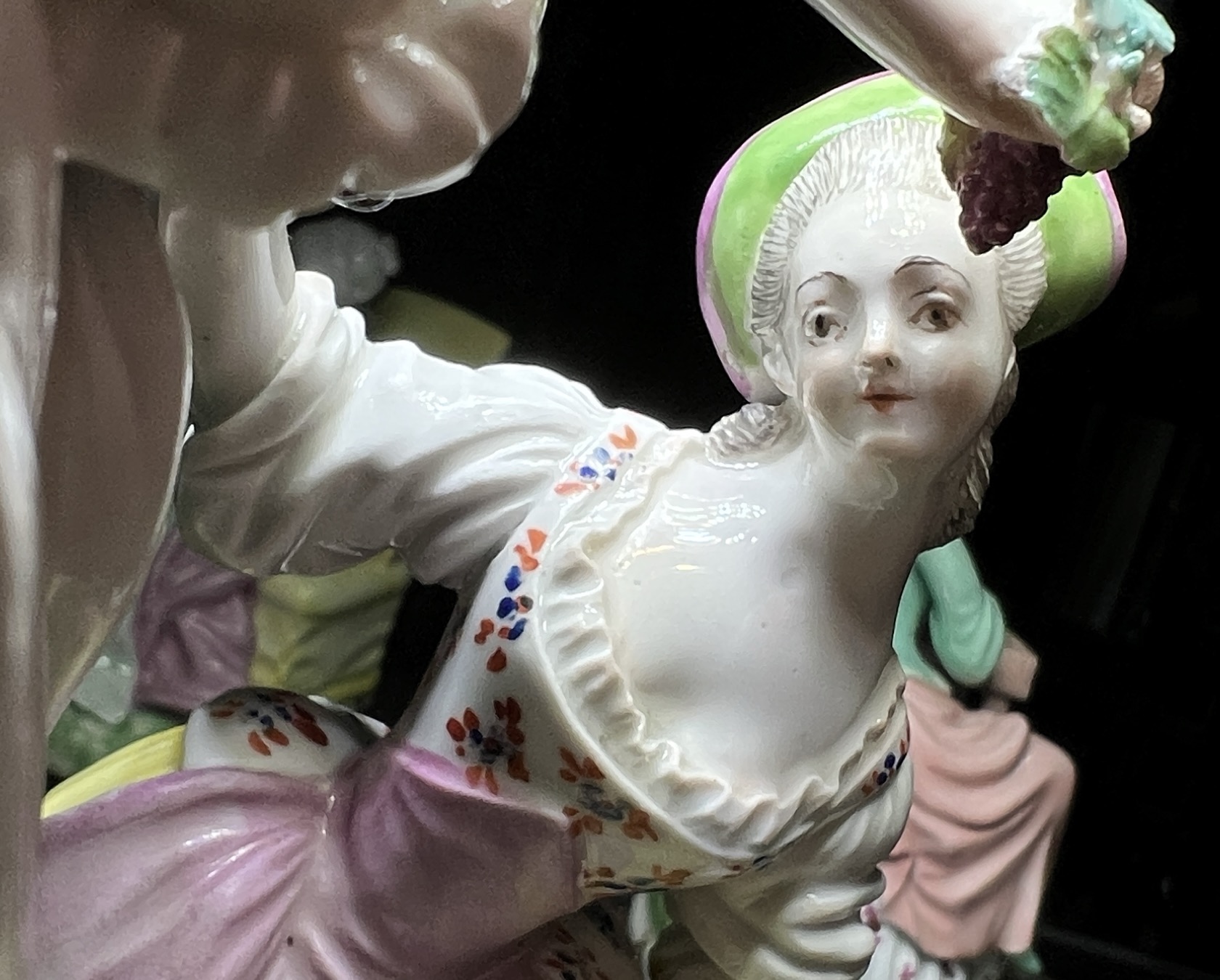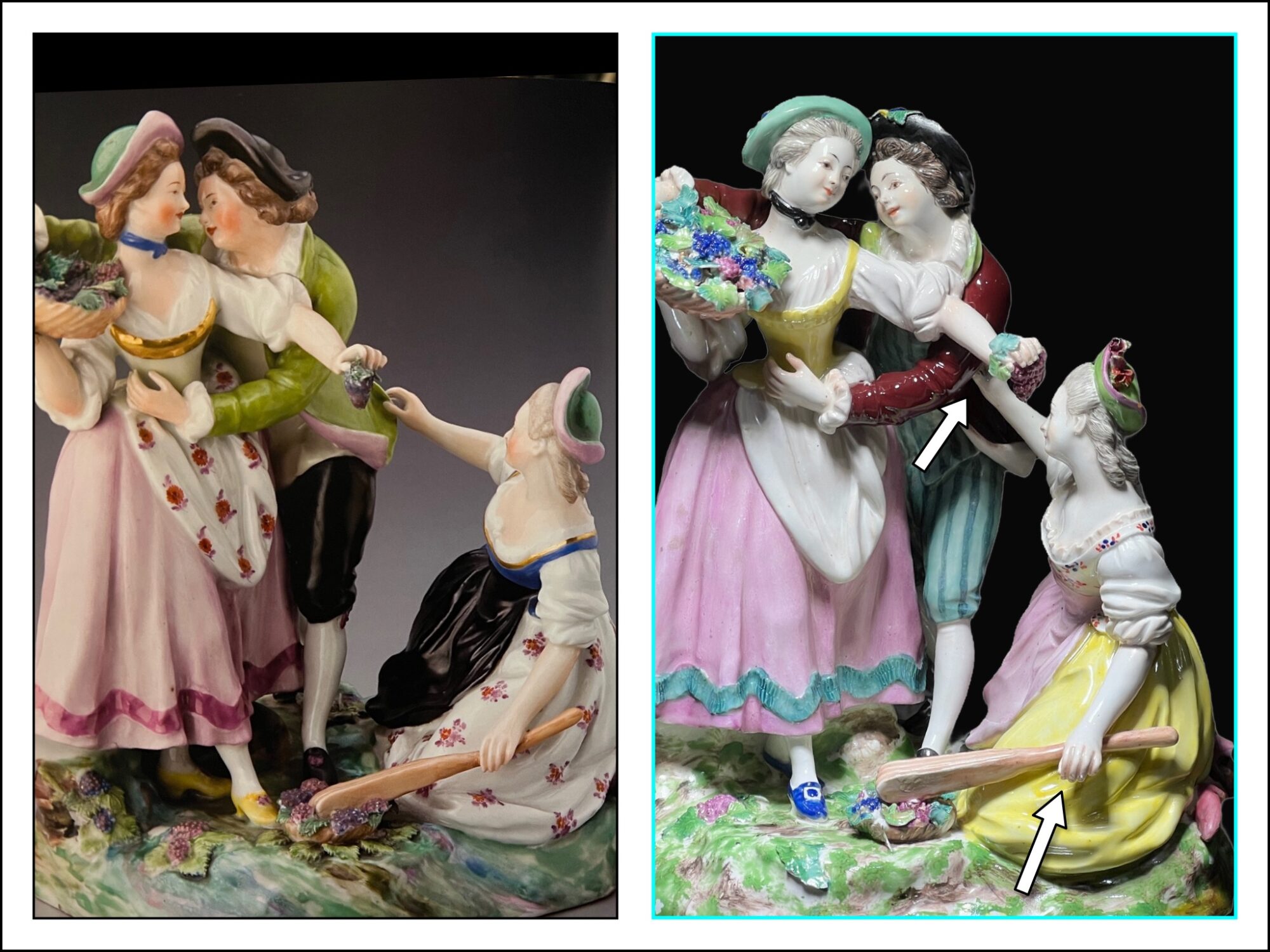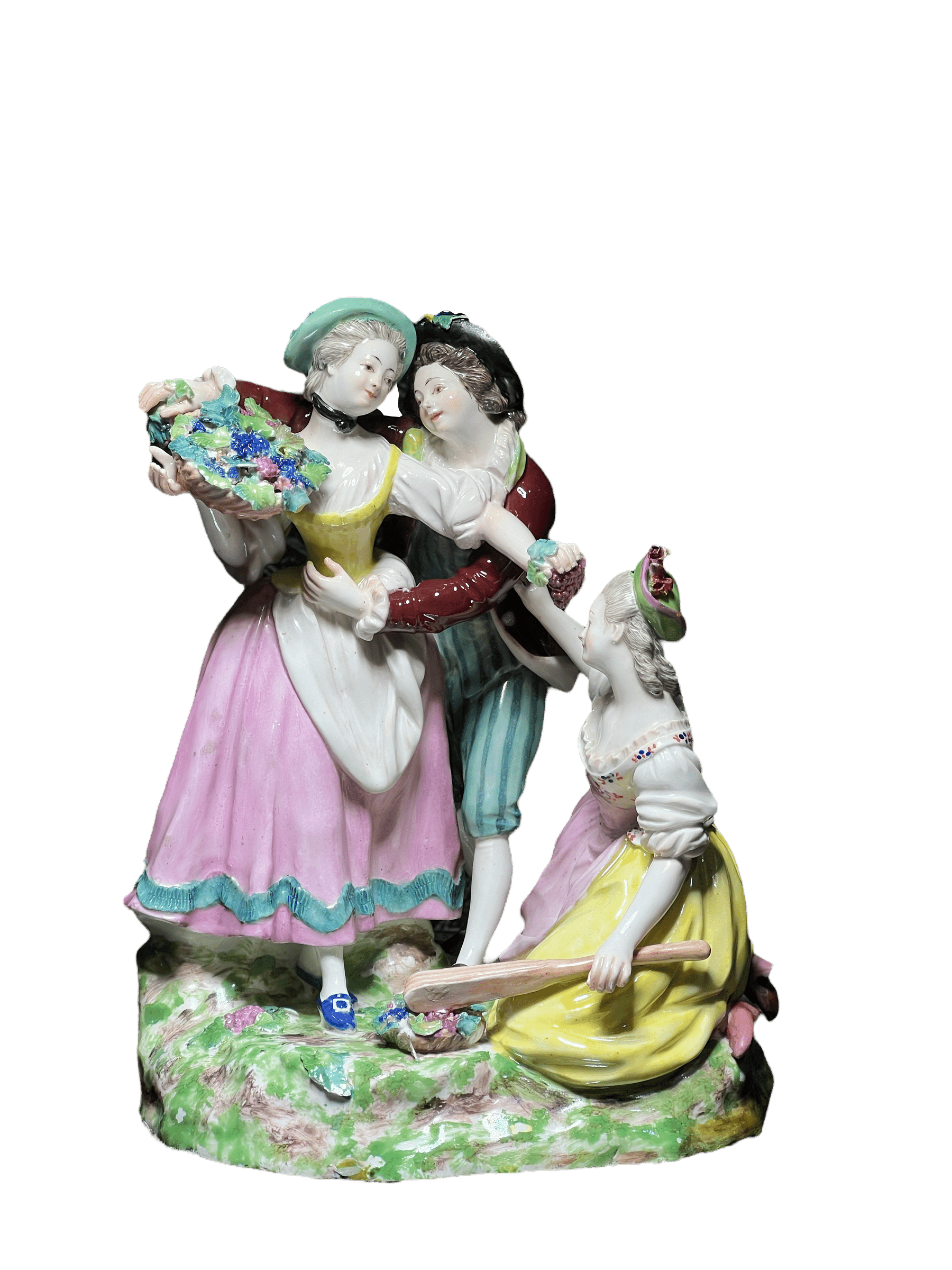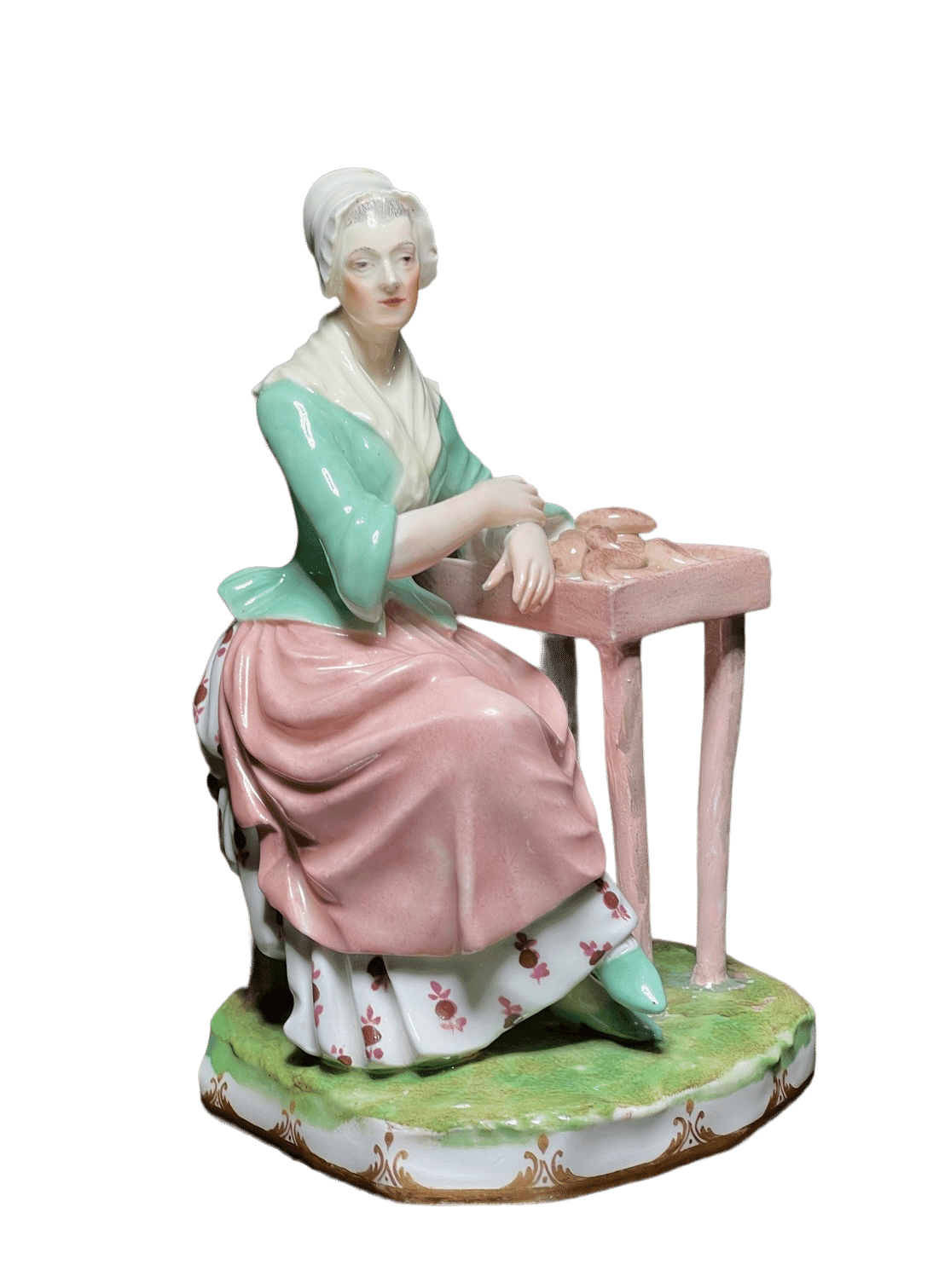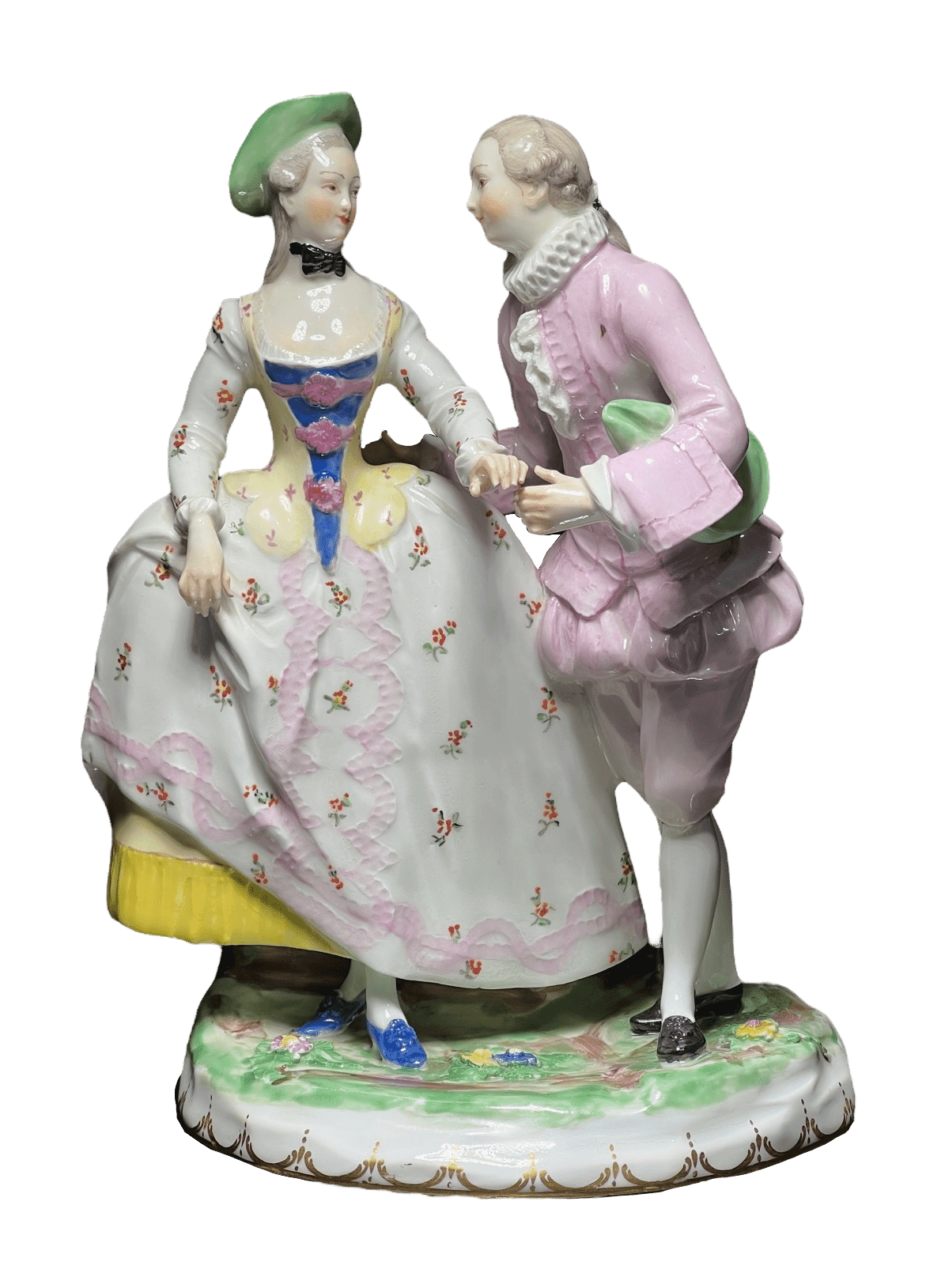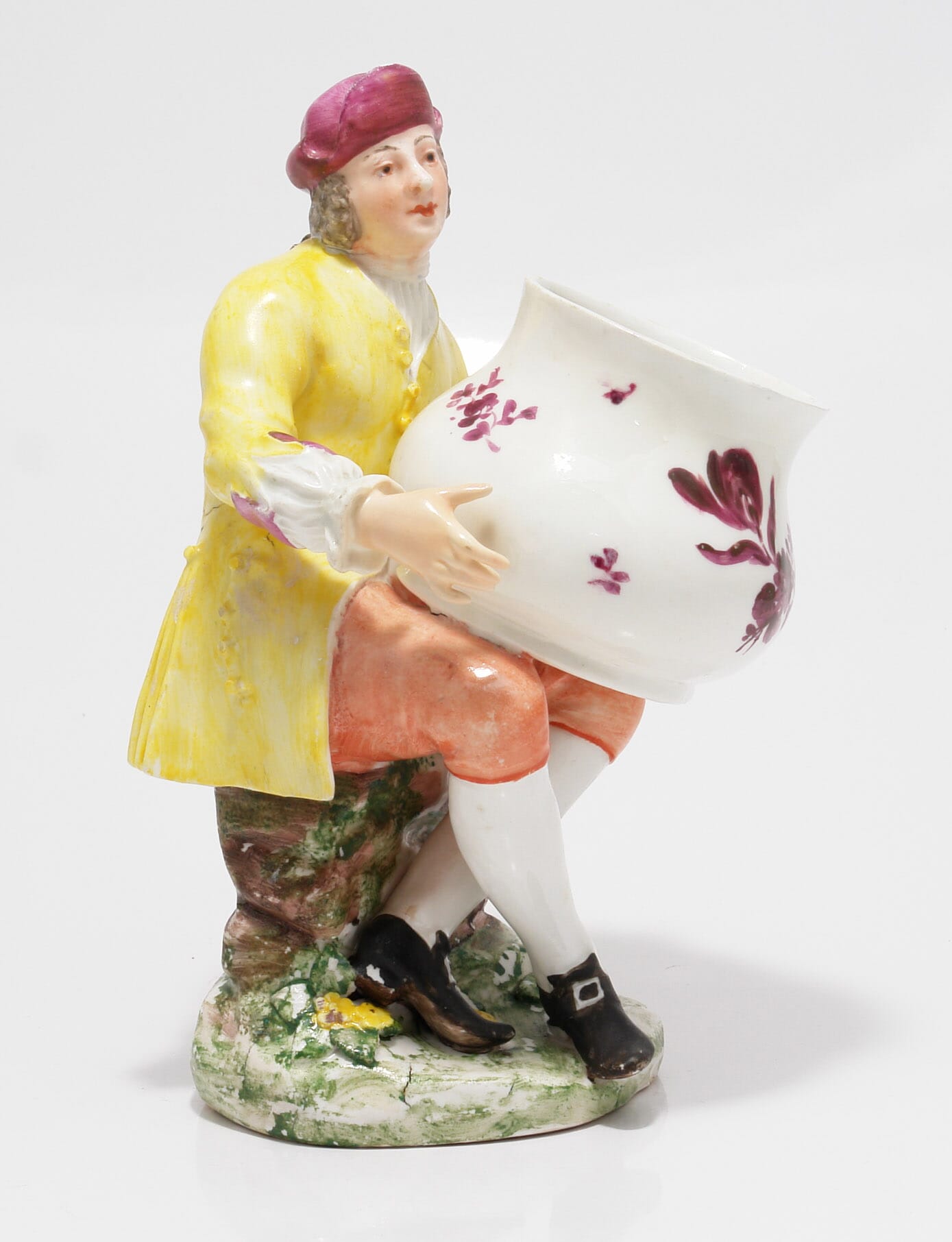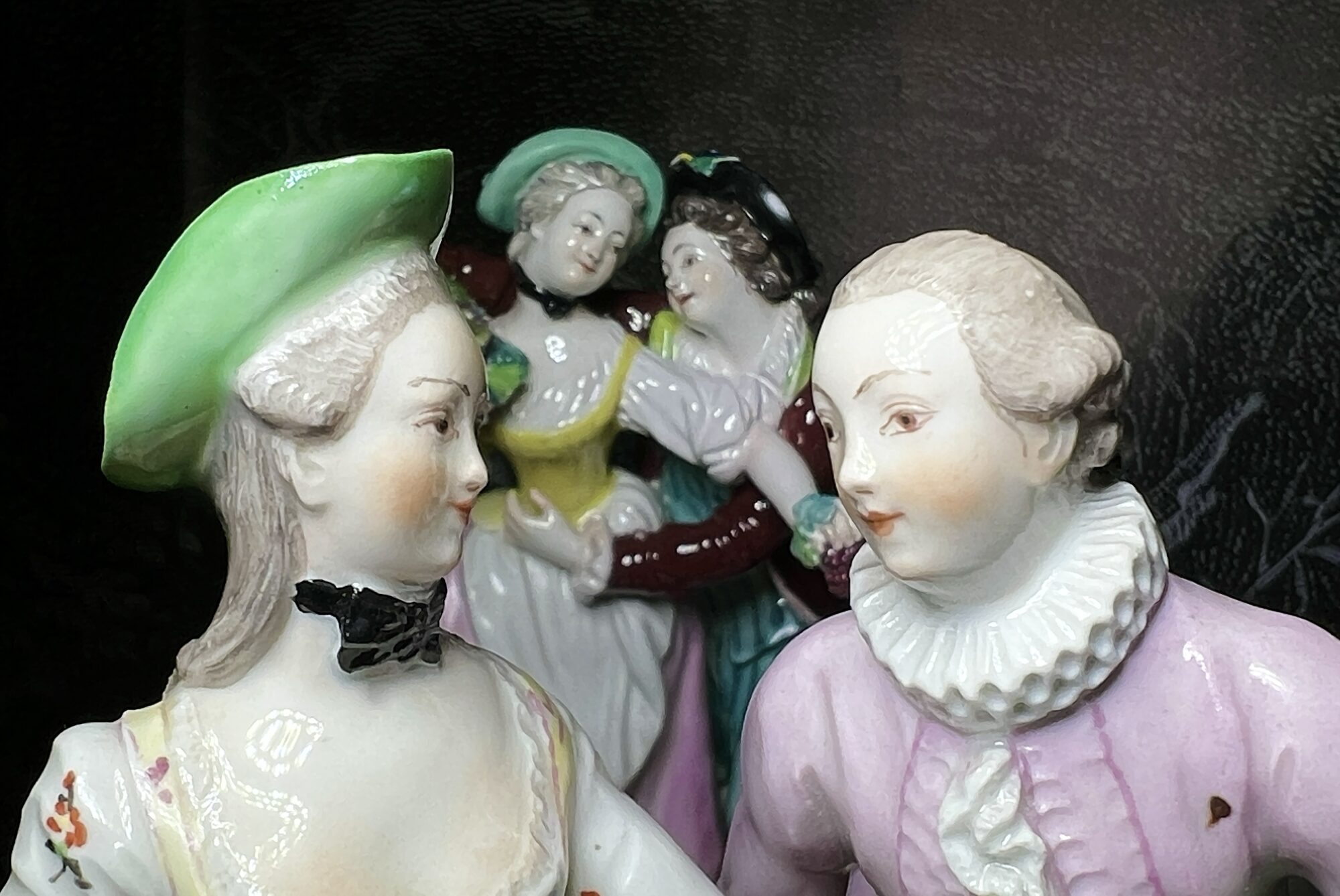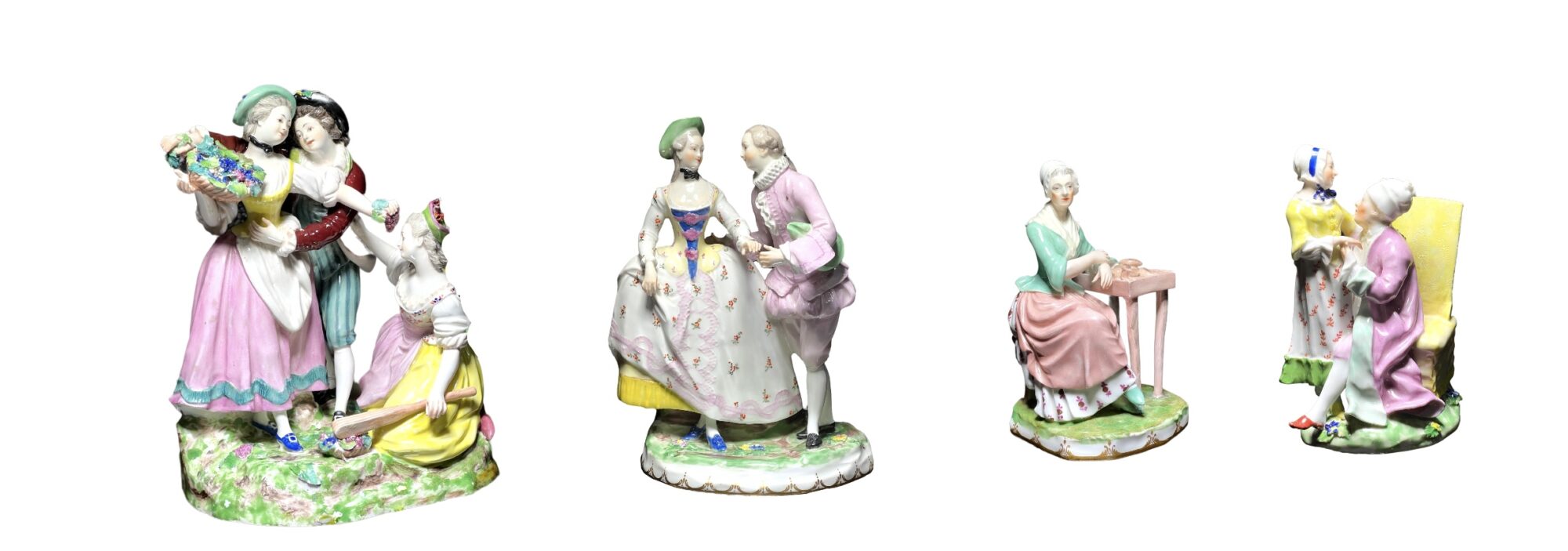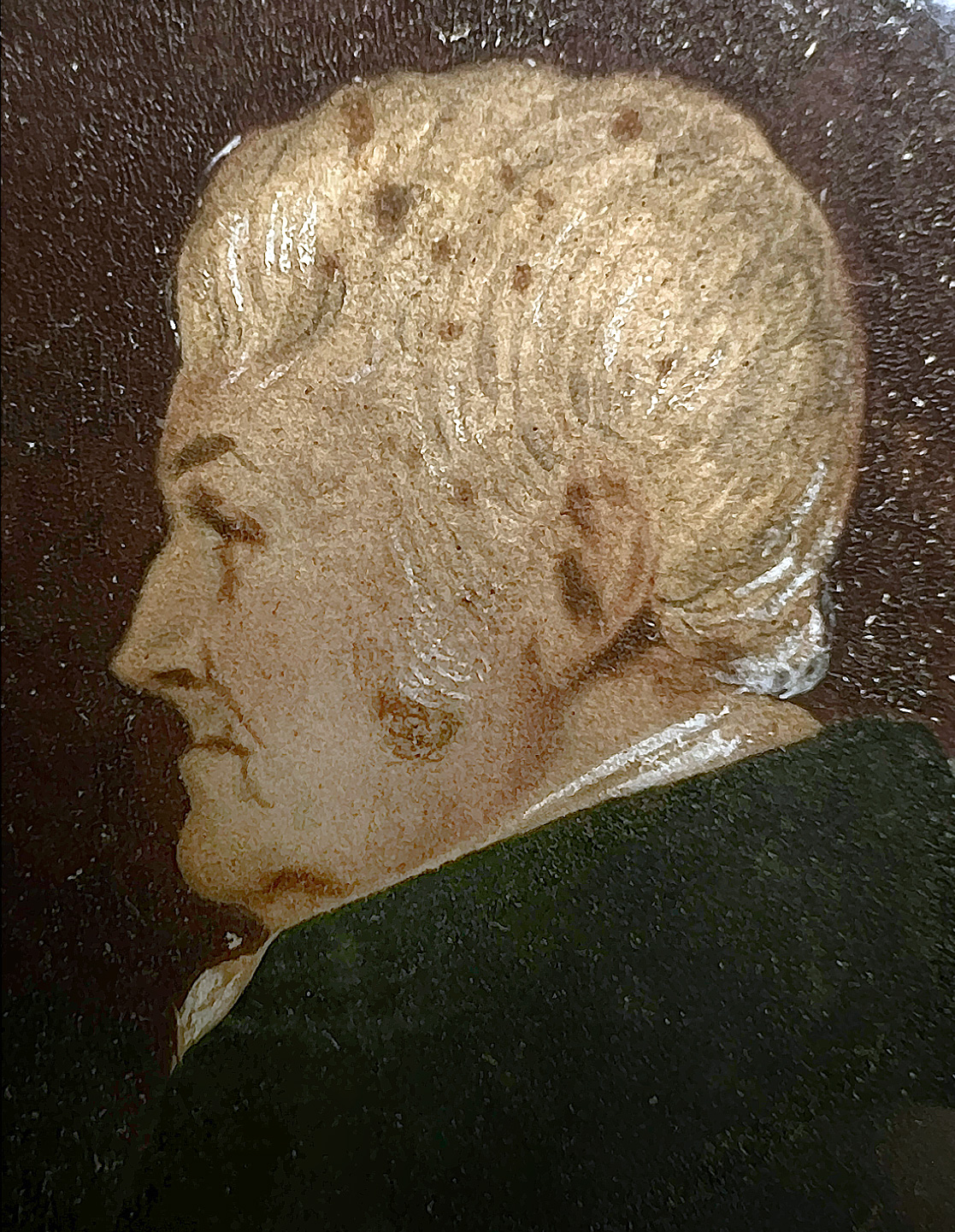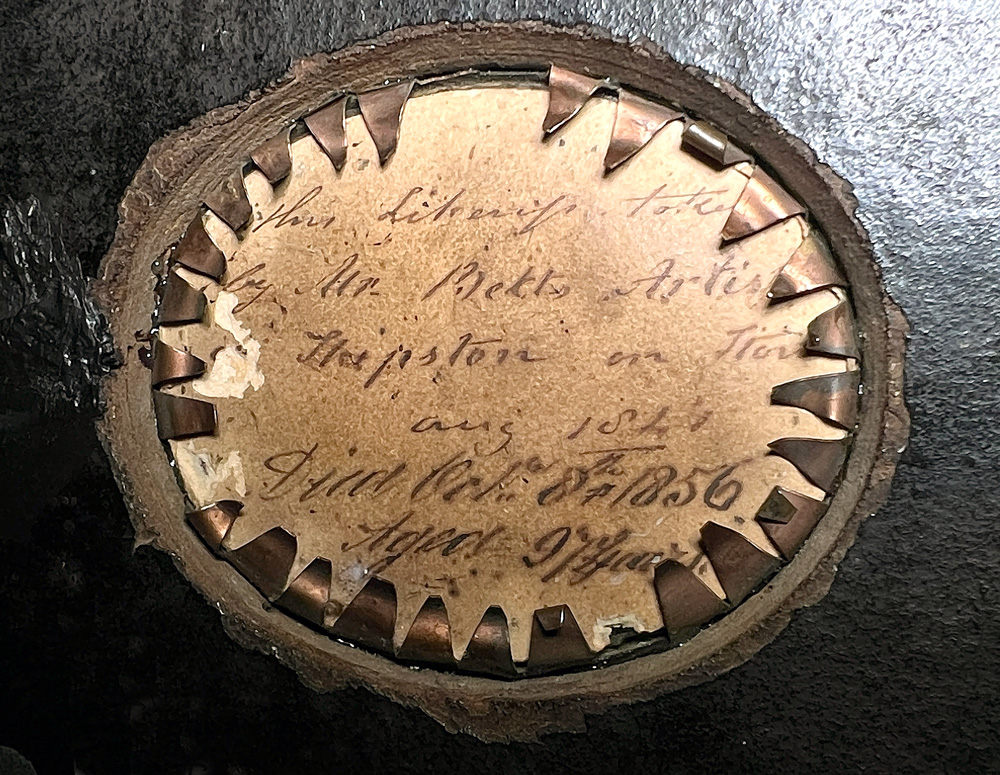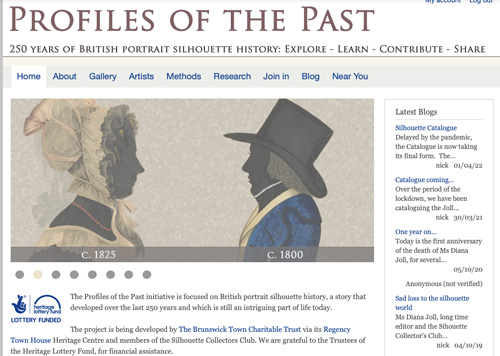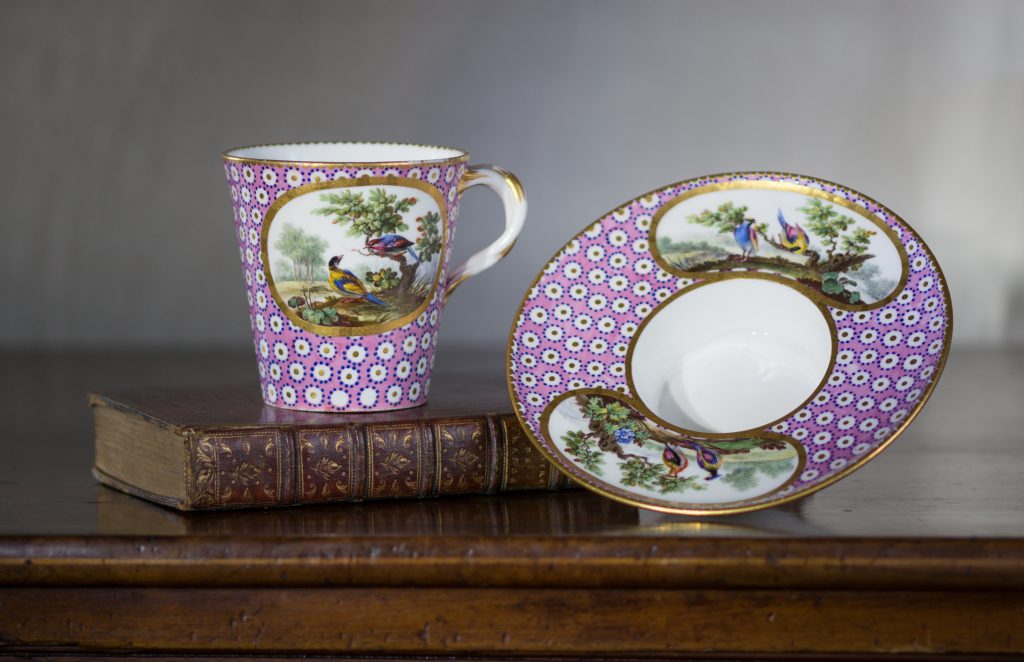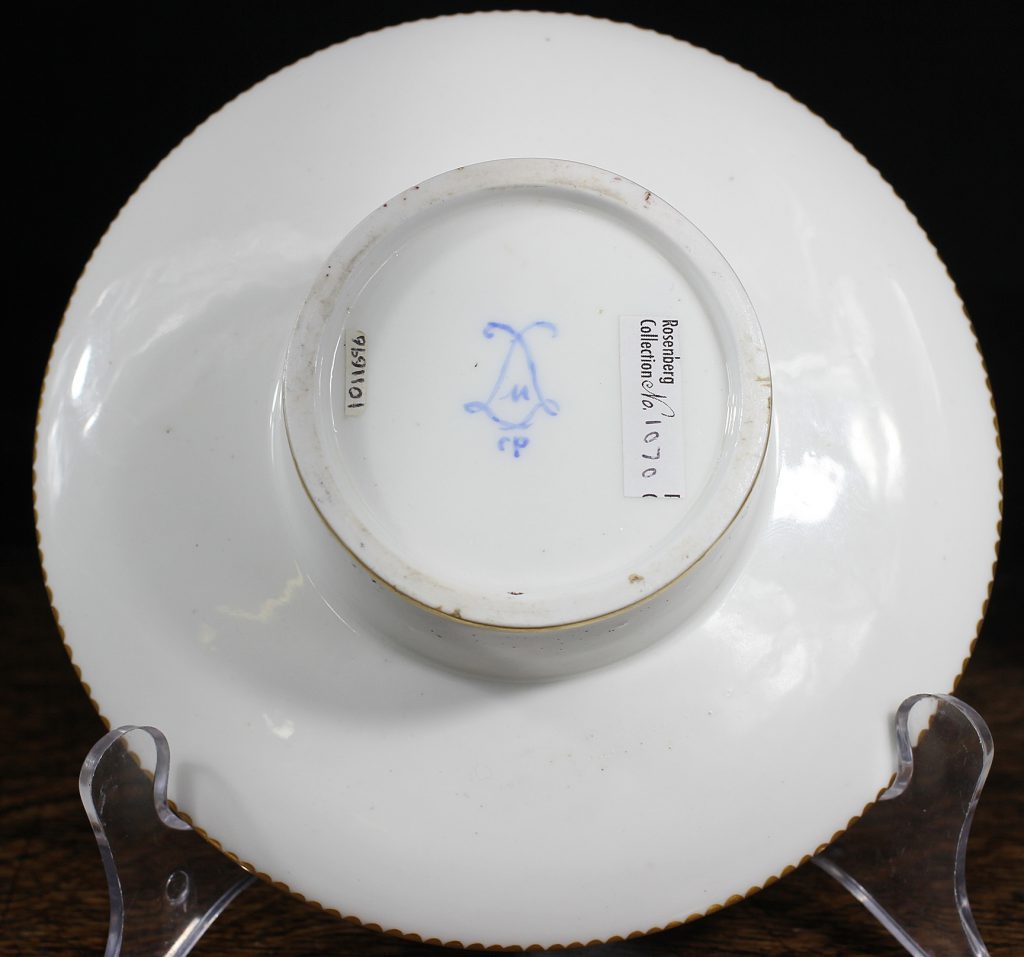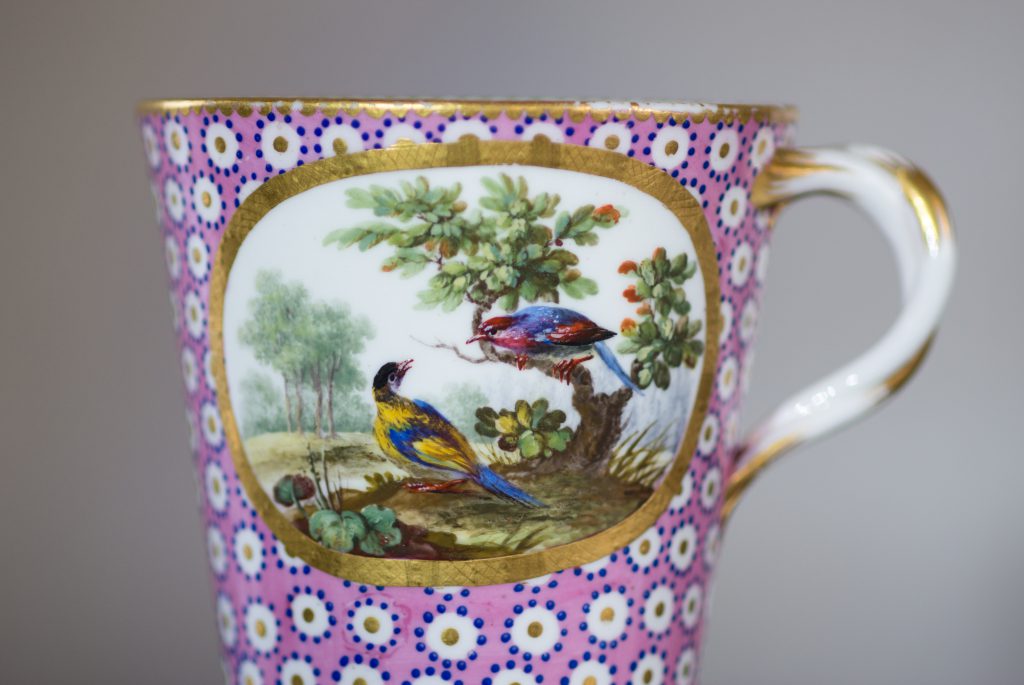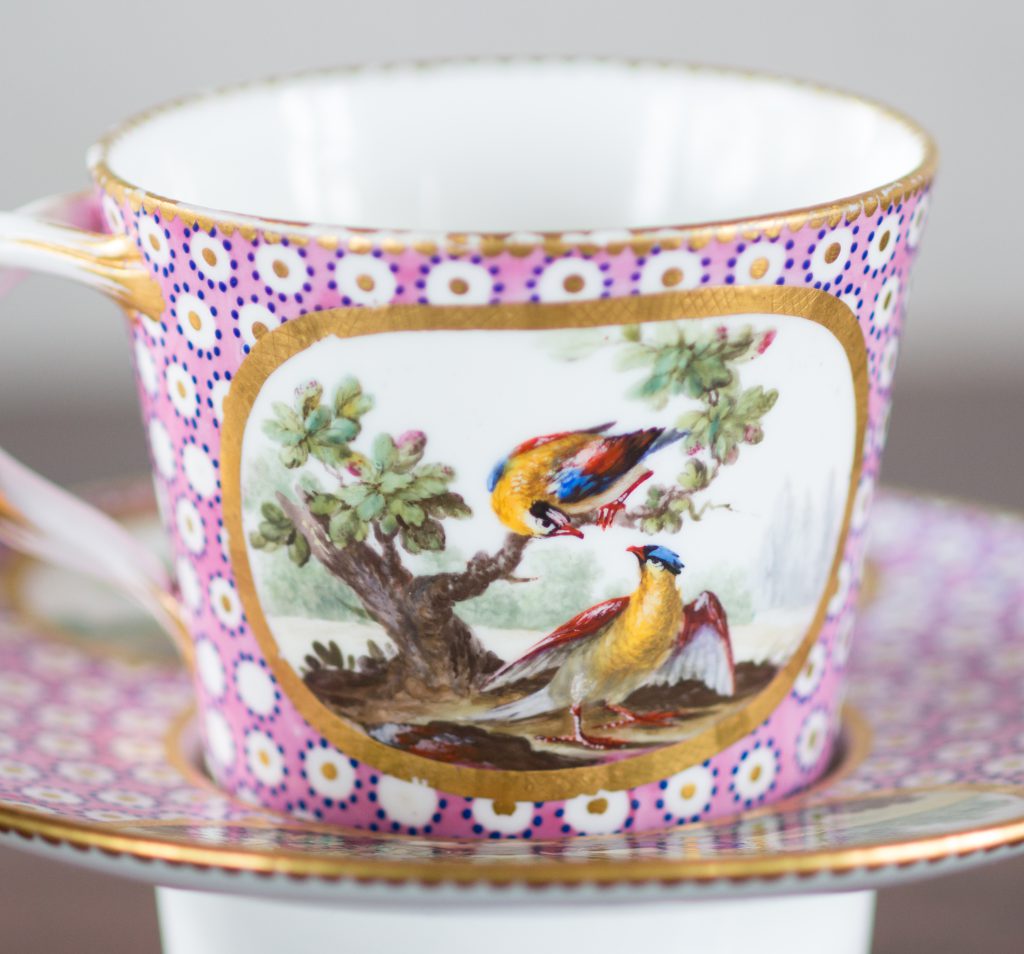
Sometimes, things don’t turn out to be what they look like. While that’s usually a pre-cursor for disappointment when we discover something is made later, or badly damaged – our recent experience was quite the opposite…
An enquiry about some ‘Dresden Cups’ with a photo of the two beautiful beakers illustrated here came to us. The pieces looked superb quality, and Sèvres would be a likely candidate – not Dresden, or Meissen as it is more familiarly known.

Handling them for the first time showed them to be even better than the photos. They are absolutely the most stunning items, and their condition exceptional. Turning them up reveals their surprise : a pair of crossed sword marks, for Meissen.
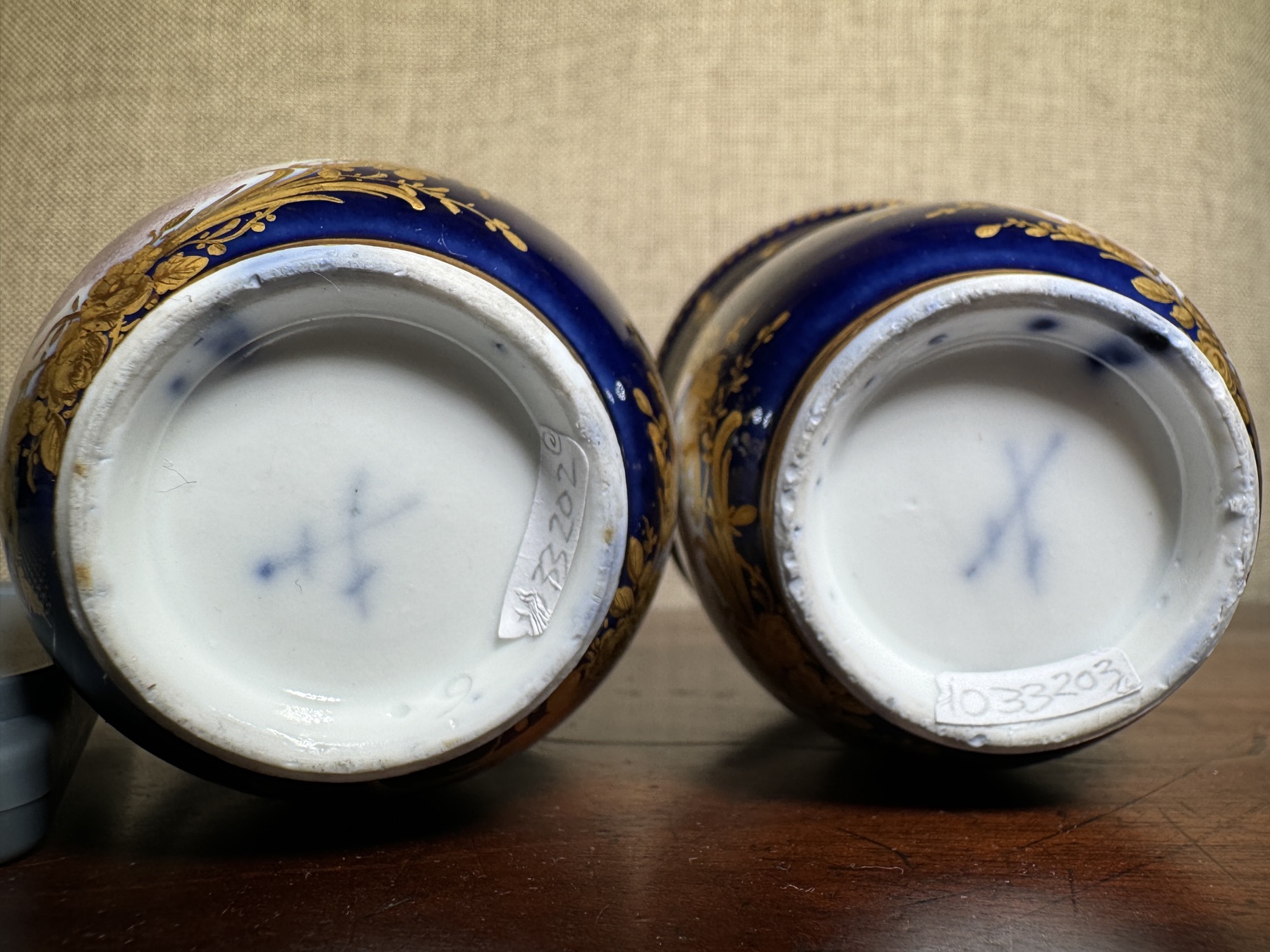
Definitely 18th century, and Vincennes/ early Sèvres style, but Meissen marks; clearly there’s a tale to be told….
A dive into the books brought up the answer: a rare moment in the world of Meissen, when it no longer led the way in porcelain taste in Europe, but followed the French. Once we had established the period, we were able to attribute the artist: Johann George Loehnig (1743 – 1806).
His work is rare. He was listed as one of the 1st-class artists in Meissen between 1764 and 1770. In 1786 he was still listed as a “…figure painter of the most exquisite class” in the manufactory’s list of painters. The artwork source for the lush and expressive putti were mostly provided by Johann Eleazar Zeissig (1737 – 1806), called Schenau, who in turn was inspired by François Boucher (1703 – 1770).”
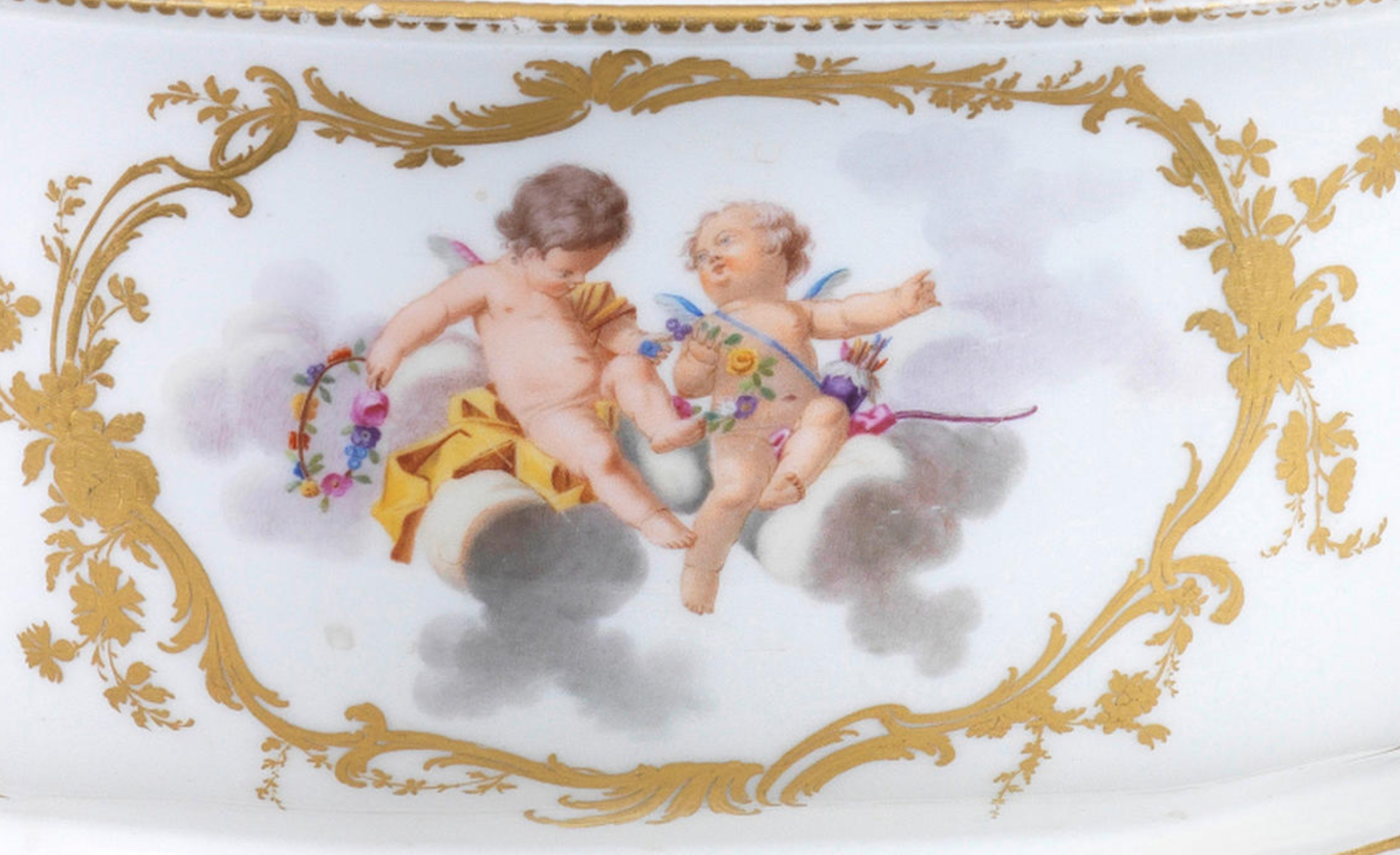
Sèvres cherubs, 1758-9
Meissen cherubs, c. 1770


Meissen c. 1770
Meissen c. 1770
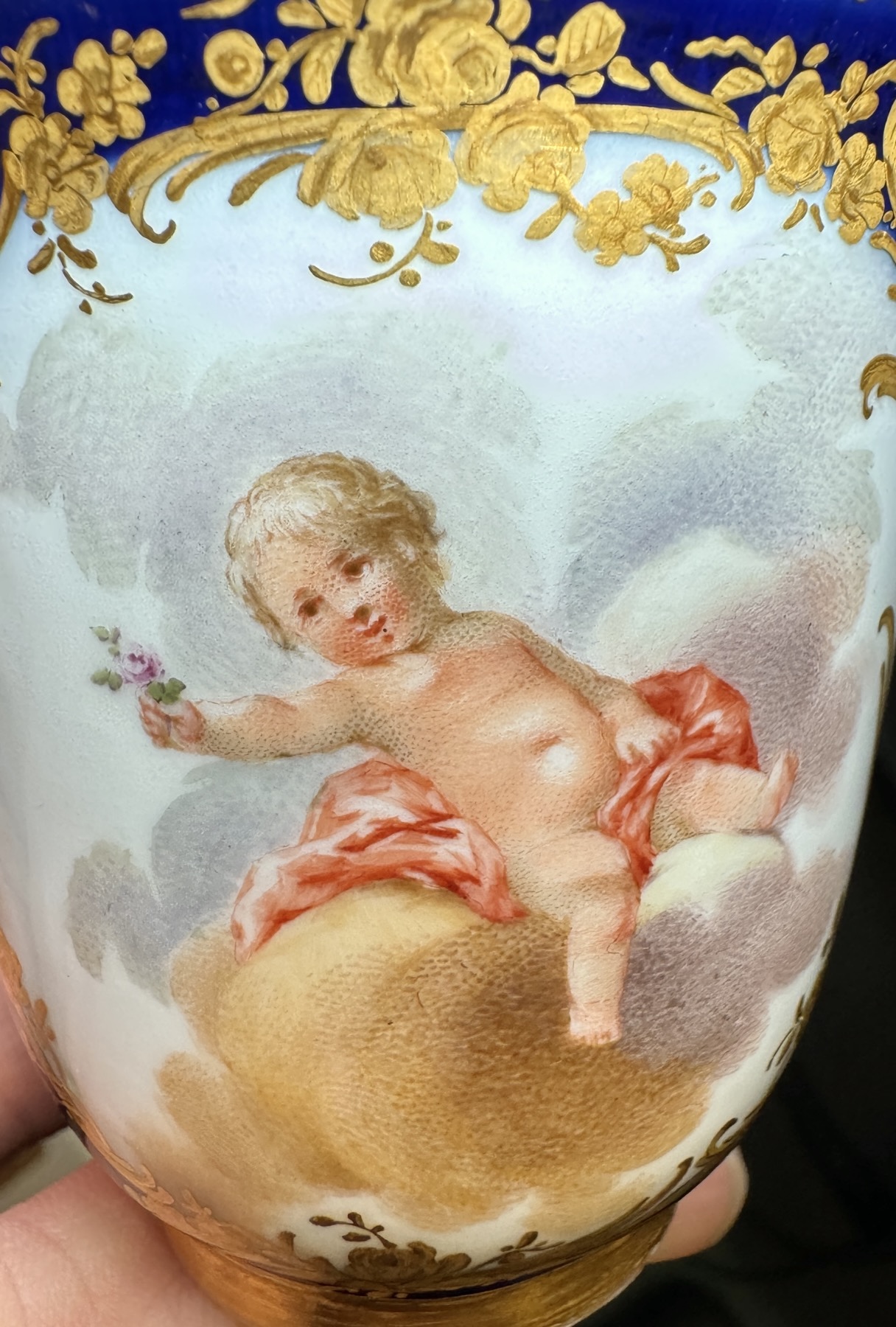
Meissen, the pioneering porcelain manufacturer in Europe, had led the field in discovering how to manufacture porcelain, inventing and defining the European taste for porcelain right from their first creations in the first decade of the 18th century. By the 1770’s, they had a large number of competitors, and lost their lead as innovators to other makers. There are several shapes ‘borrowed’ from France, and this cup shows the strong demand for the ‘French’ taste, decorated in a design that first appeared in Vincennes & Sèvres products in the 1750’s. While the Sèvres examples were based on the paintings and prints of Boucher, it has been suggested that the designs for the Meissen examples 25 years later came from the works by Schenau (Johann Eleazar Zeissig), Director of the Royal Academy of Arts in Dresden – who was himself directly influenced by the works of Boucher.
Very few examples are to be found of this direct copying, and appear to be limited to a few very exclusive tea sets – and chocolate, as seen here – made for the most wealthy of customers.
This cup, along with its companion, is said to have come to Australia in the 19th century, to be passed down several generations in Geelong, Victoria, before it was brought into our premises in Geelong in 2024.
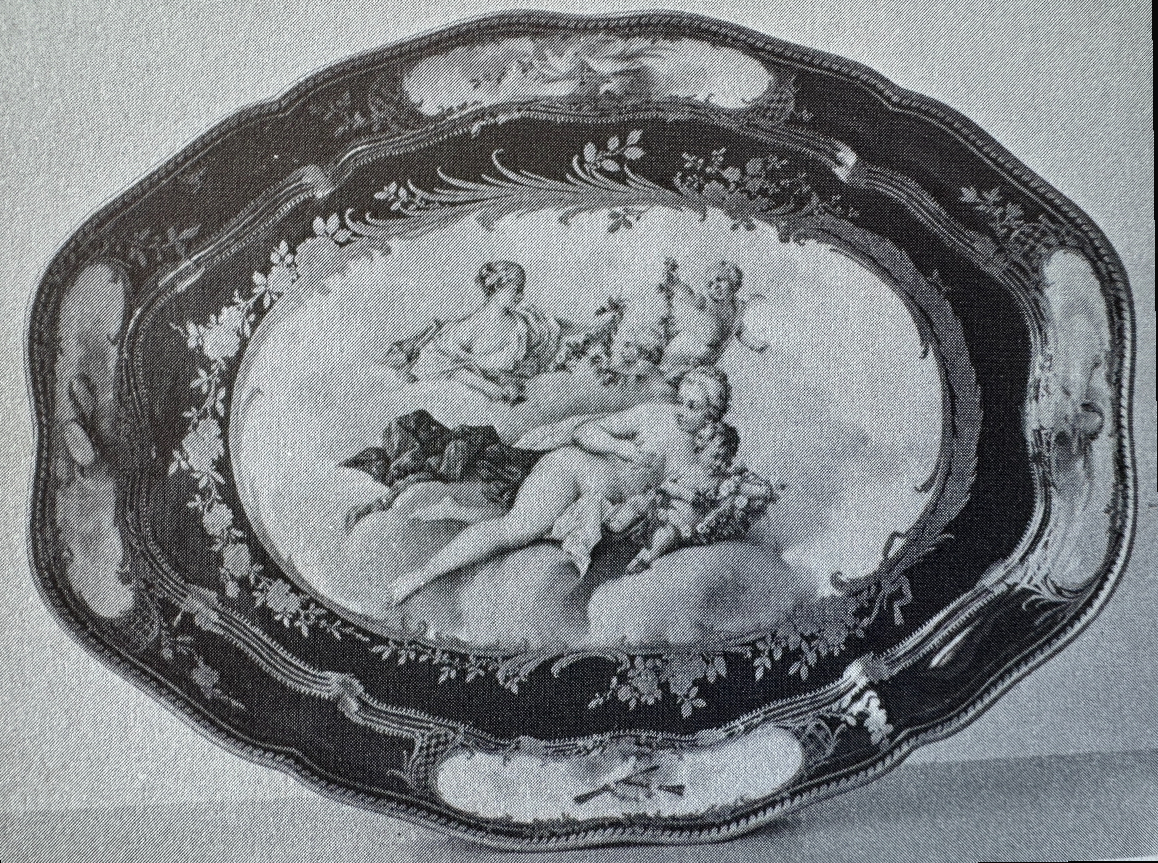
There is a tea-tray in the Munich Museum which is so exactly related to this cup, we speculate it may be the original for a split-up setting – perhaps a teapot, a coffee/chocolate pot, a sugar bowl, and two cups & saucers sat on this as a dejeuner set. The main scene is Venus and attendant cherubs amongst clouts, while the small panels in the border feature trophies, with the borders around each being the exact leaf & flower design seen on this cup. There is an identical dentil border to the rim.

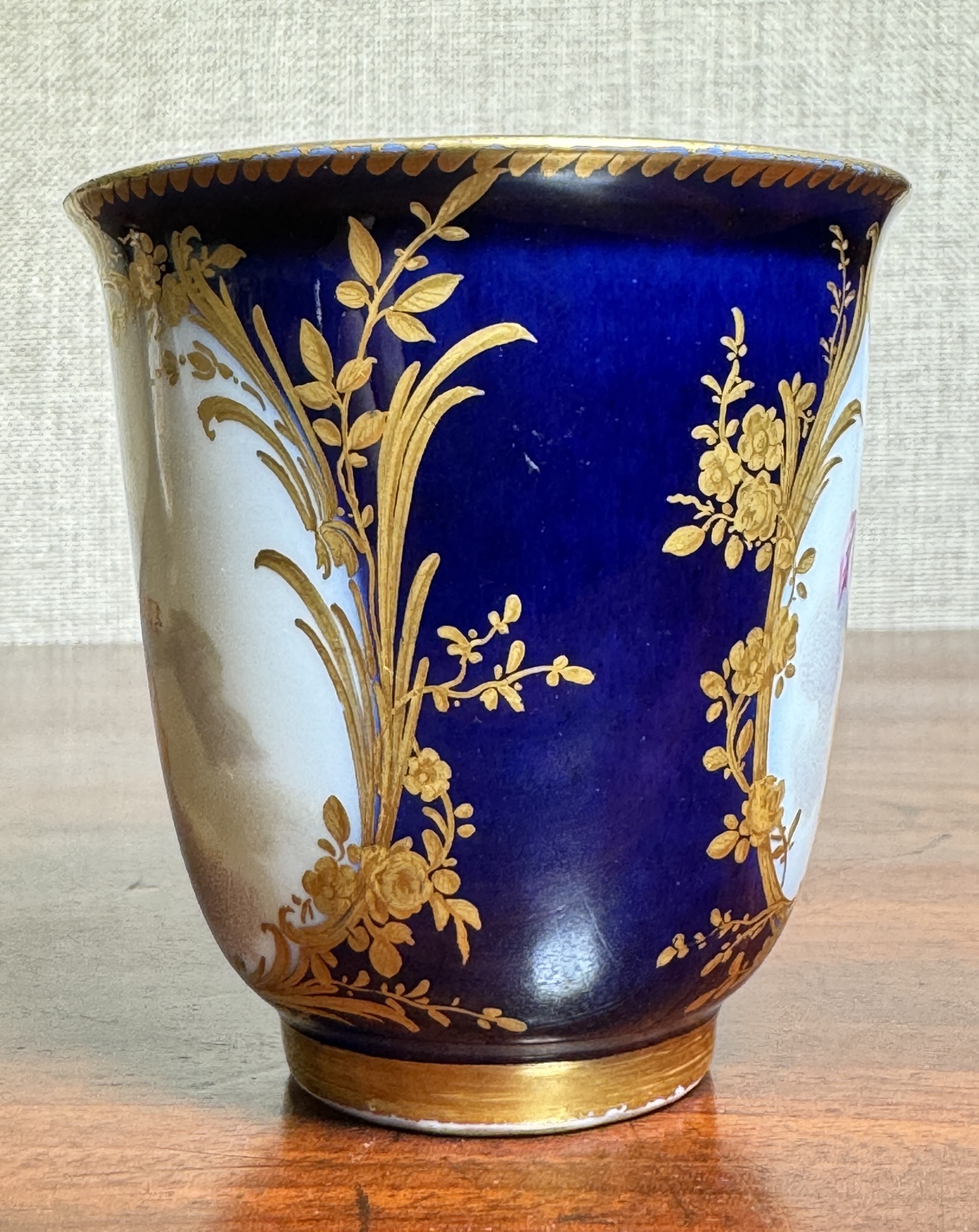
Above is a detail from Hermann Jedding ‘Meissen Porcelain of the 18th century’ p 104, pl. 179, showing a tray with the exact same figures, ground and fine gilt borders, described as being painted by Johann Georg Loehnig, who “…preferred preferred vessels in royal blue… which he painted with putti, lovers or portraits, often using the stippled dot technique”. He describes the borders: “etched gold tendrils and flowers… the refined delicacy of French taste was also sought in Meissen”.
The tray illustrated is in the Munich Bayerisches Nationalmuseum , dated 1770.
Compare to the border of these beakers – it’s the same, and assumed to therefore be from the same unique commission, circa 1770. This was not a ‘pattern’ of the firm, and each commission would be different in detail, such as the gilt borders. The cherubs and their clouds appear identical in concept – although no colour photograph of the tray could be found.
A tray ‘manner of’ Loehnig sold at Christies, 2008: https://www.christies.com/en/lot/lot-5053653
Lempertz example of a complete service:
The V&A has a single example of his work:
Two rare Meissen chocolate cups, of tall beaker form, superbly painted by Johann Georg Loehnig with two panels of cherubs in clouds, in his distinct ‘stipple’ technique, imitating Vincennes/Sèvres products of the mid-18th century, set within ornate leaf & flowers raised & tooled gold frames, the foot with a solid gold band.
Crossed swords mark in underglaze blue to each, also indistinct underglaze ground-painter’s mark, pressnumer ‘.9′ (or 6’) in the foot rim.
Circa 1770

